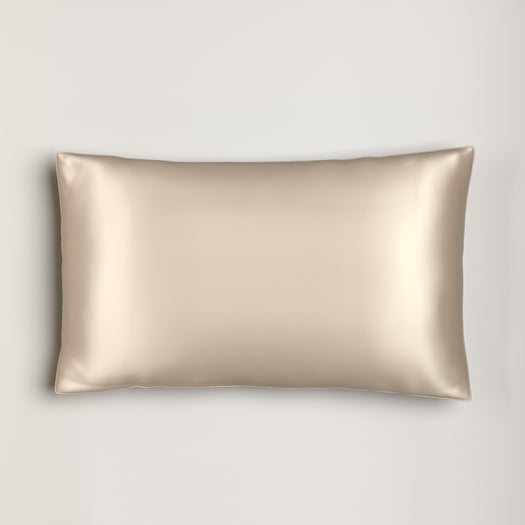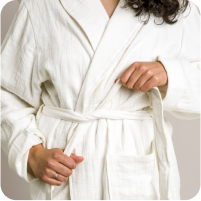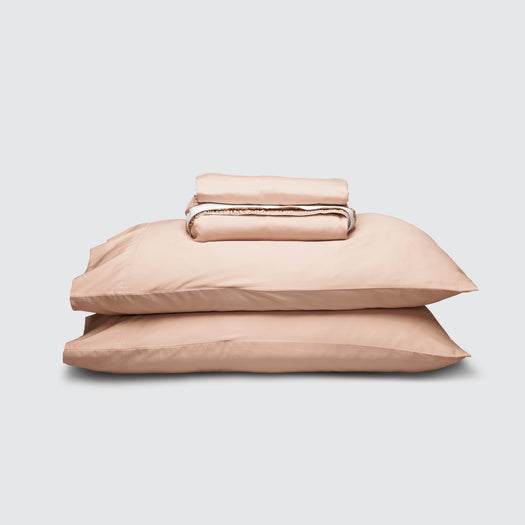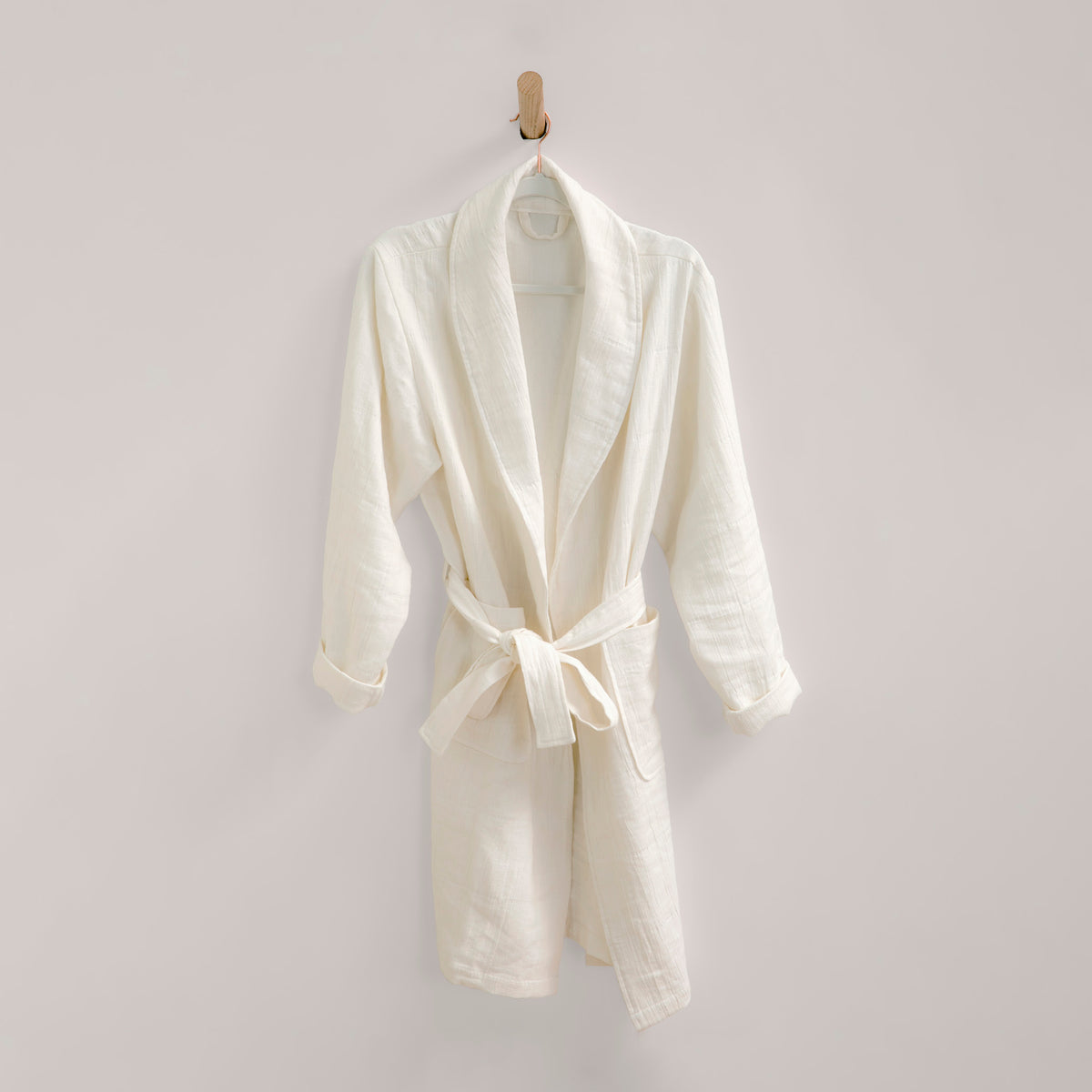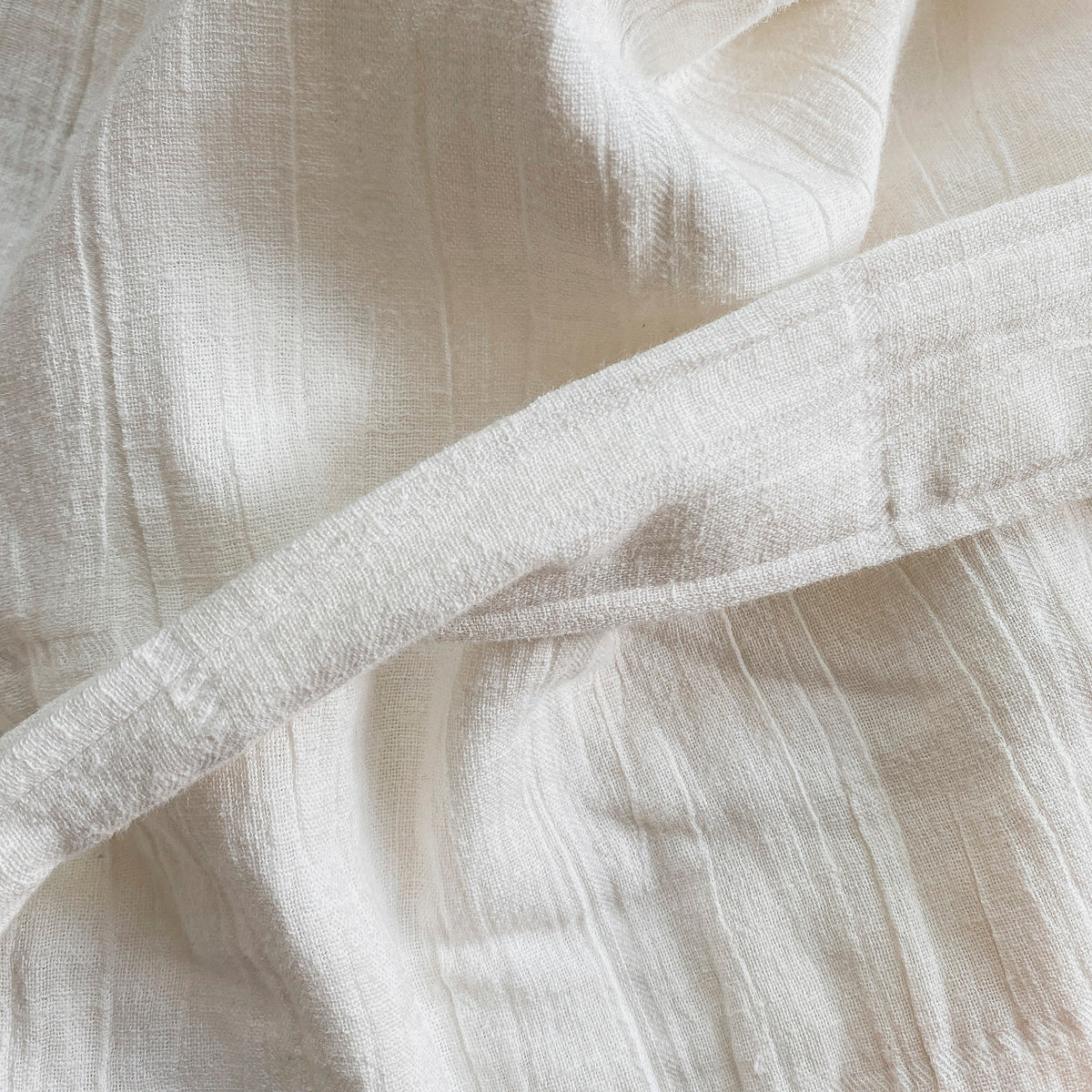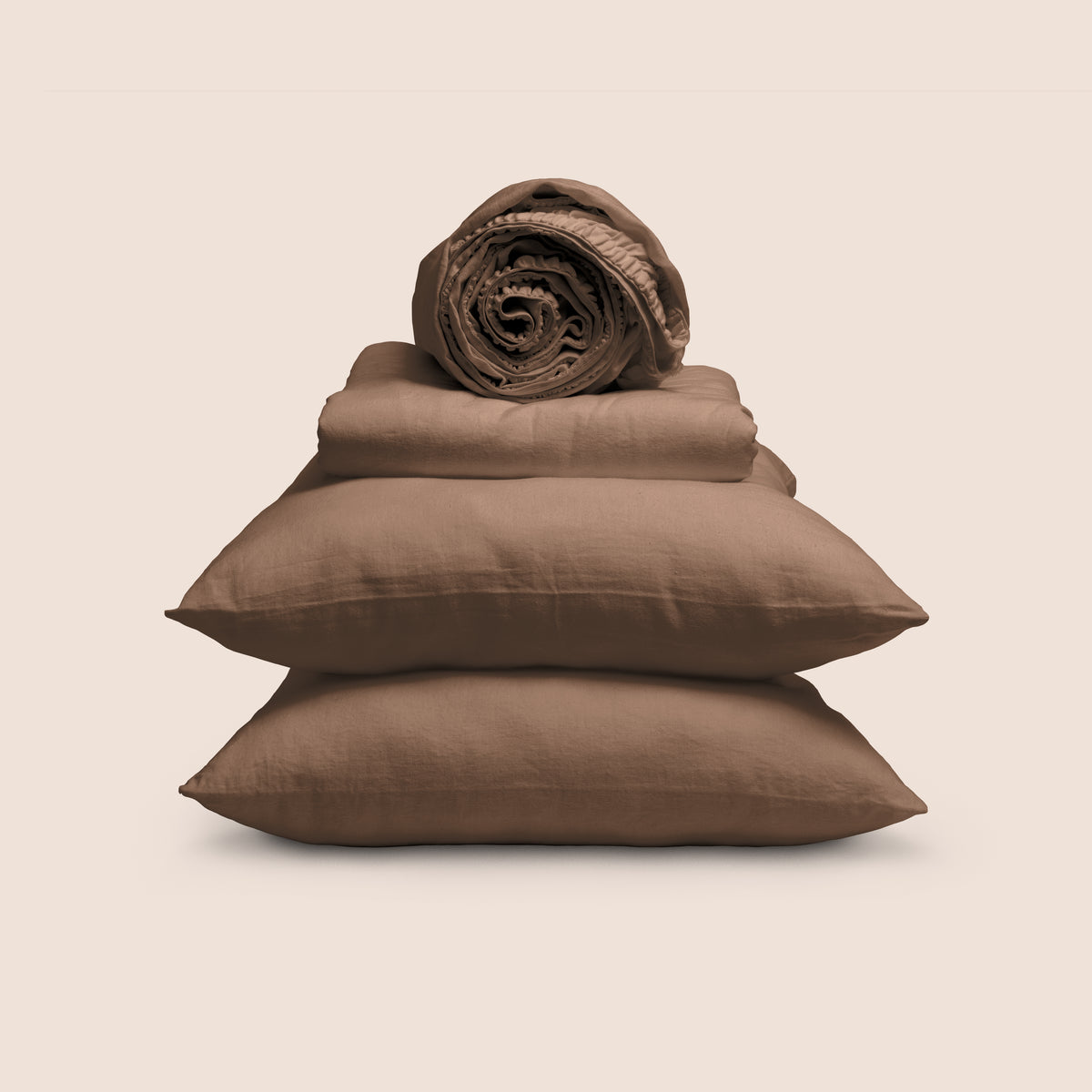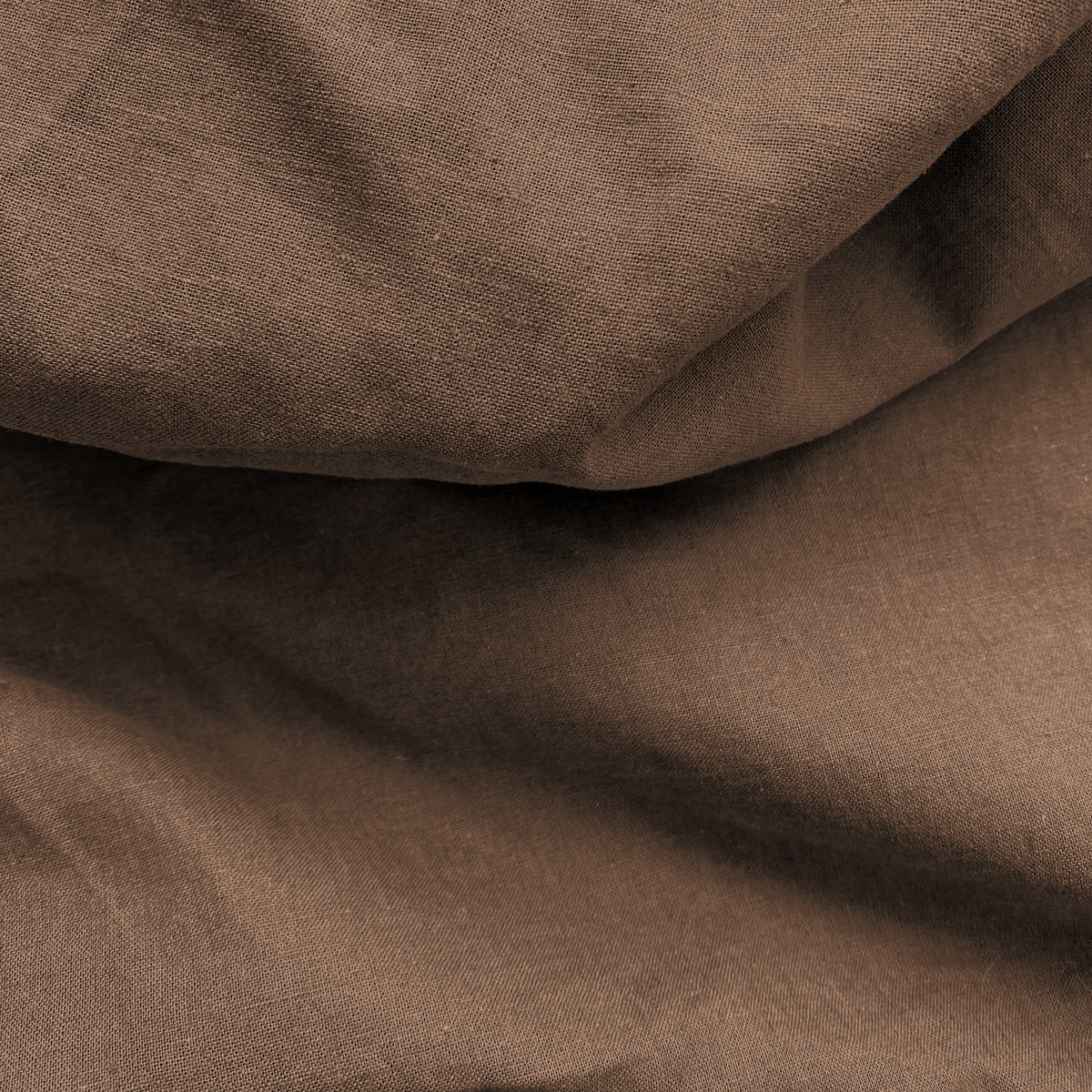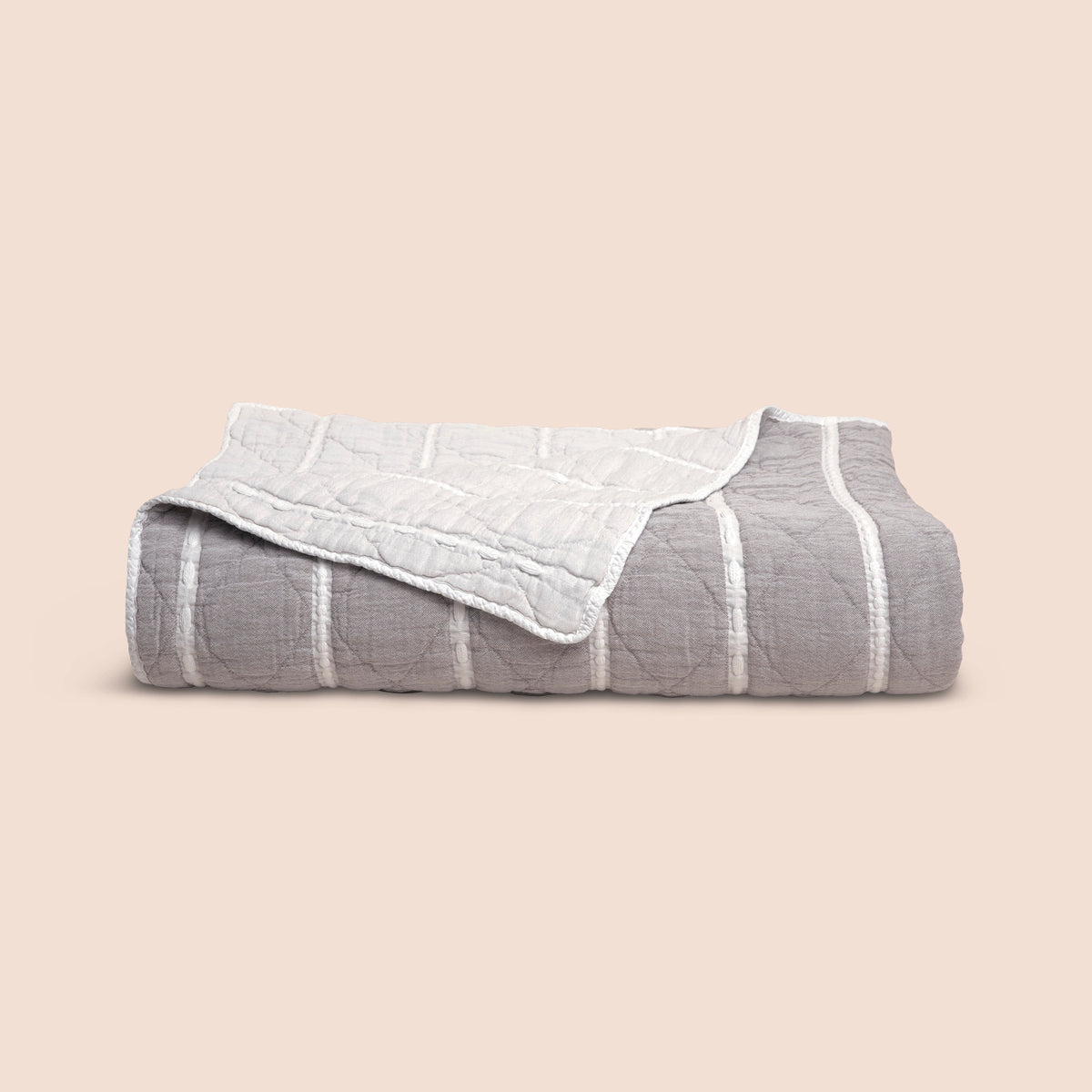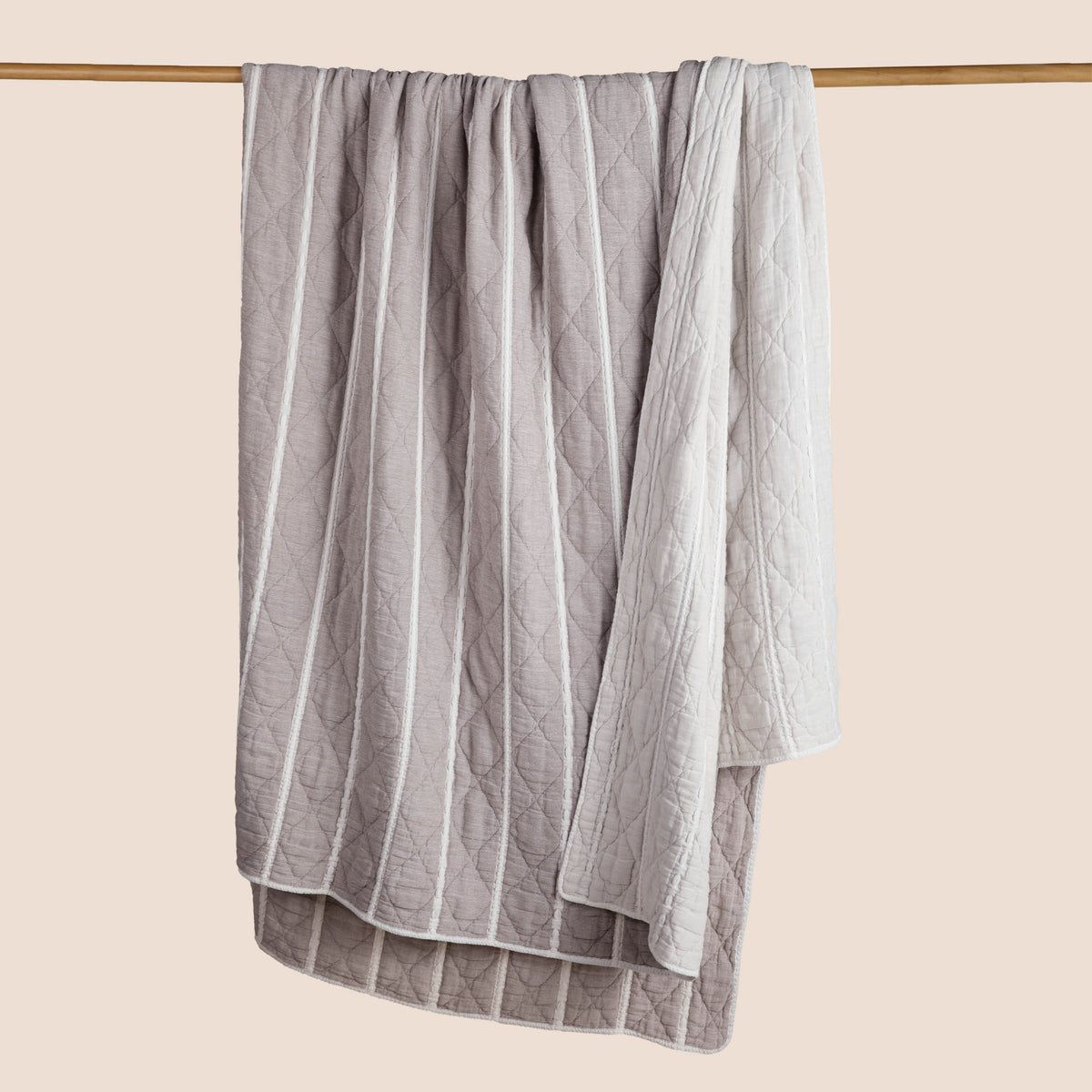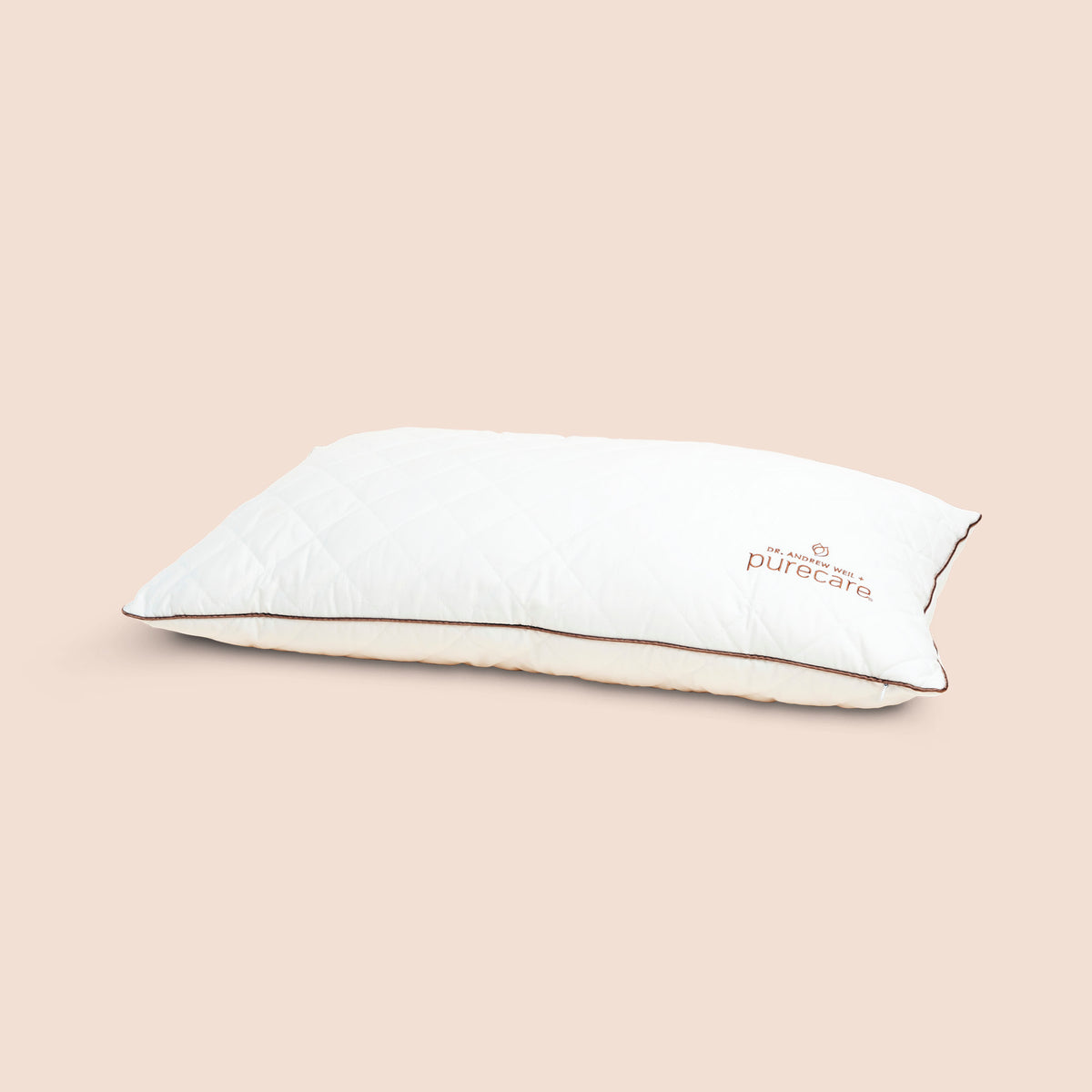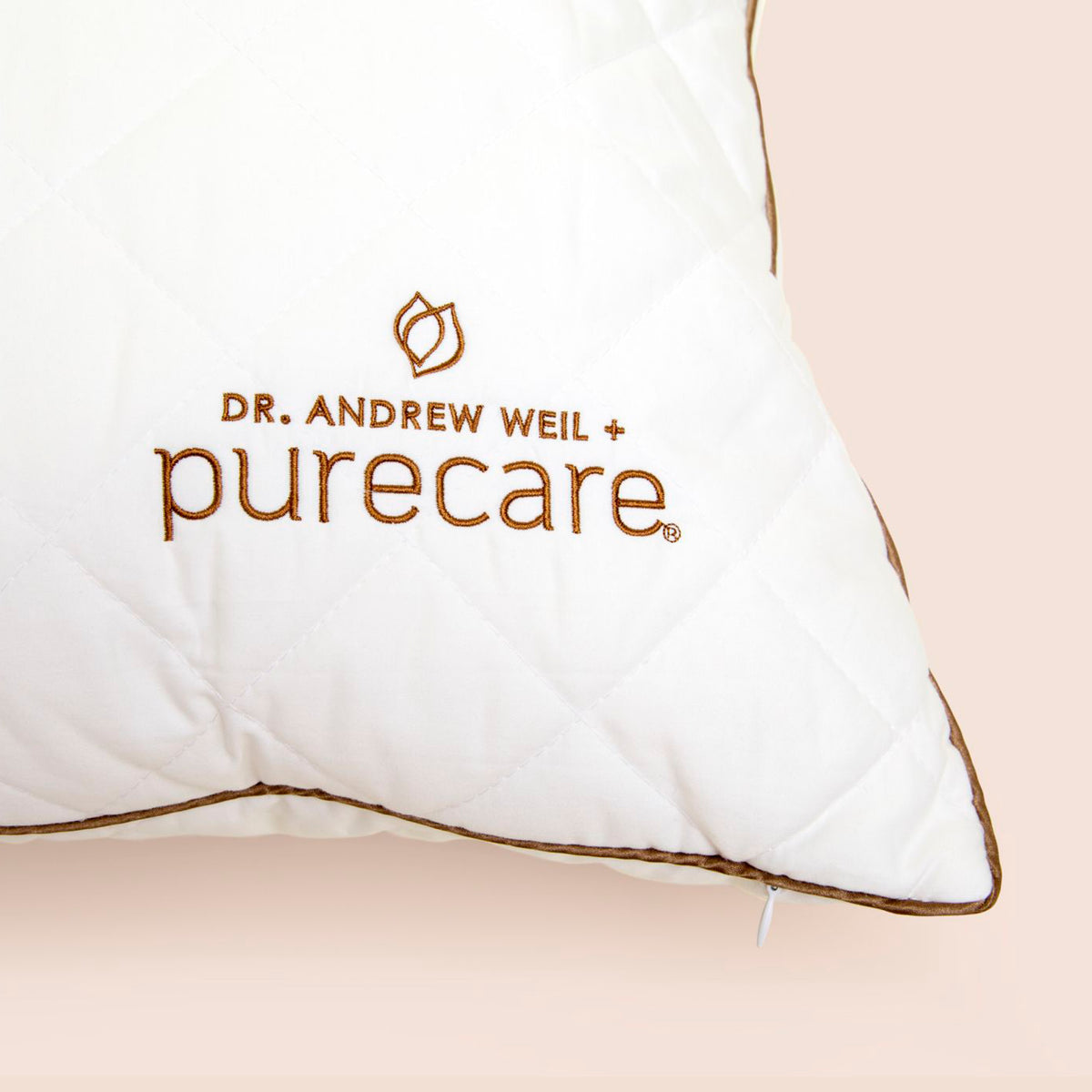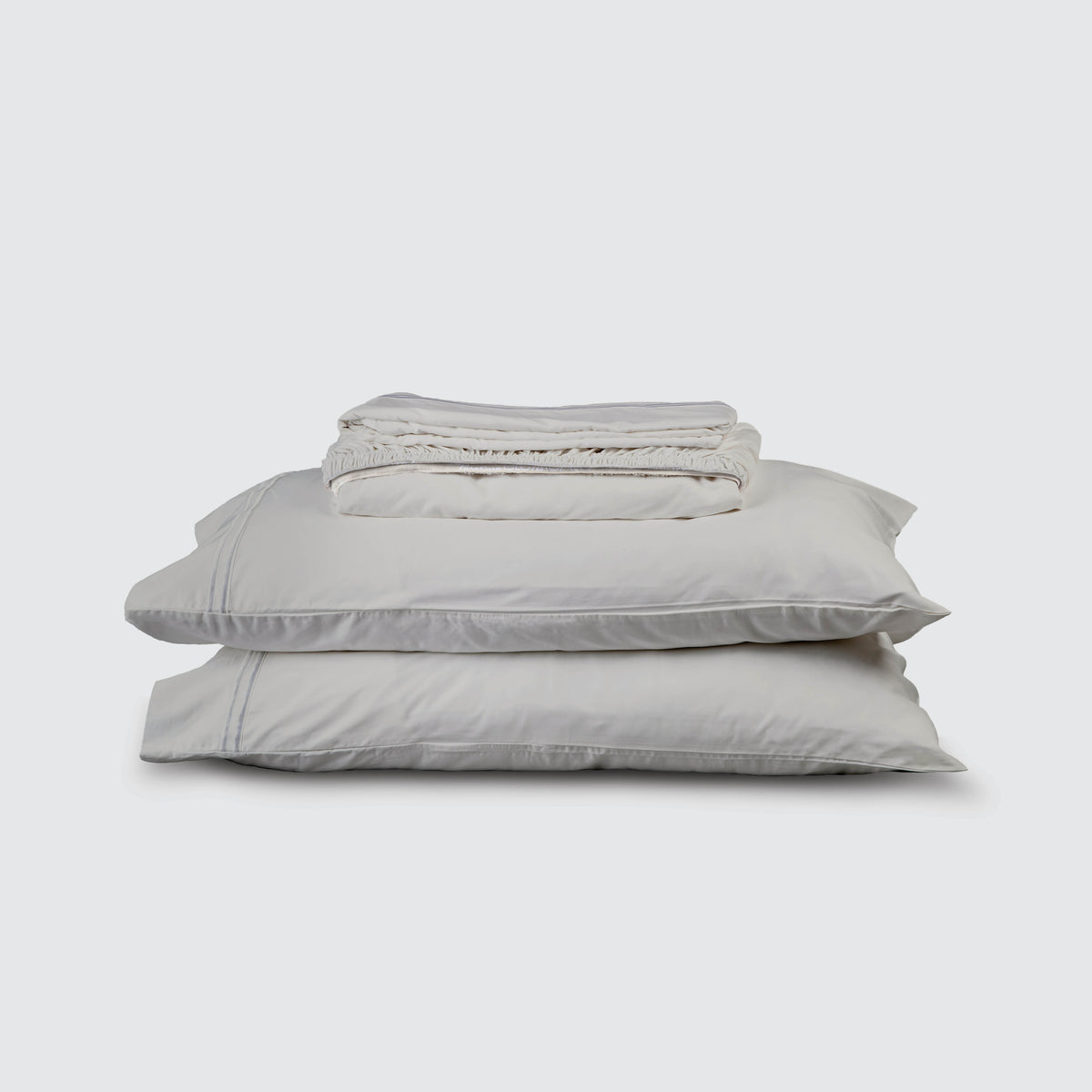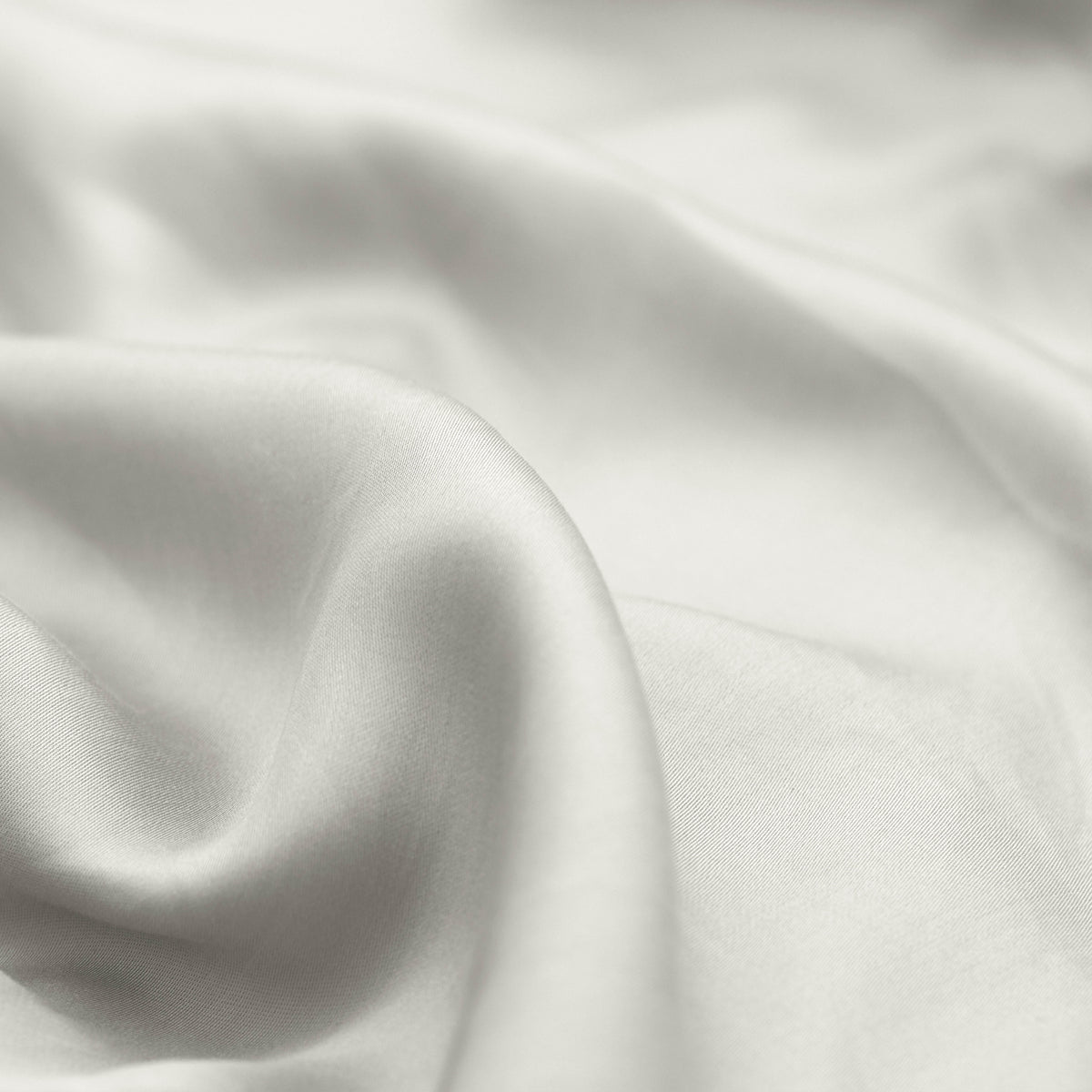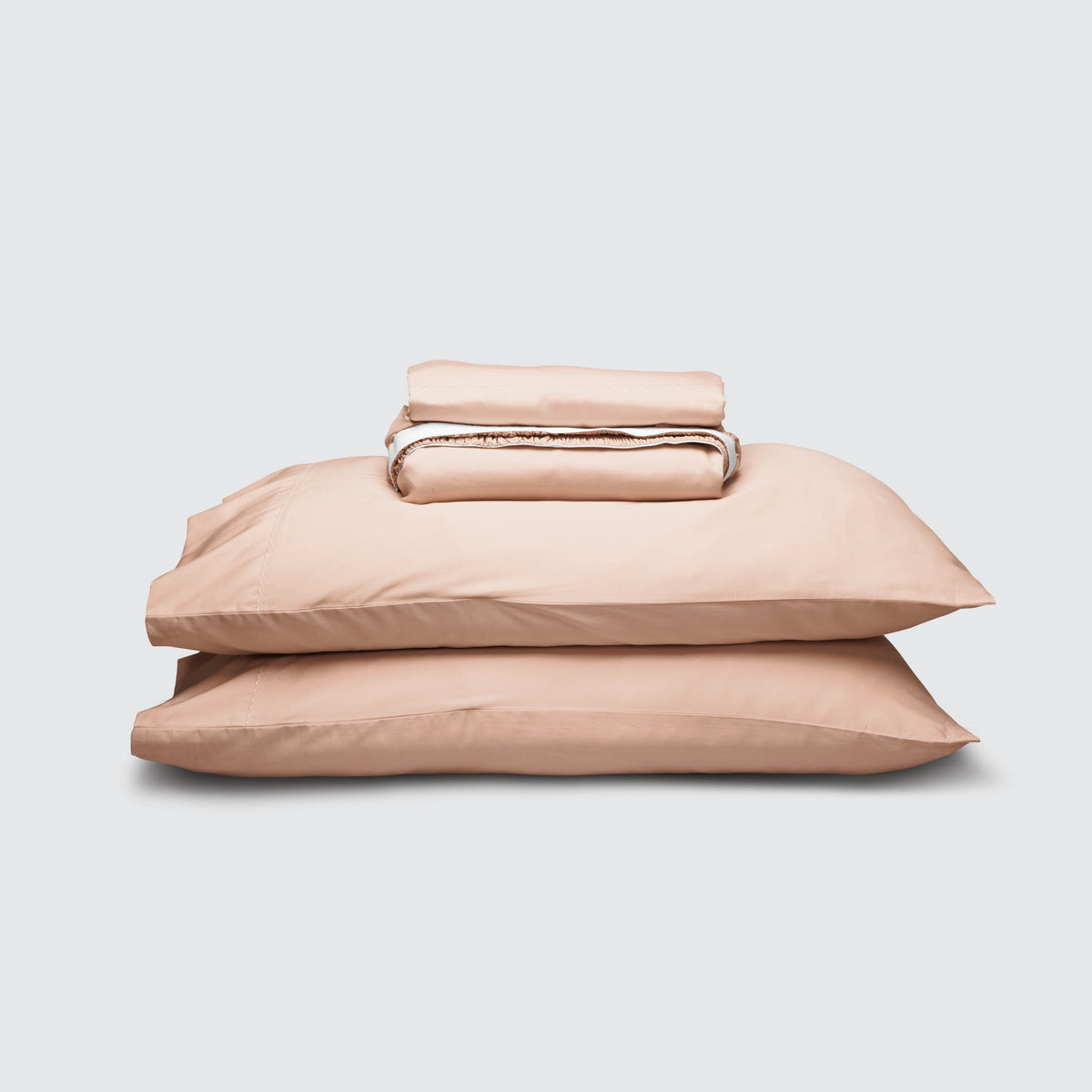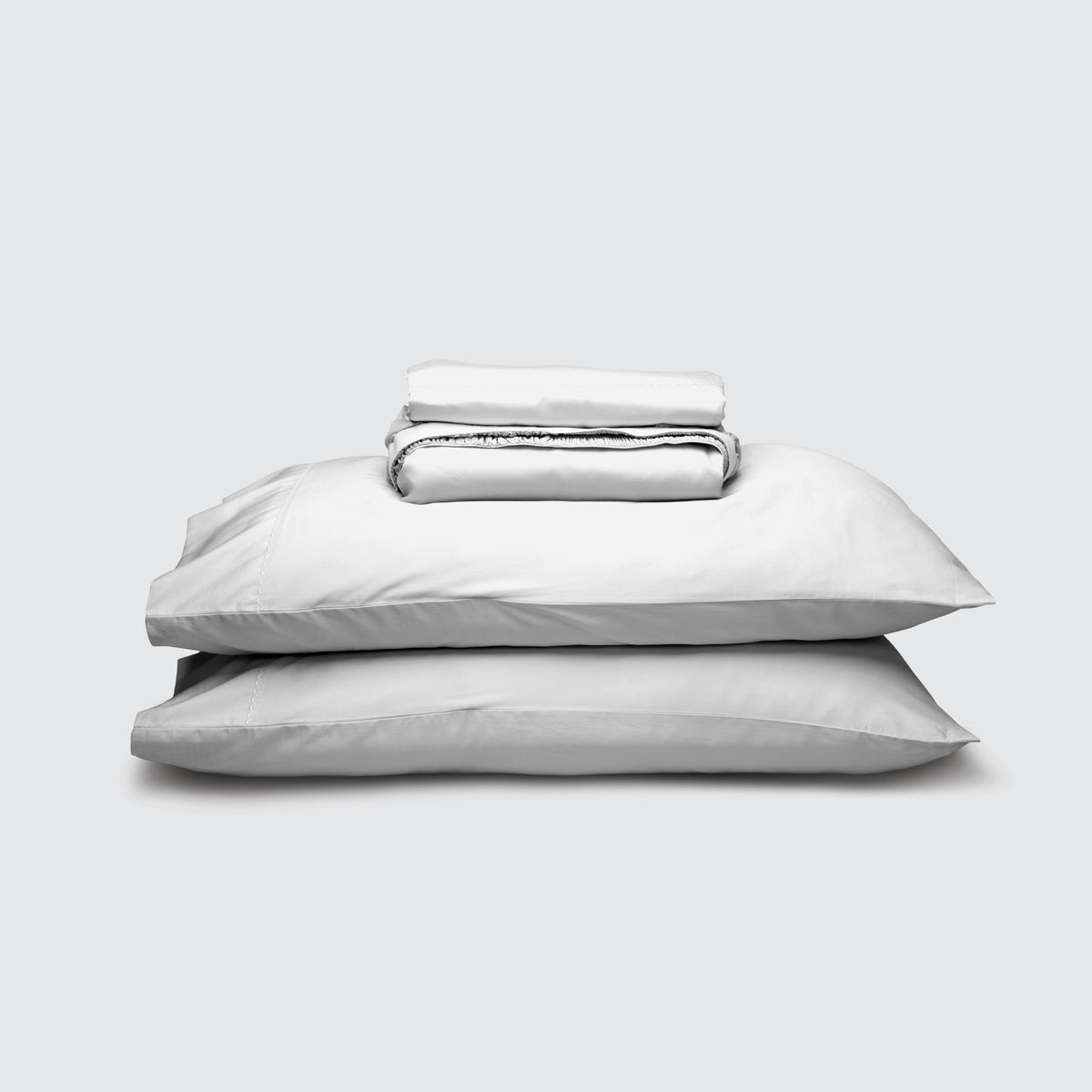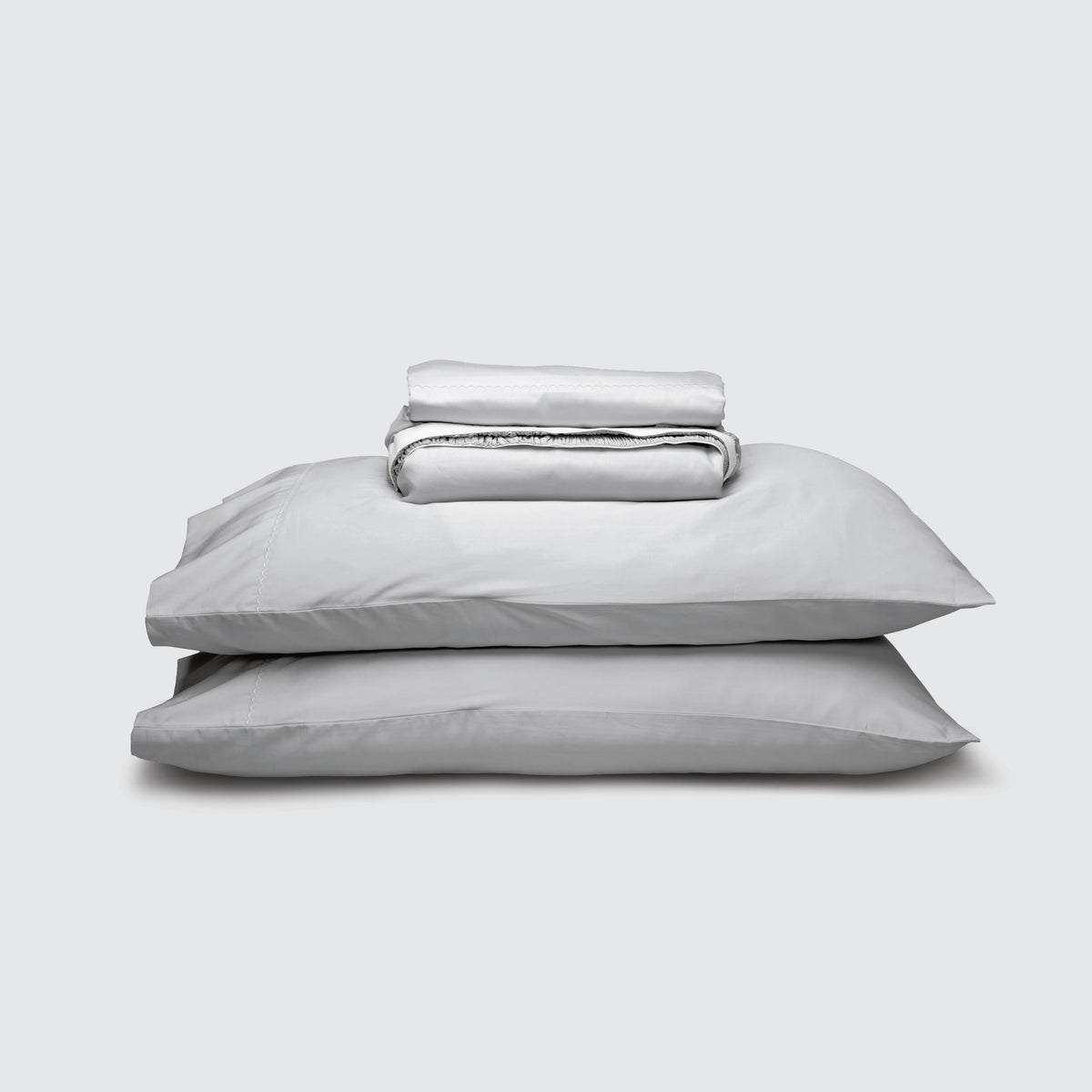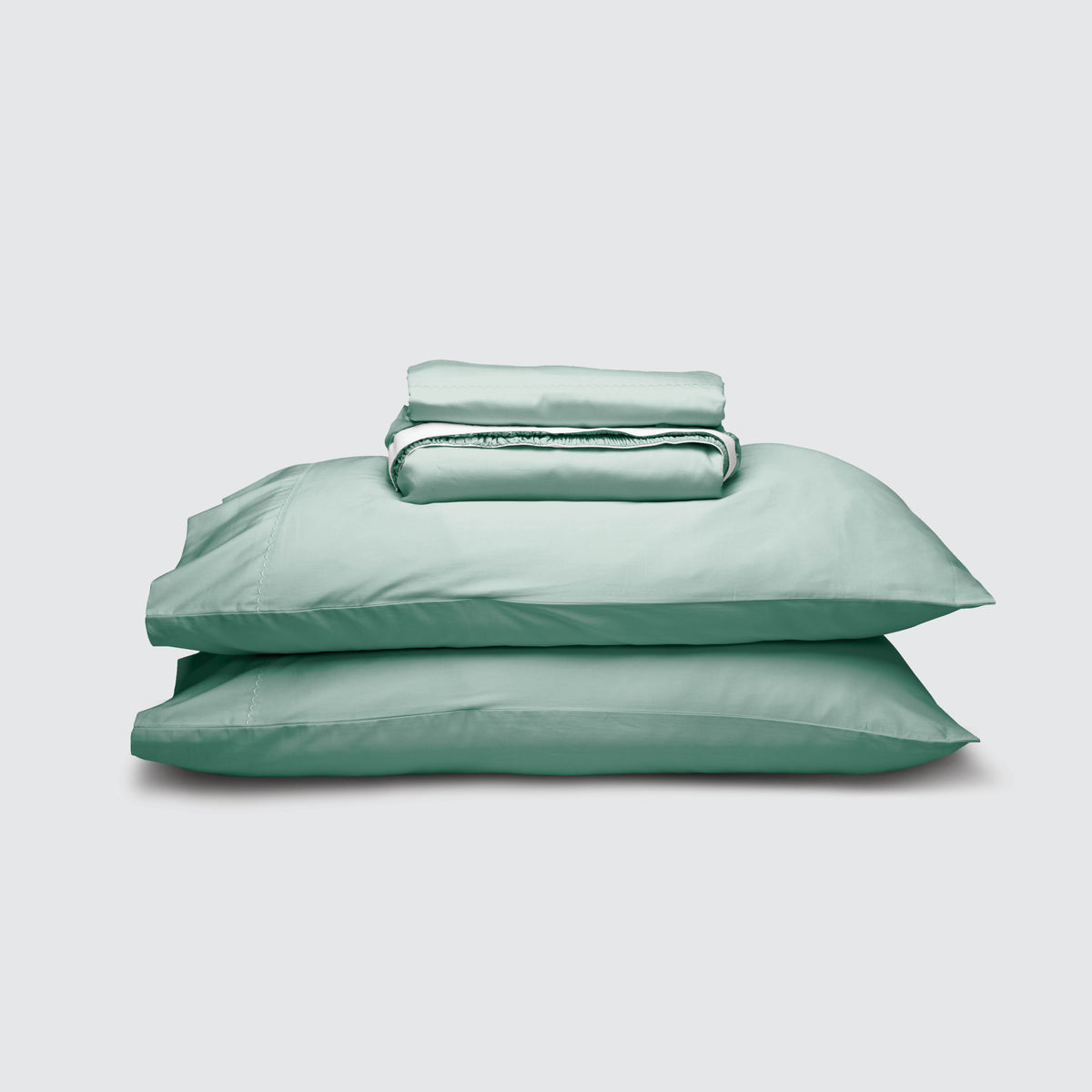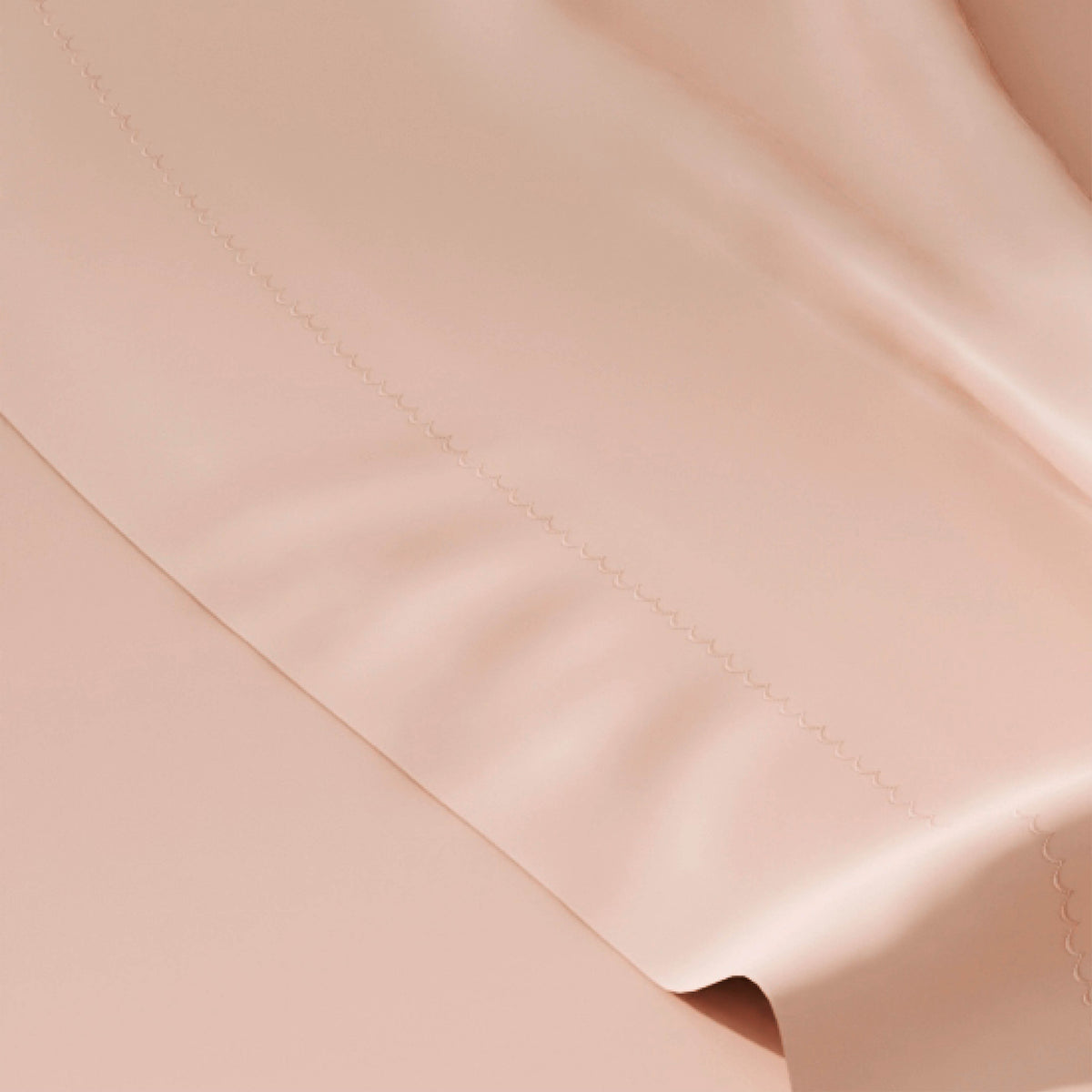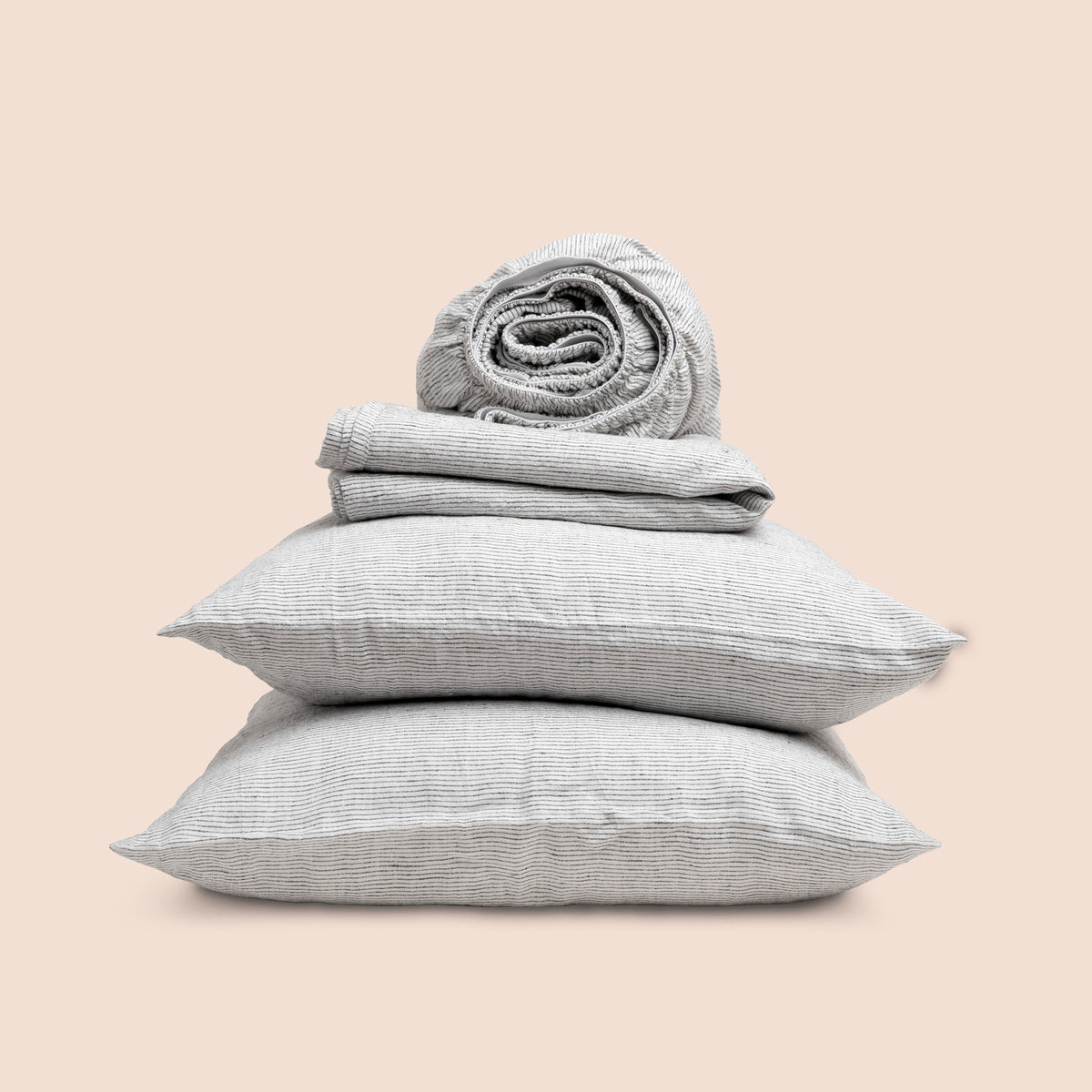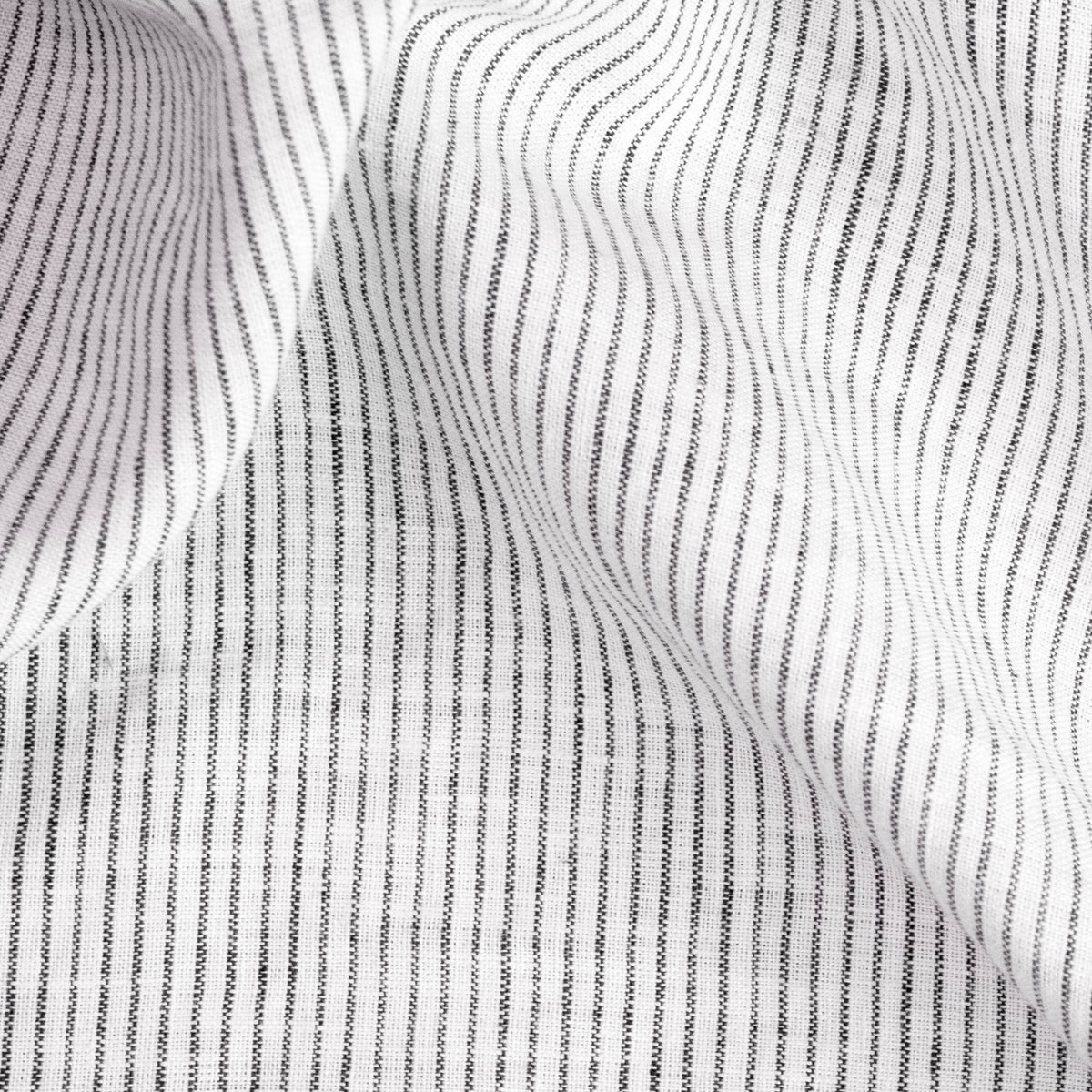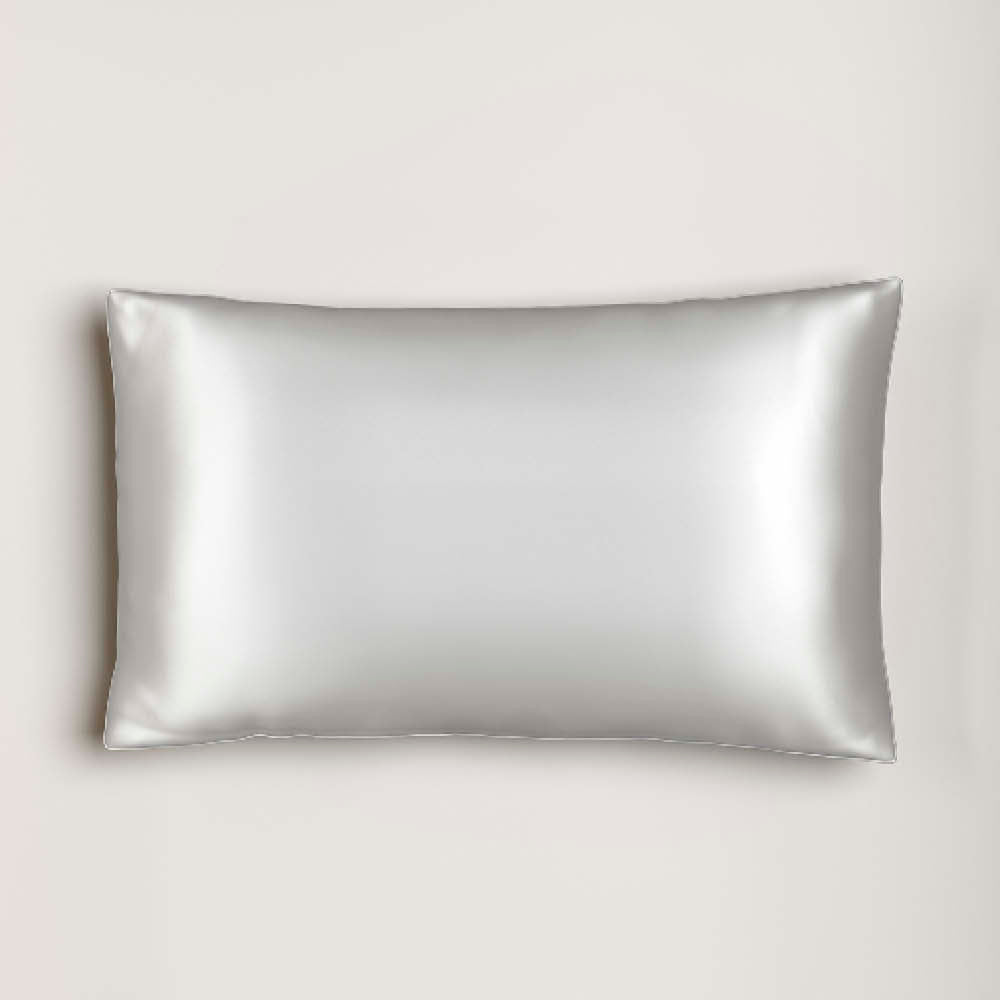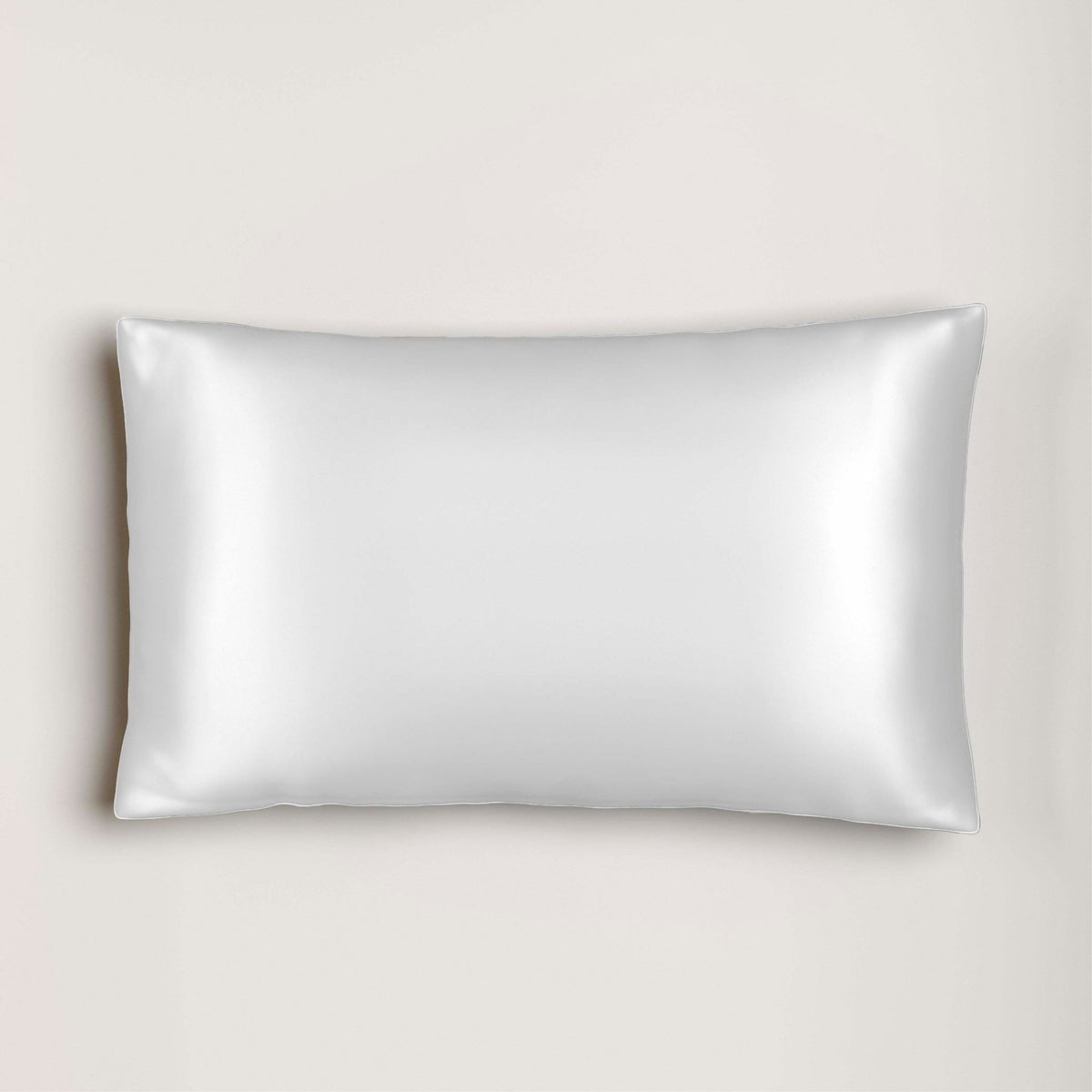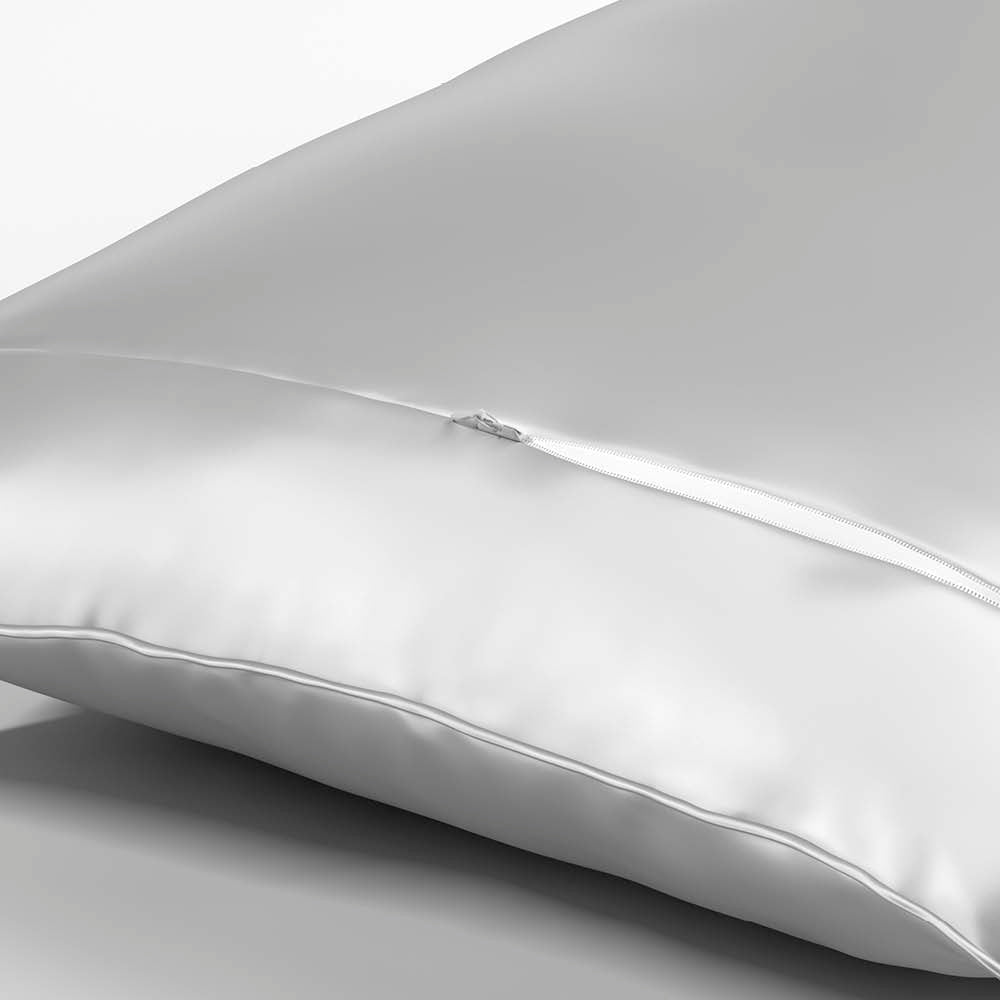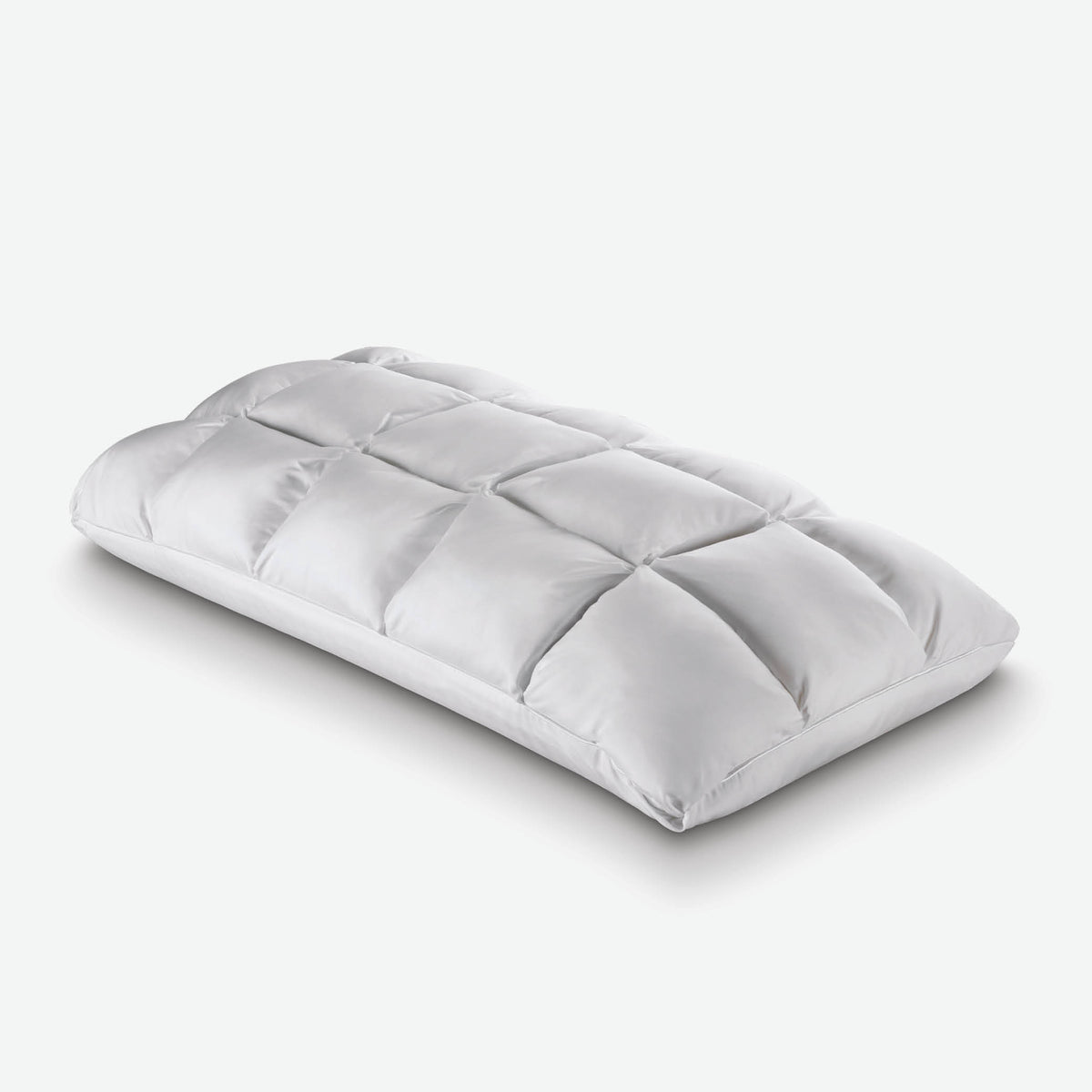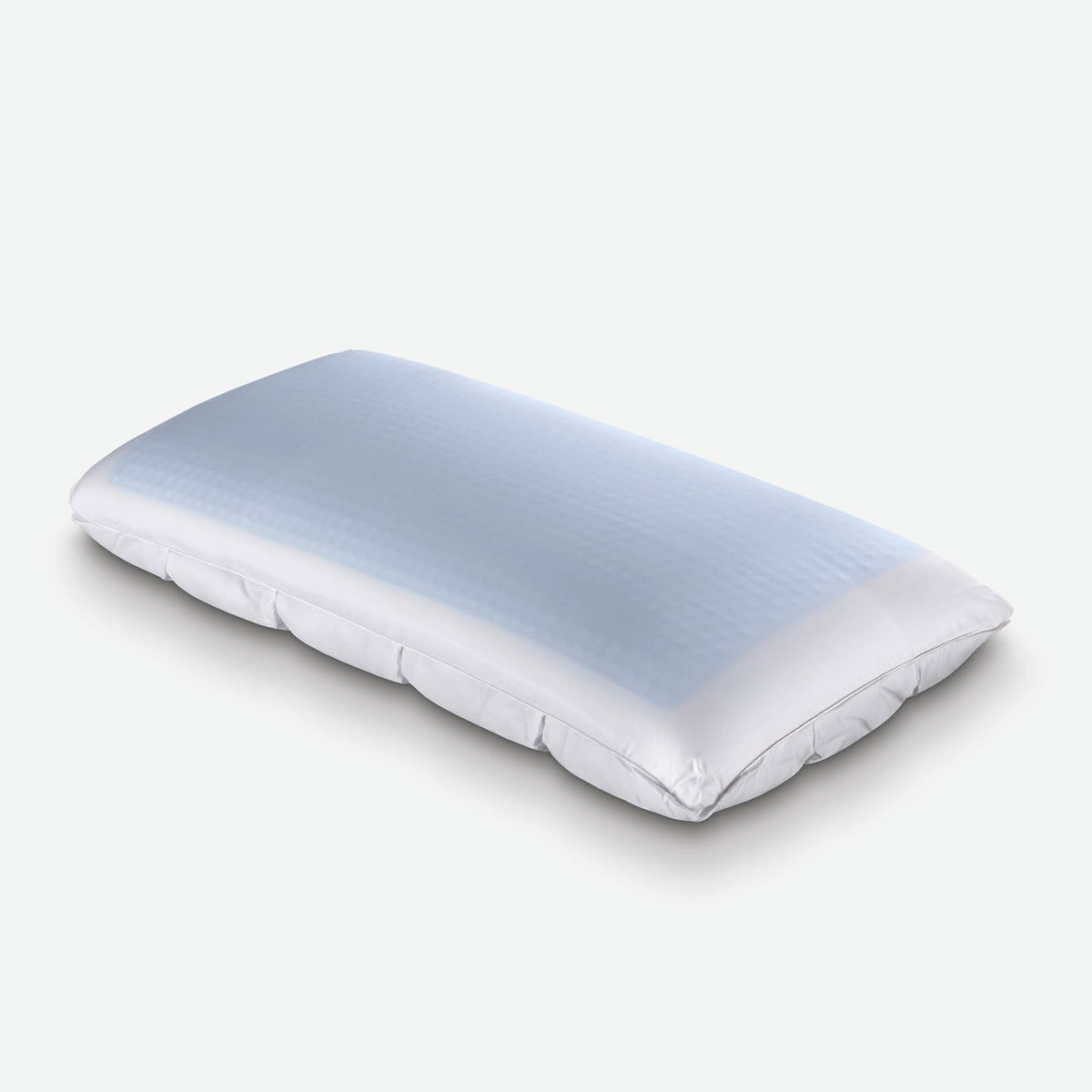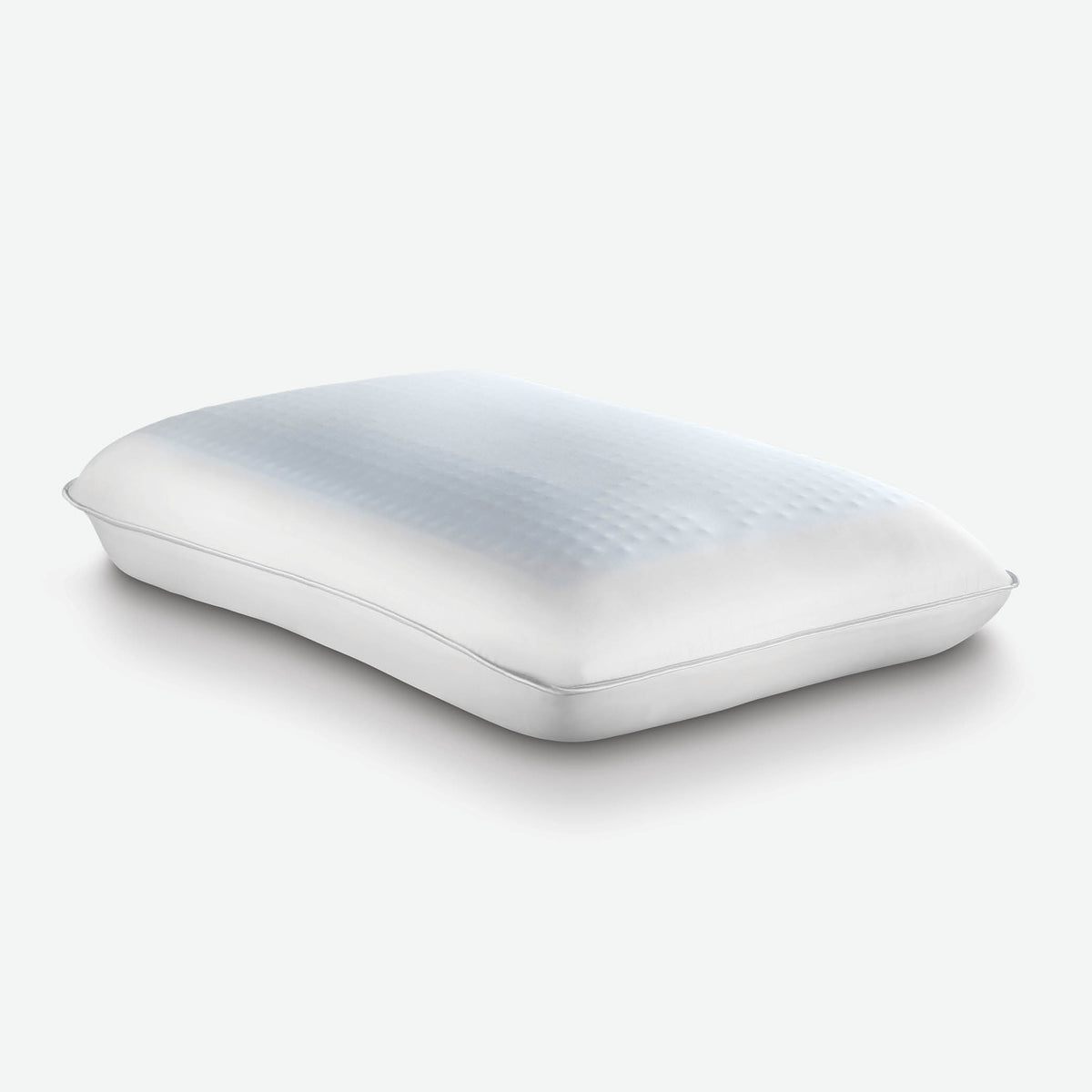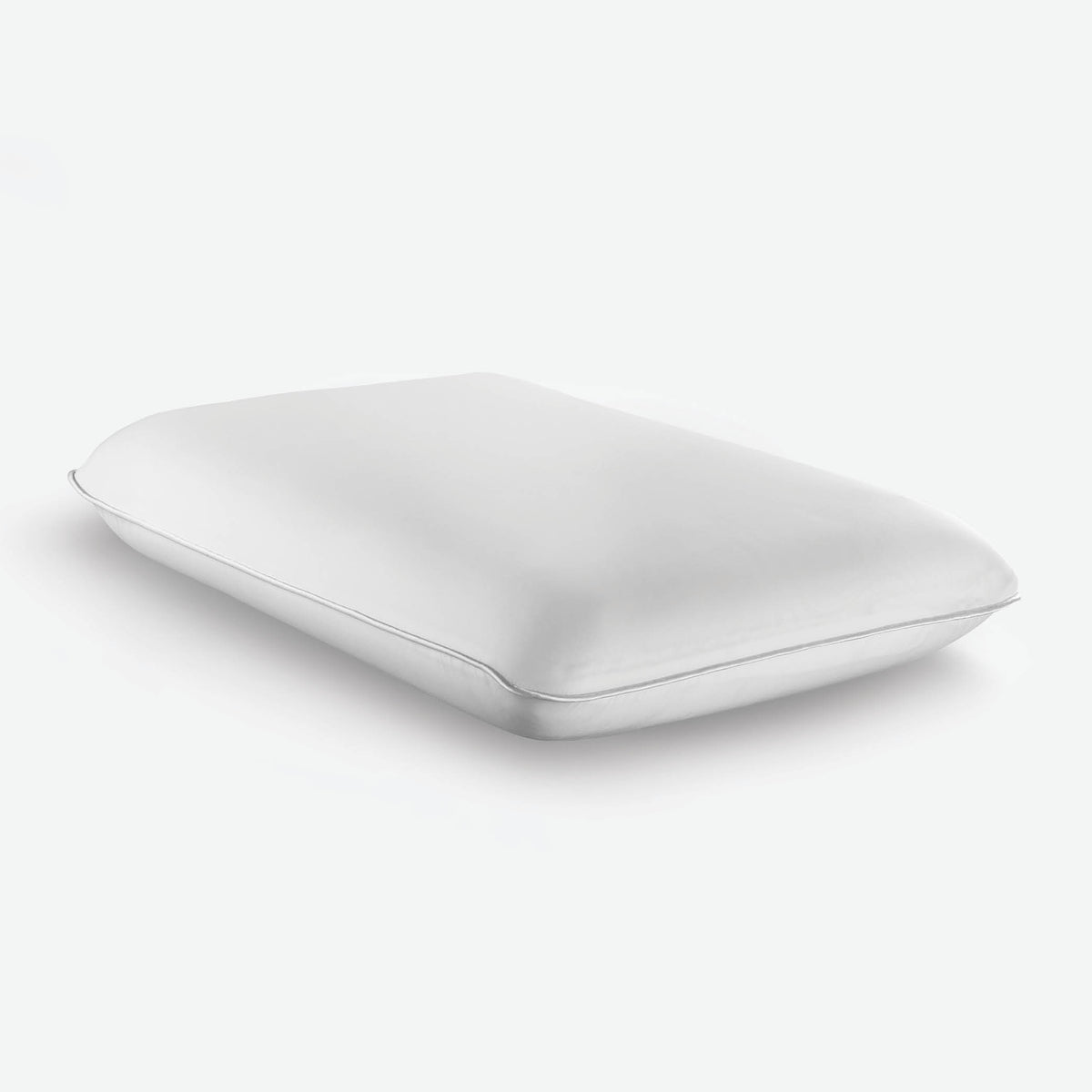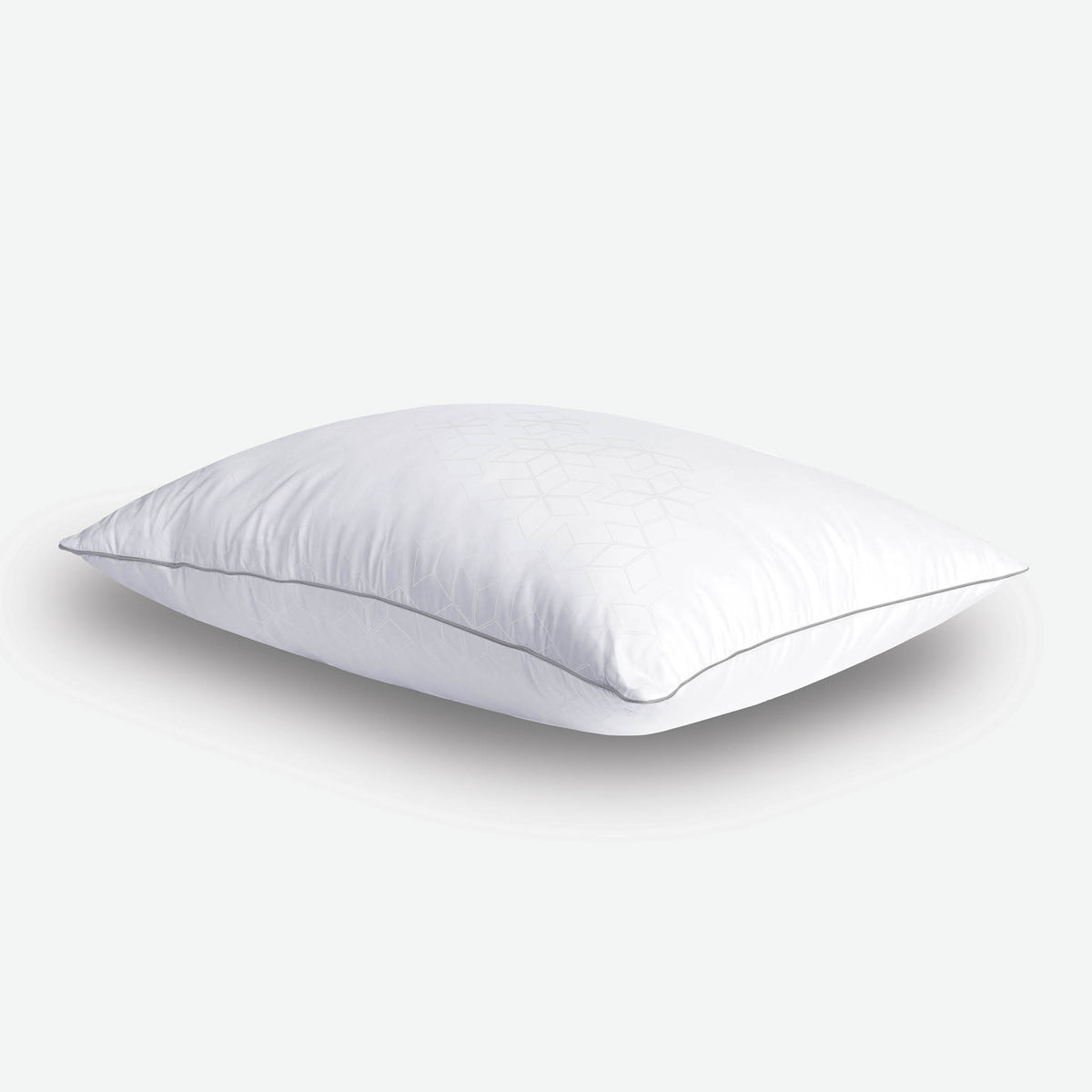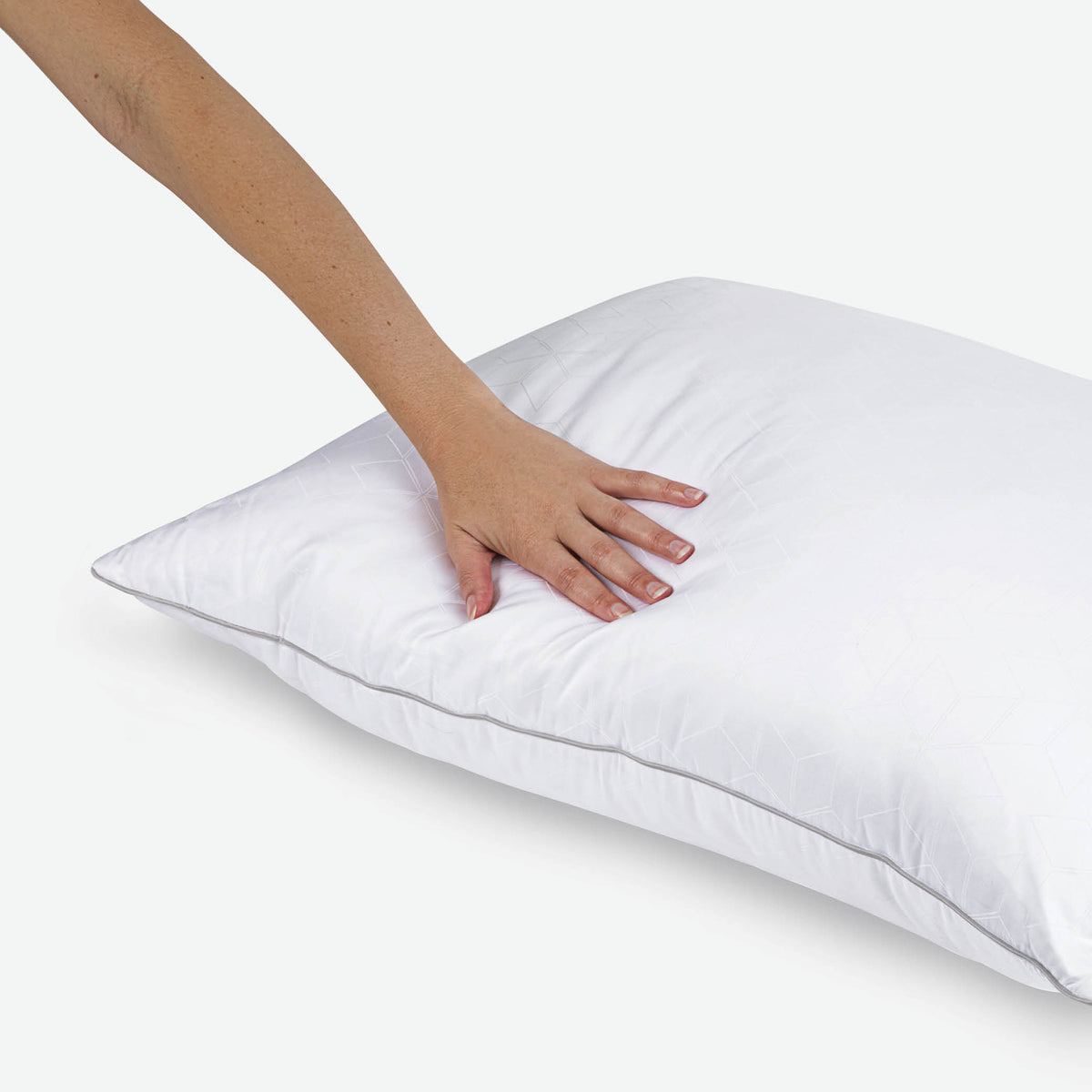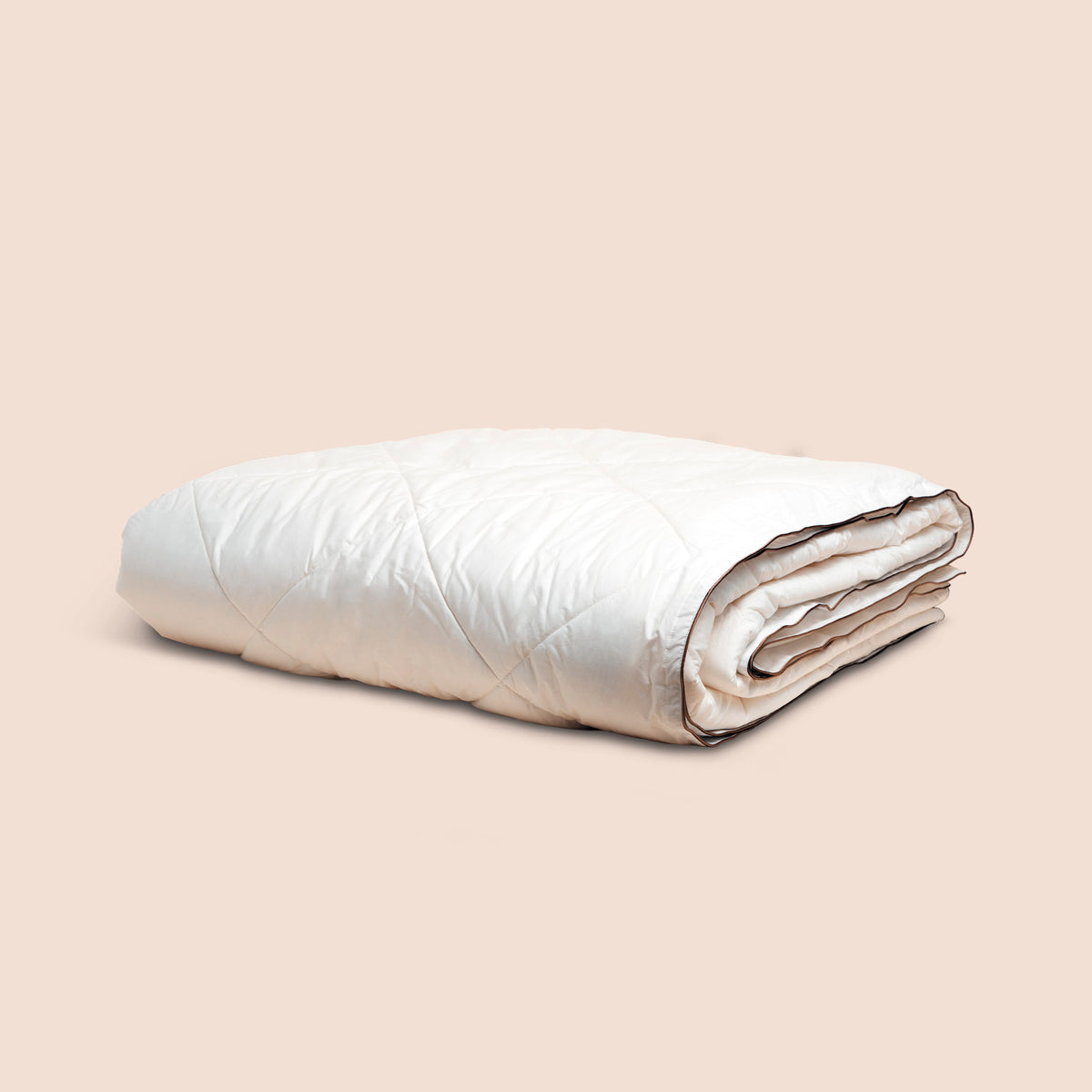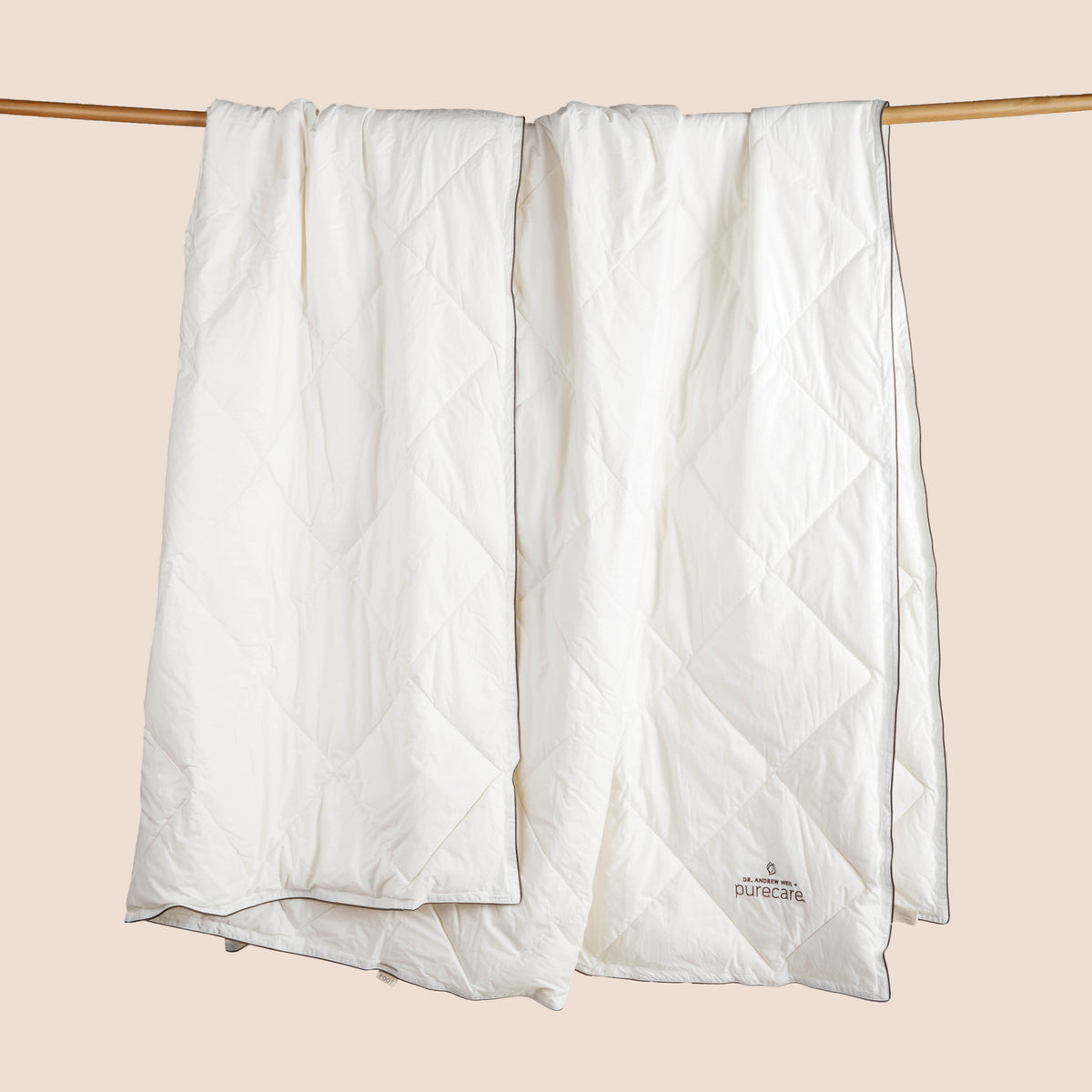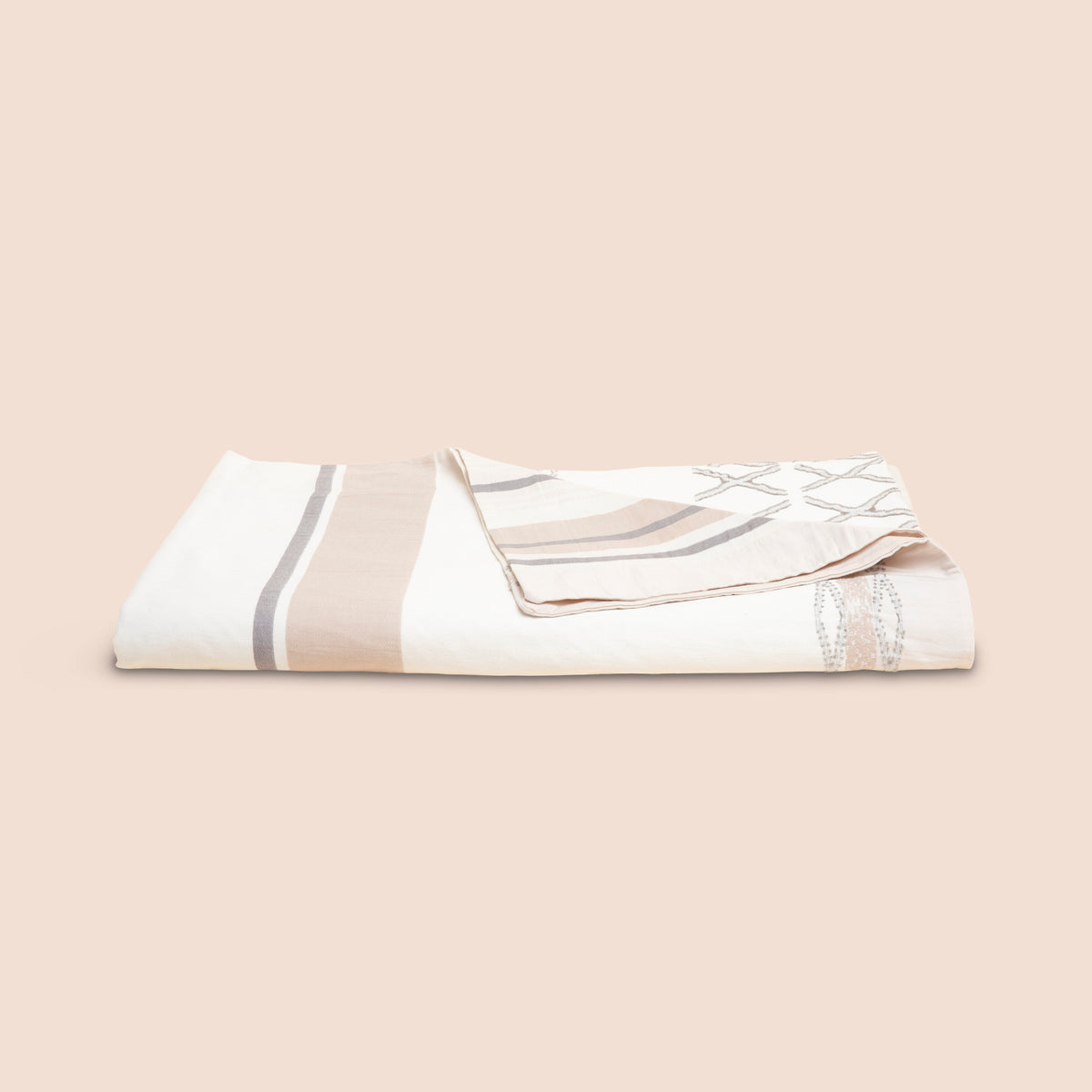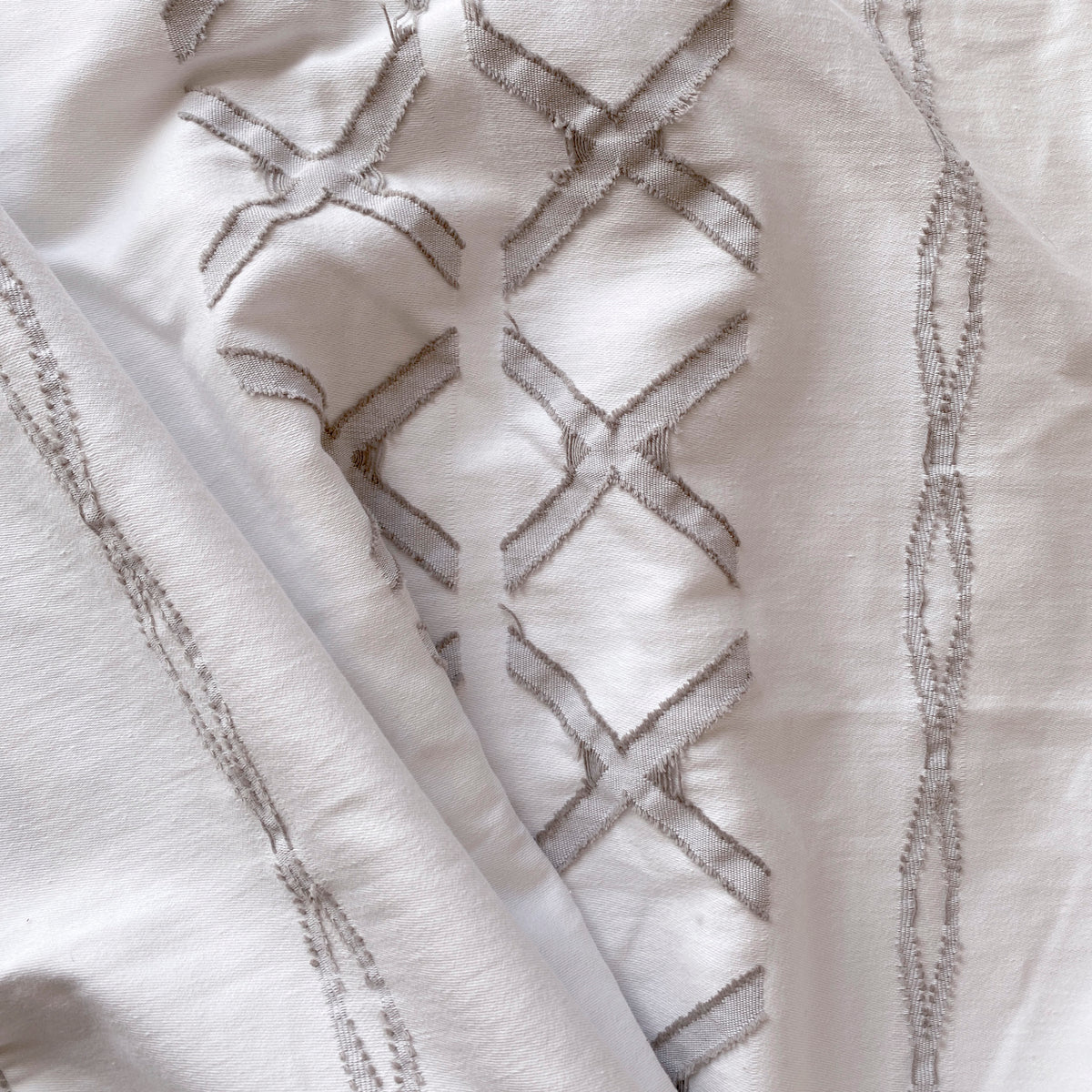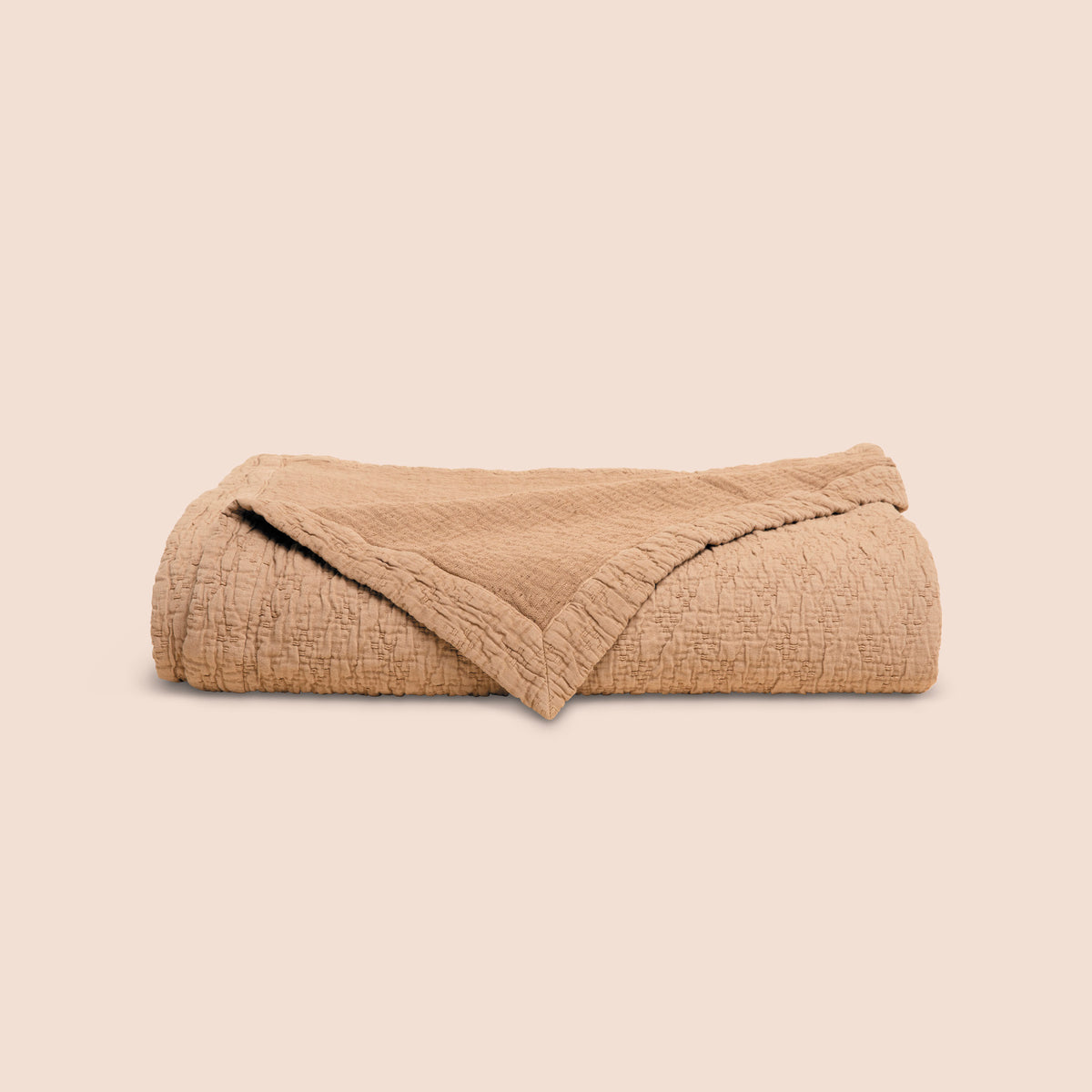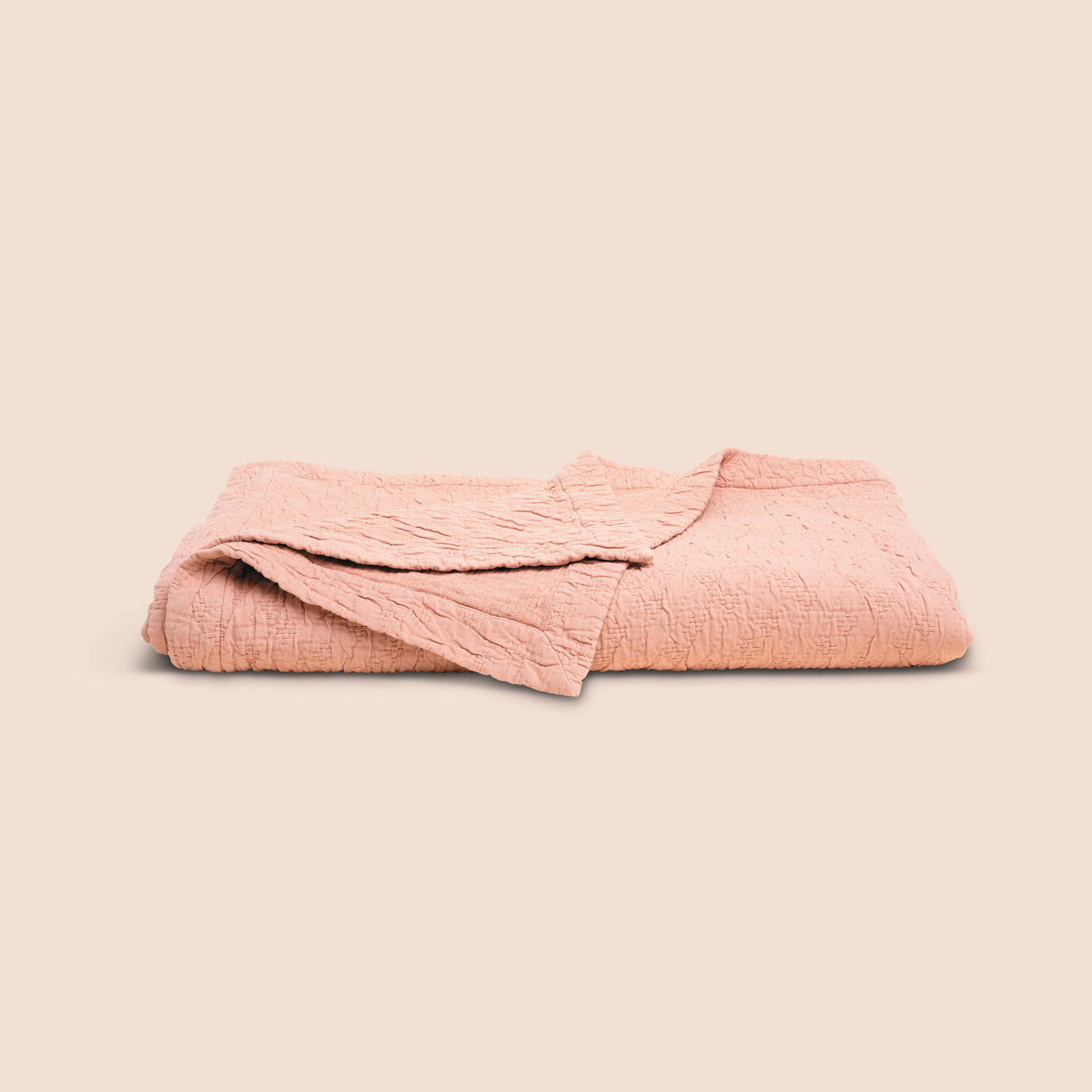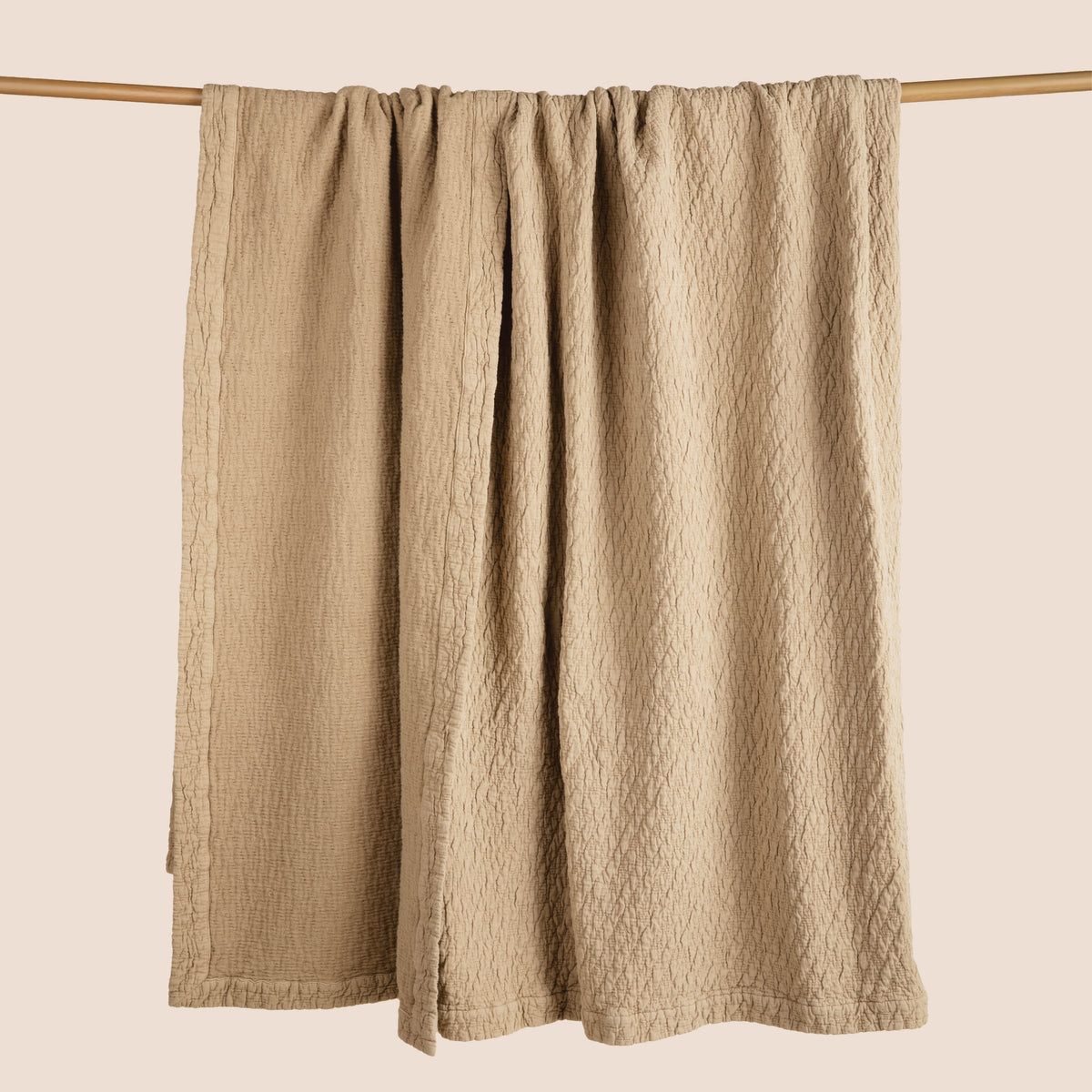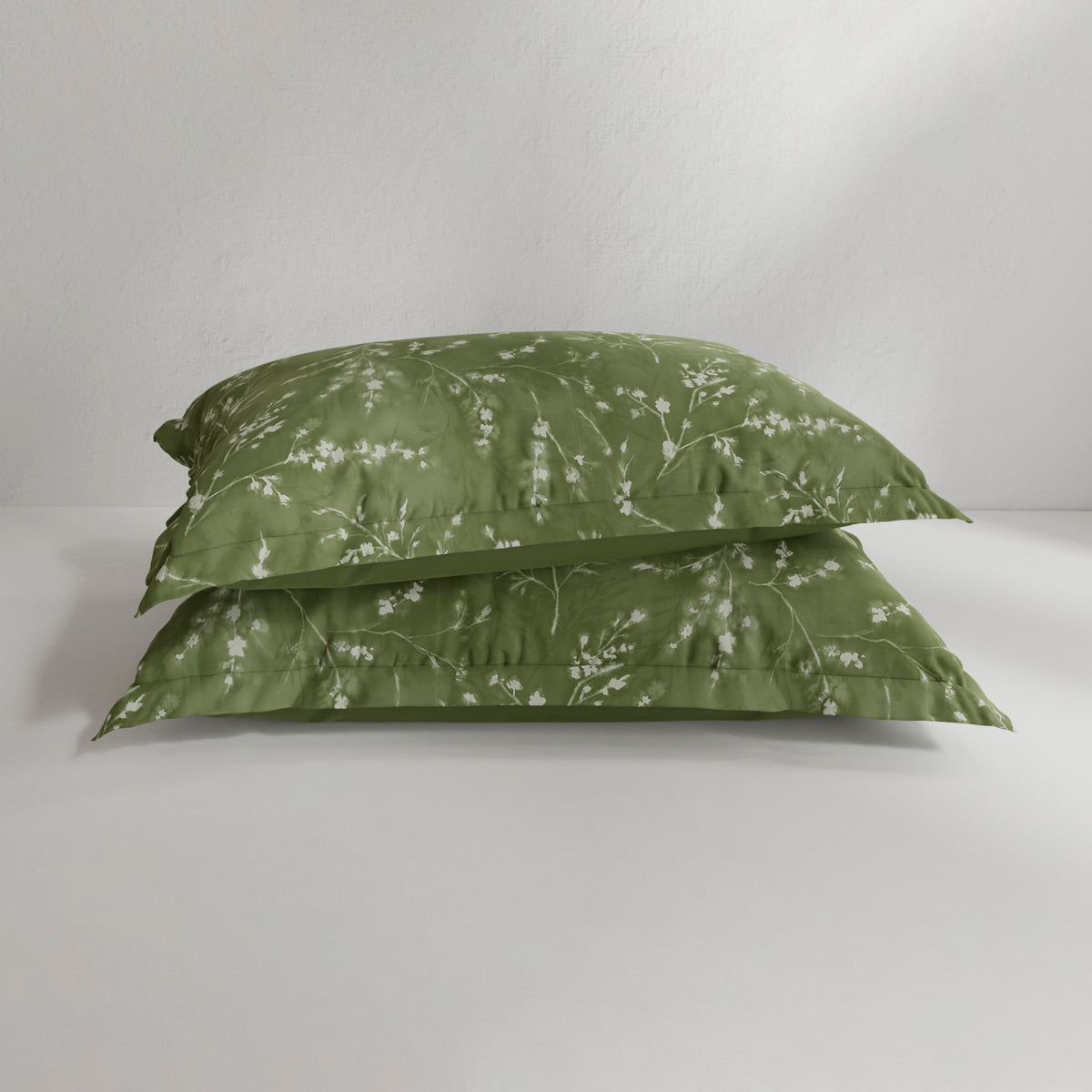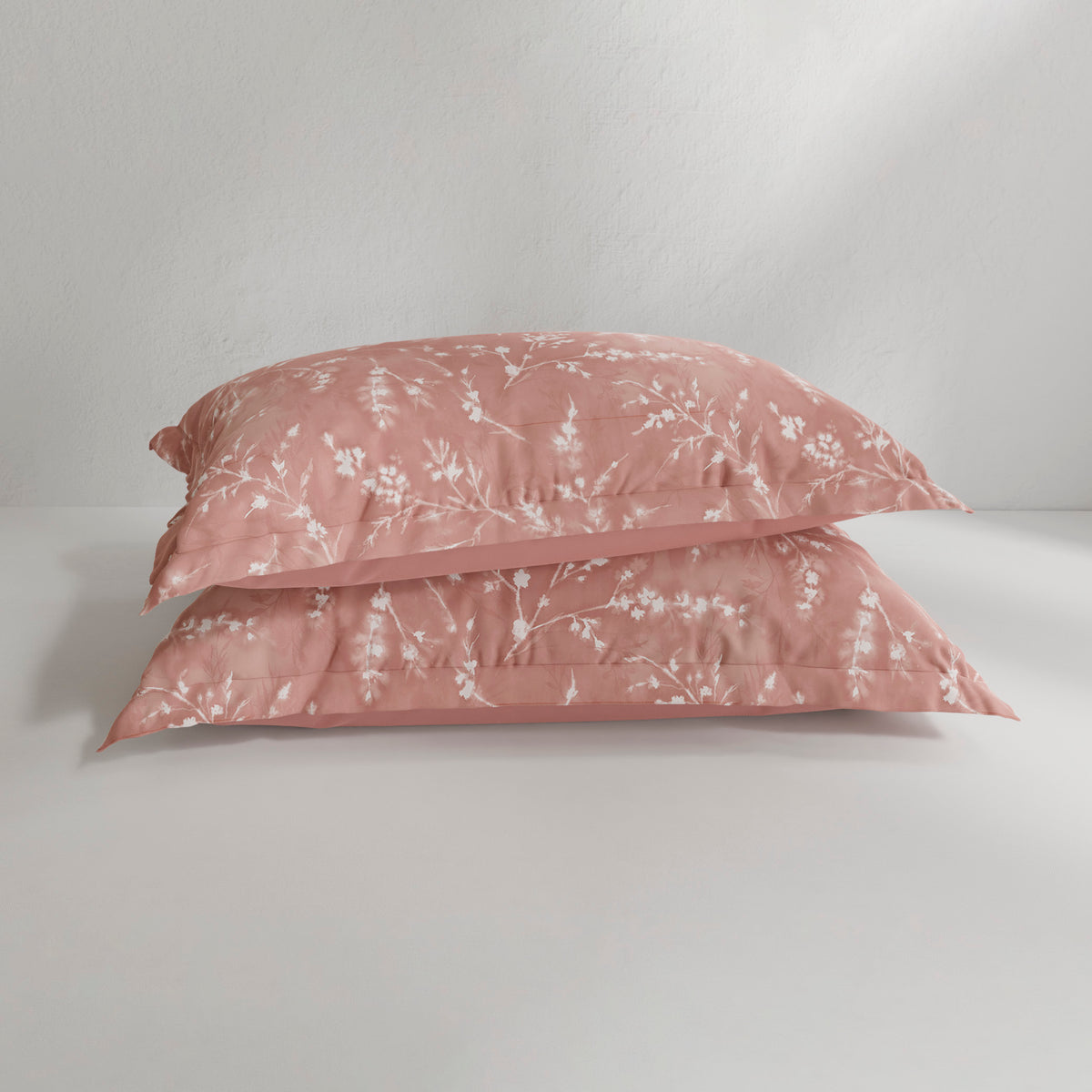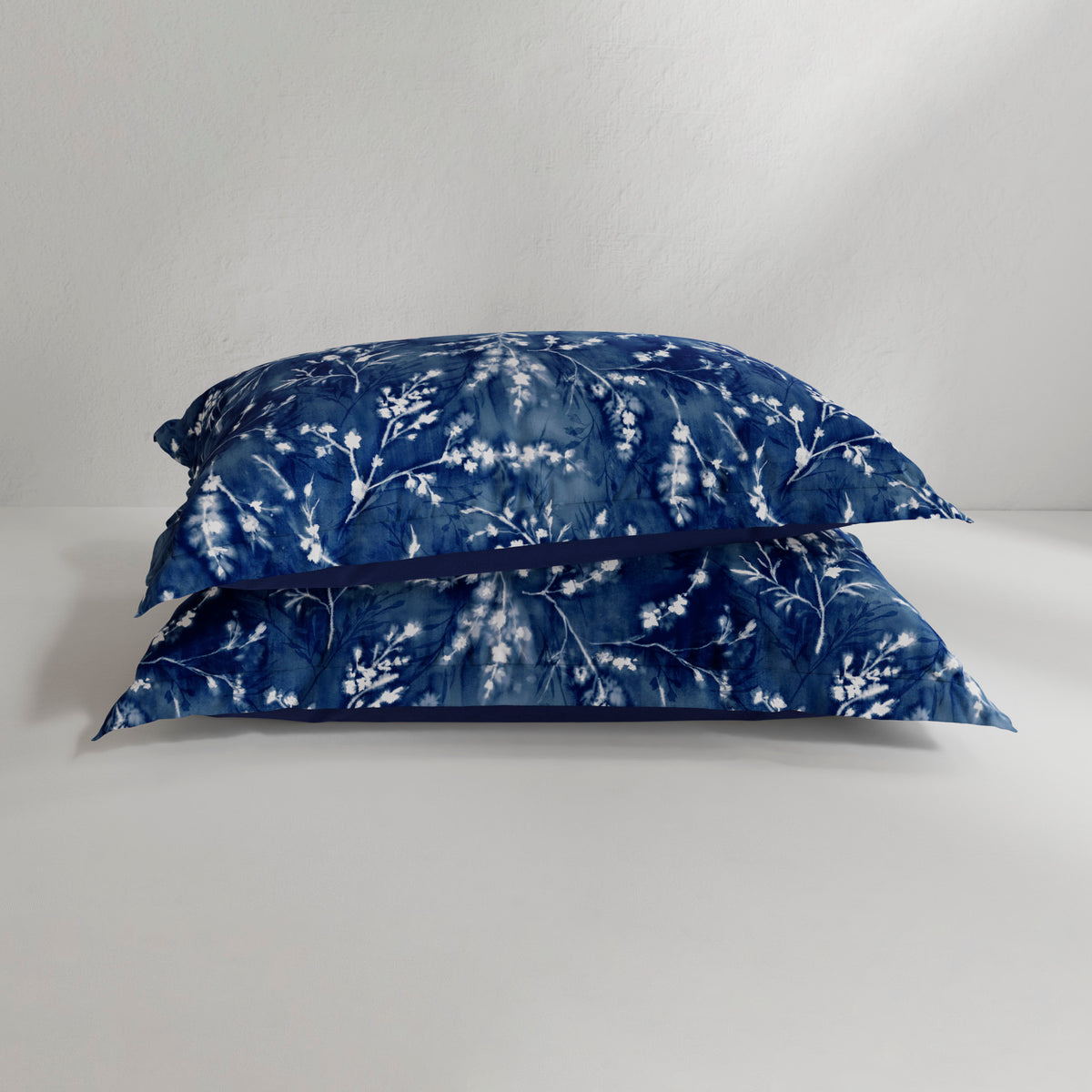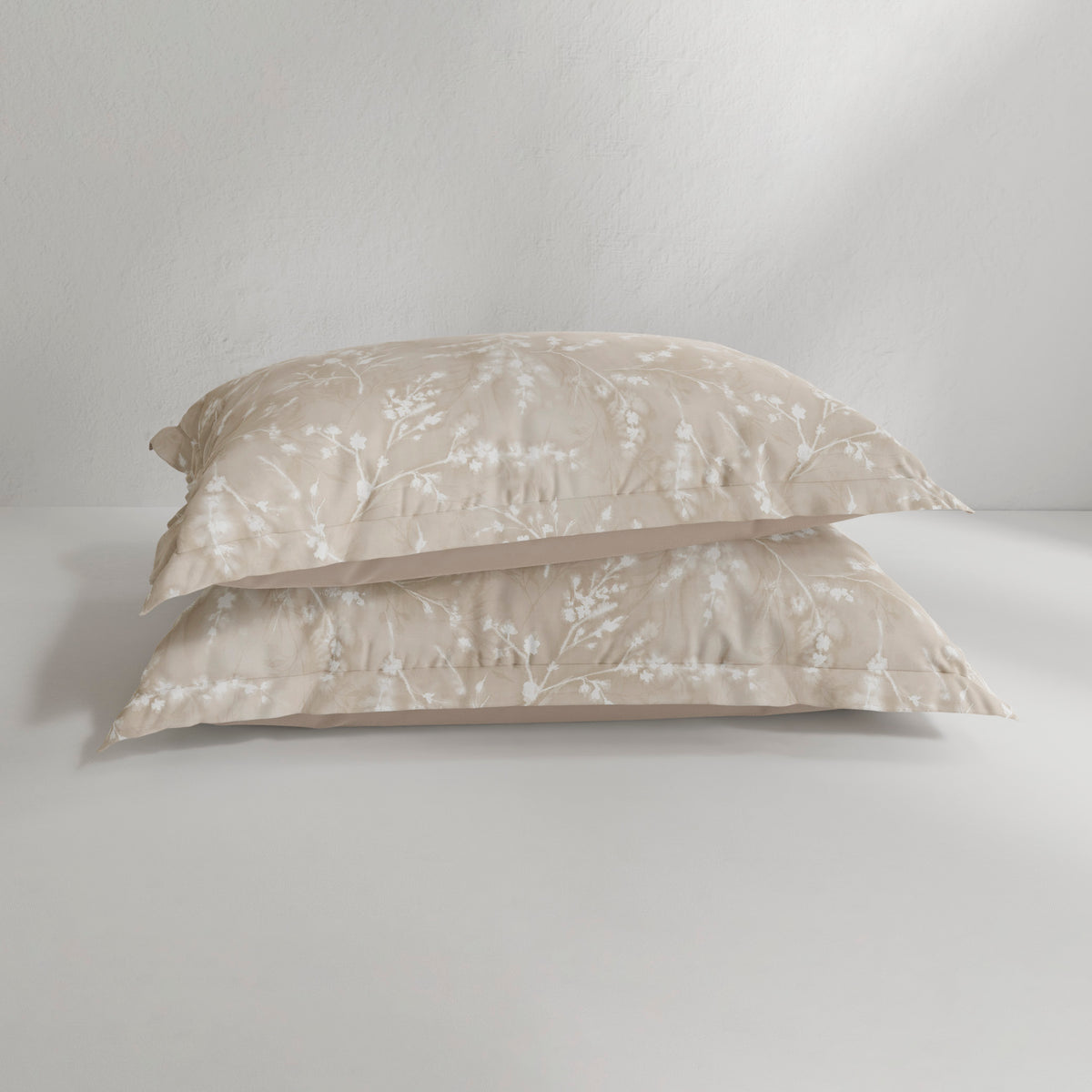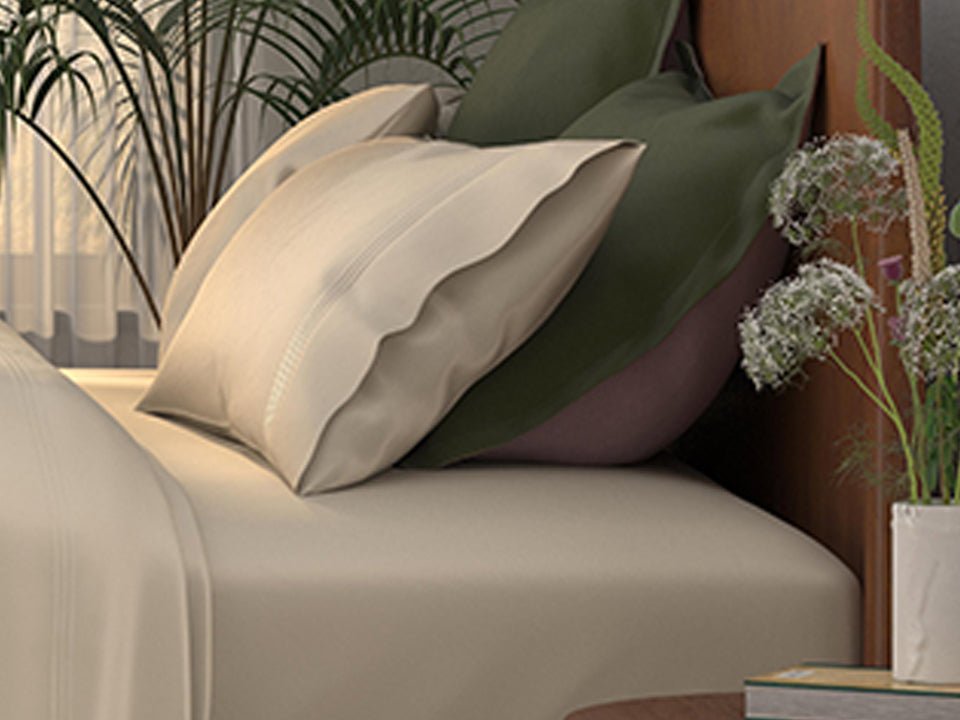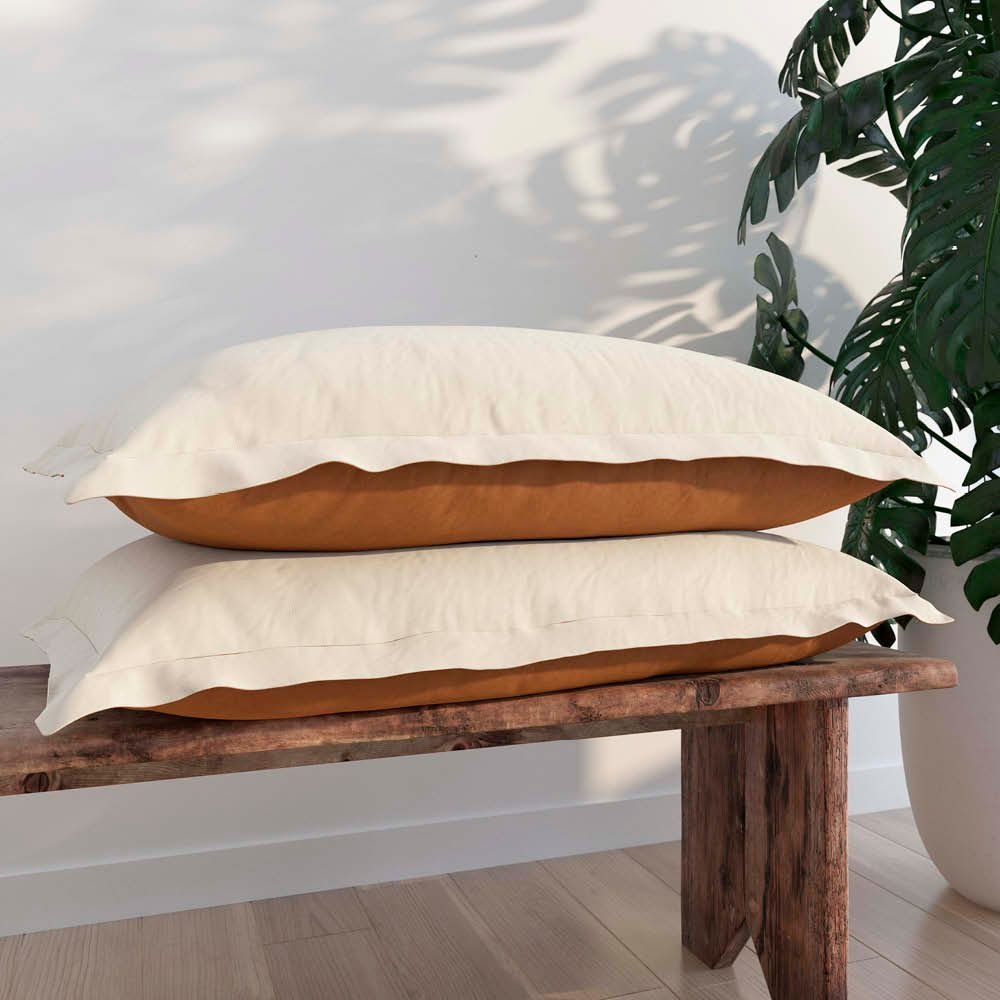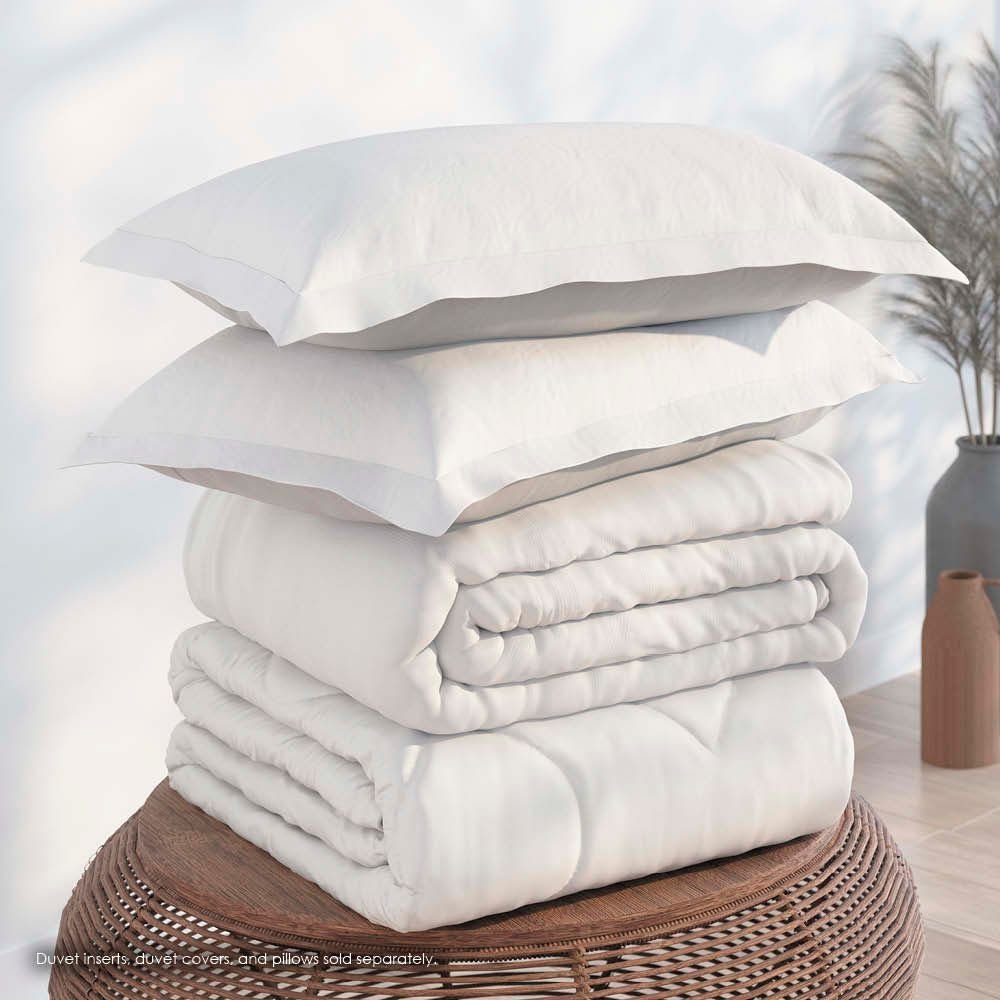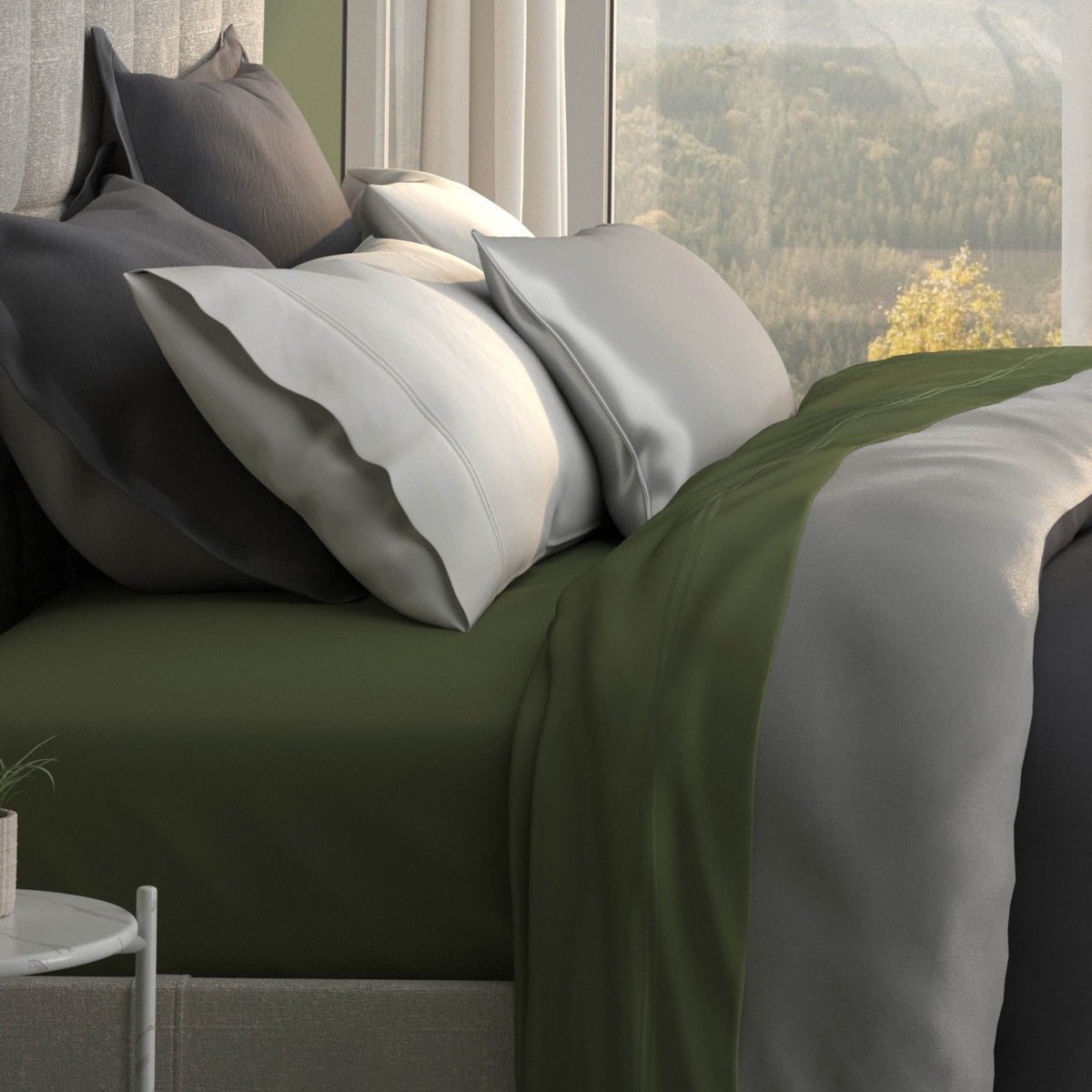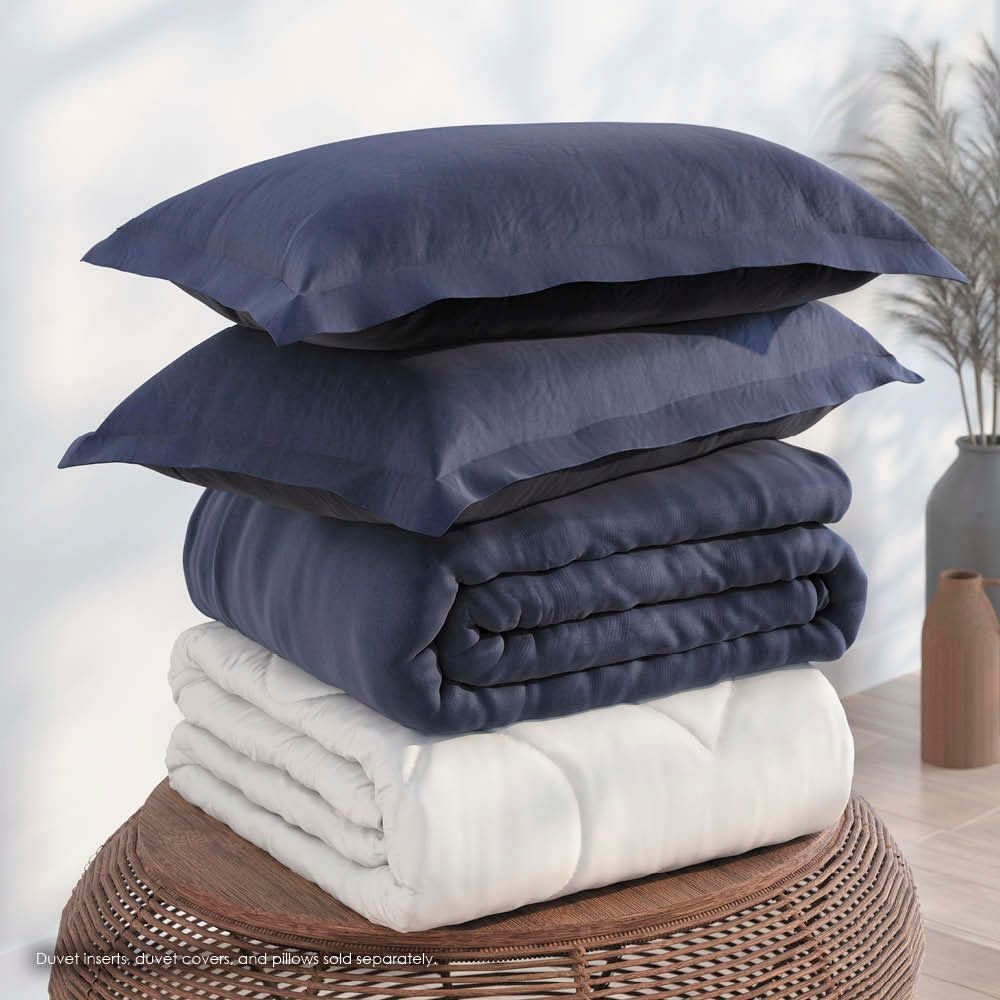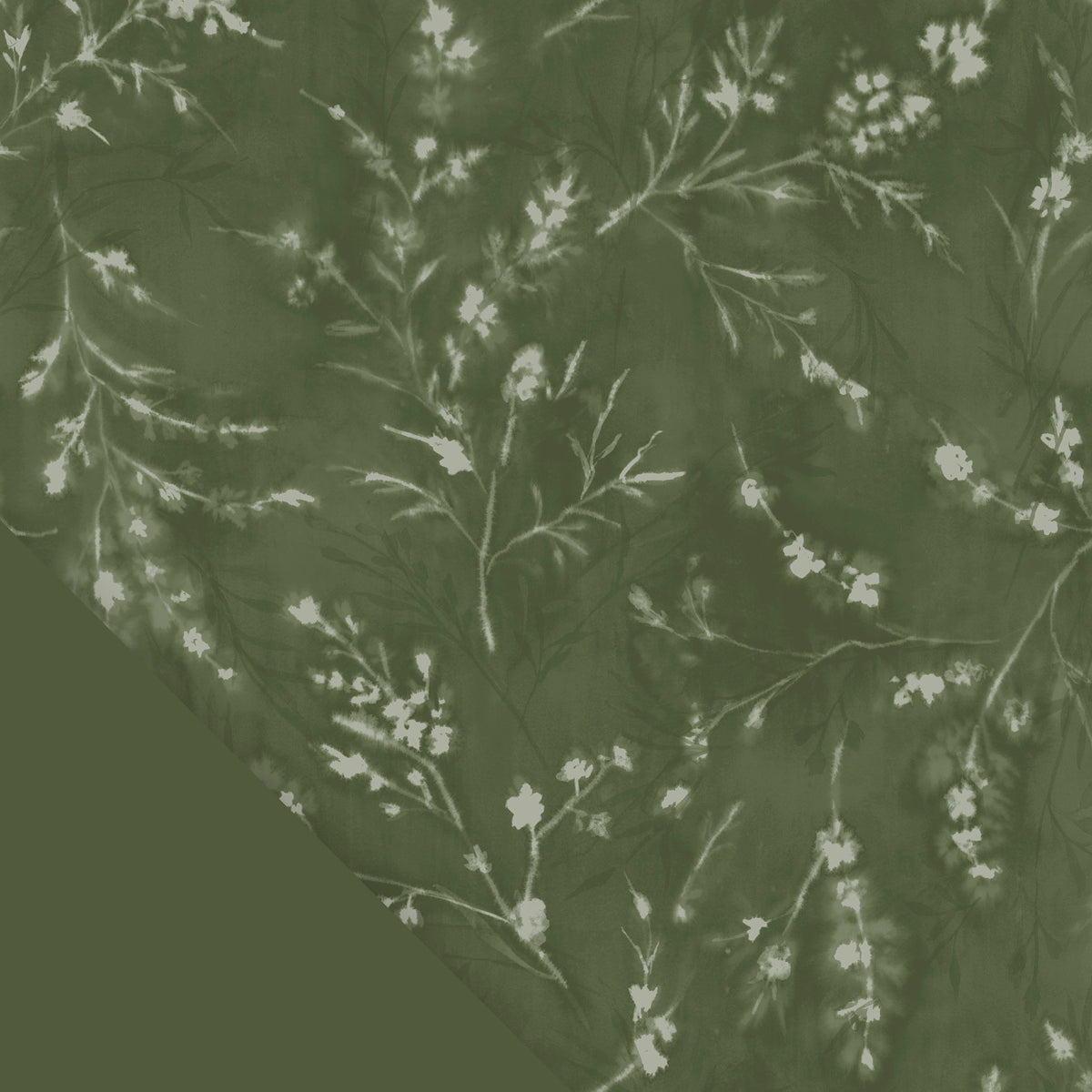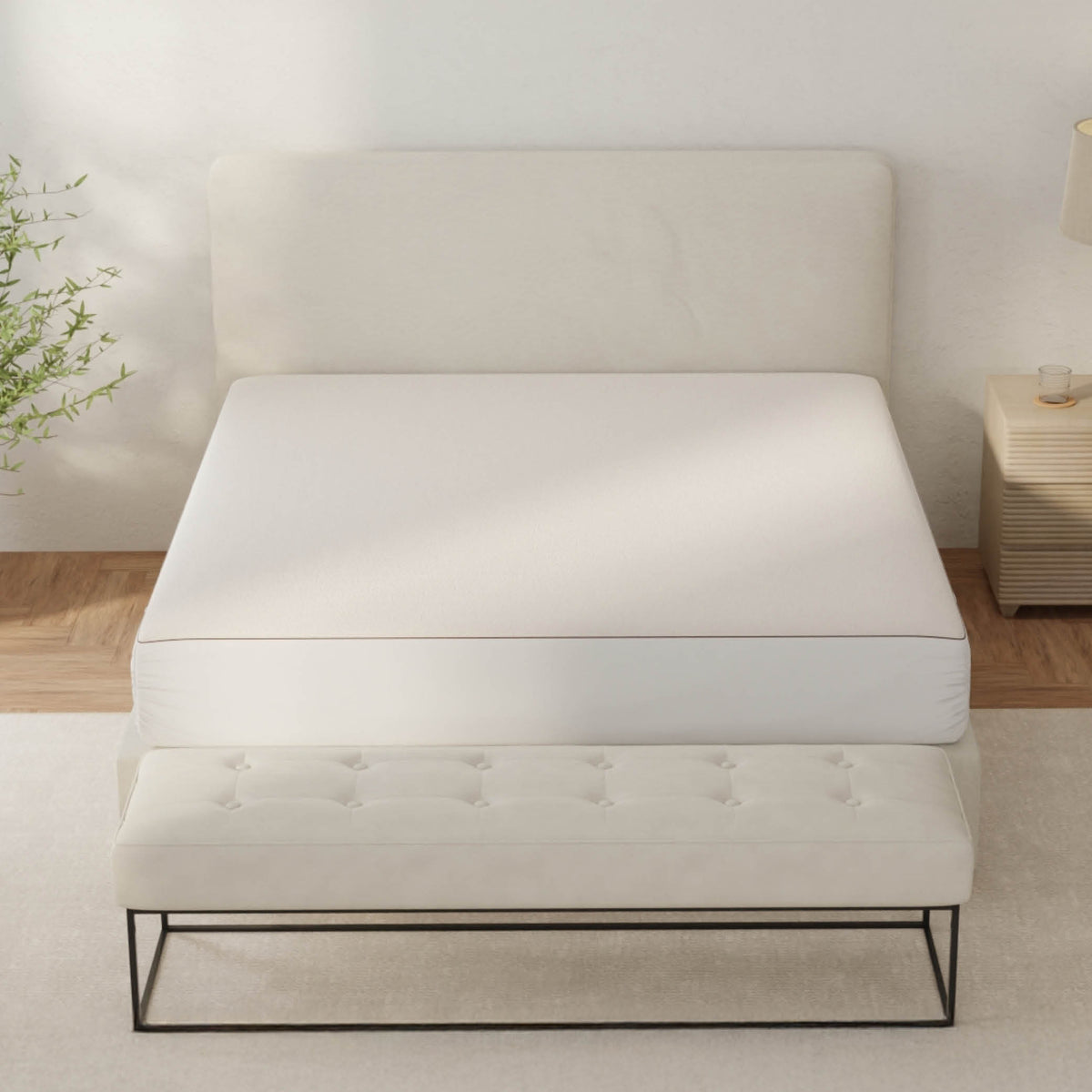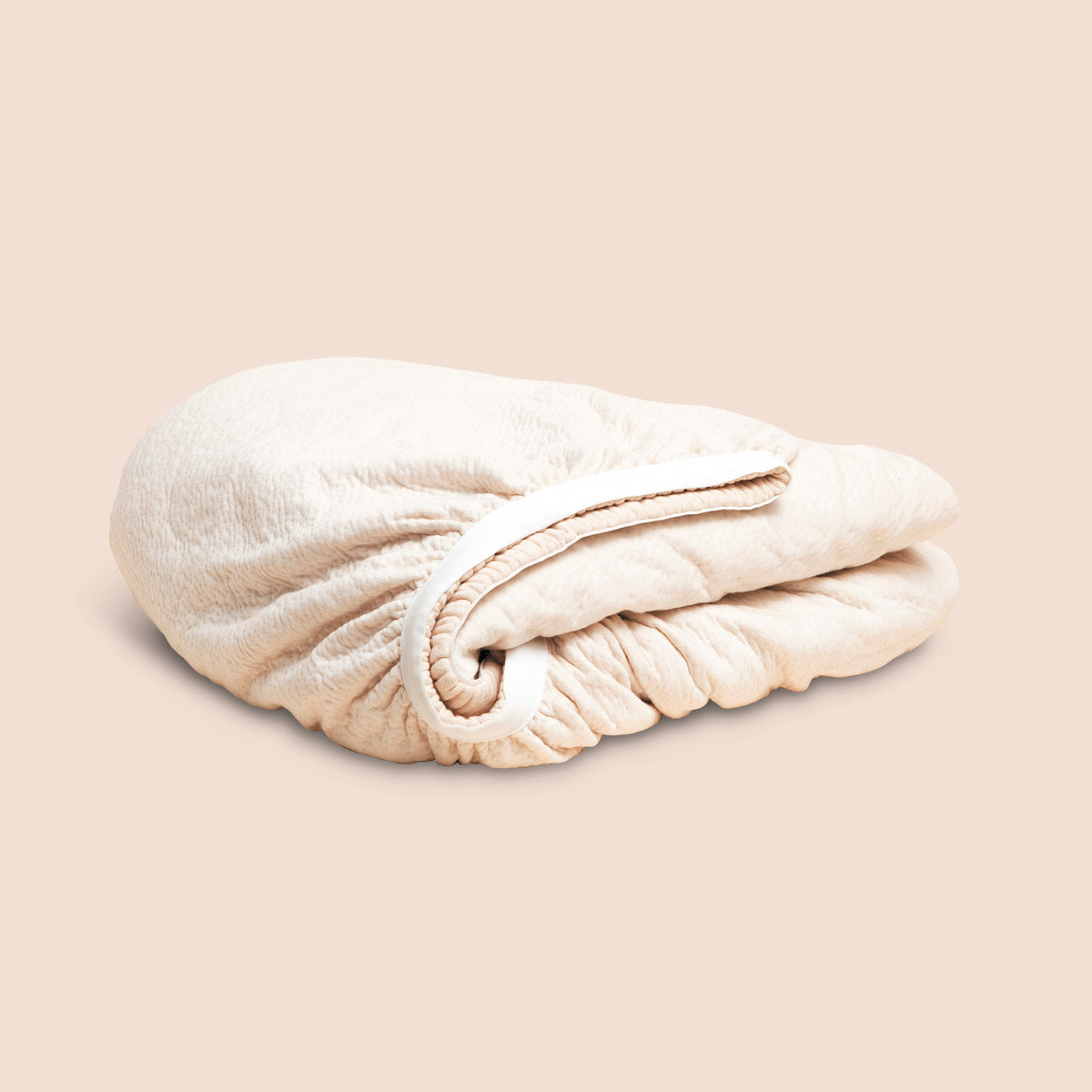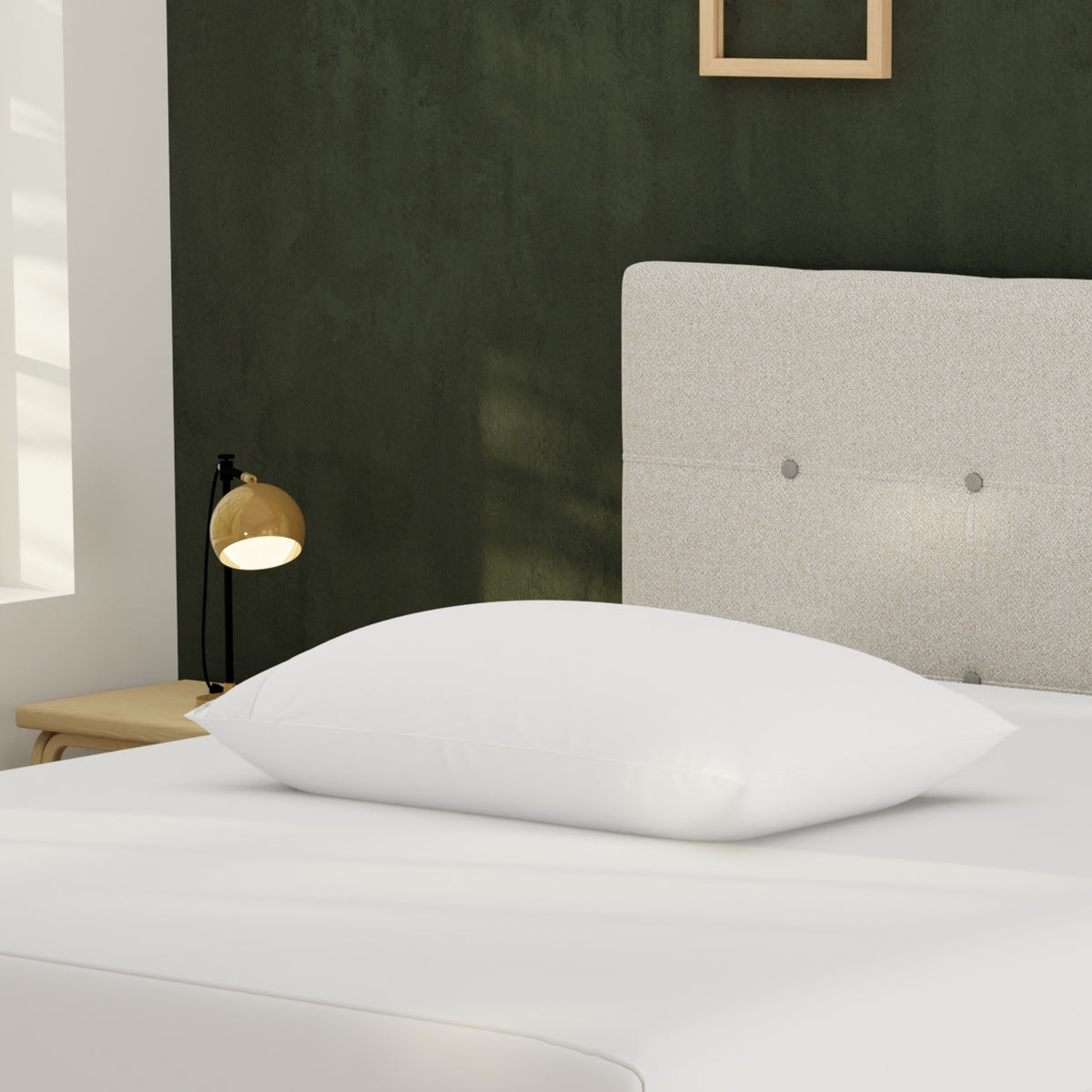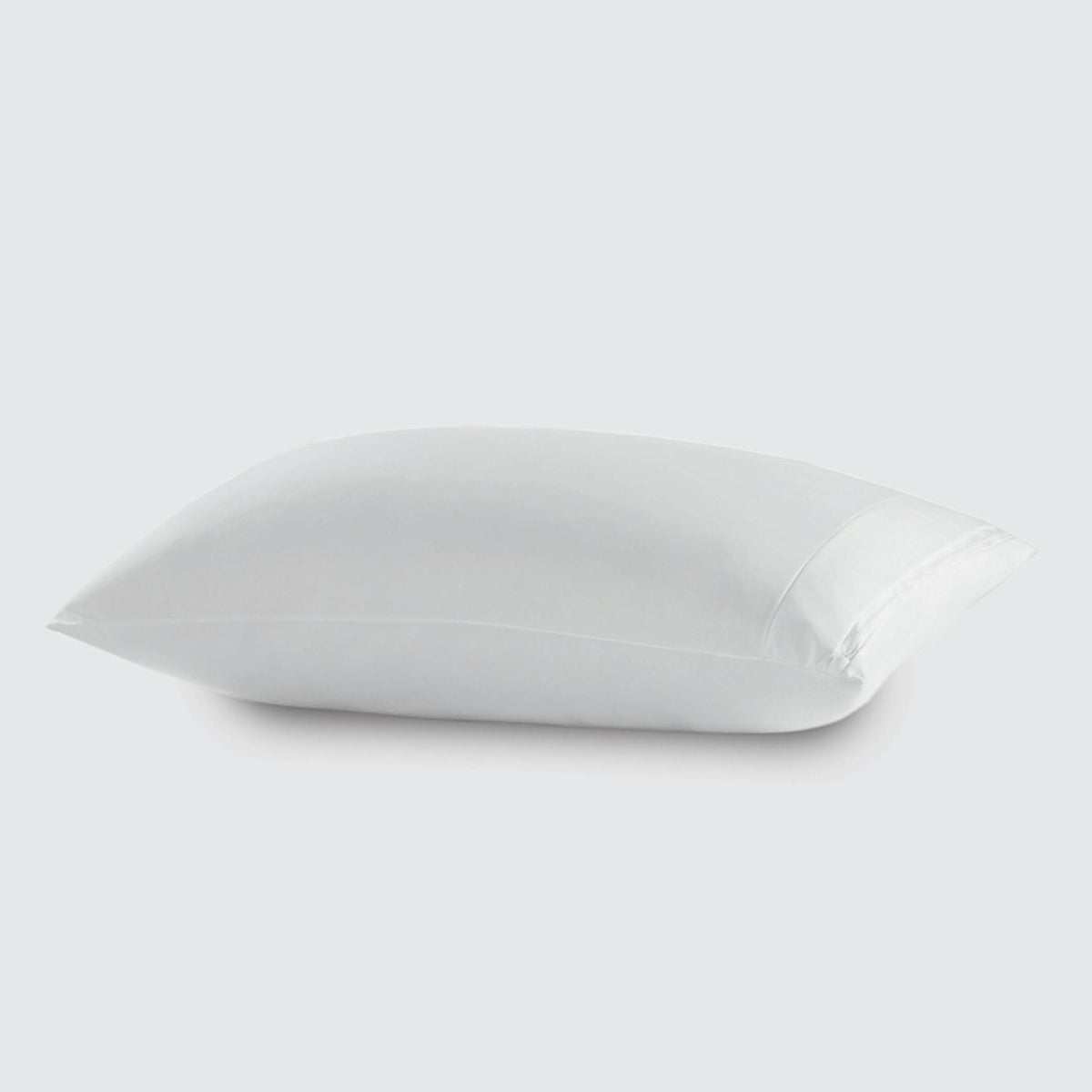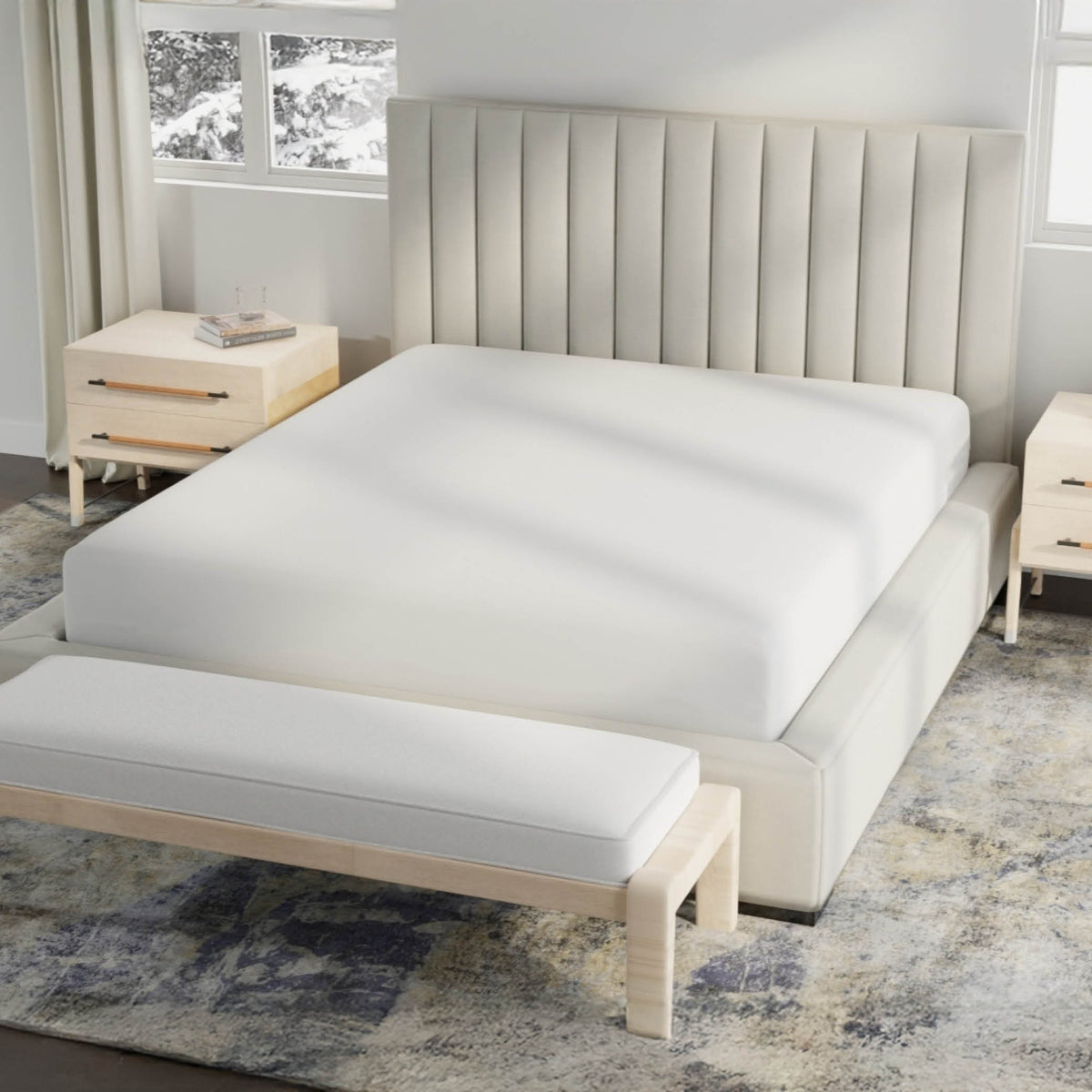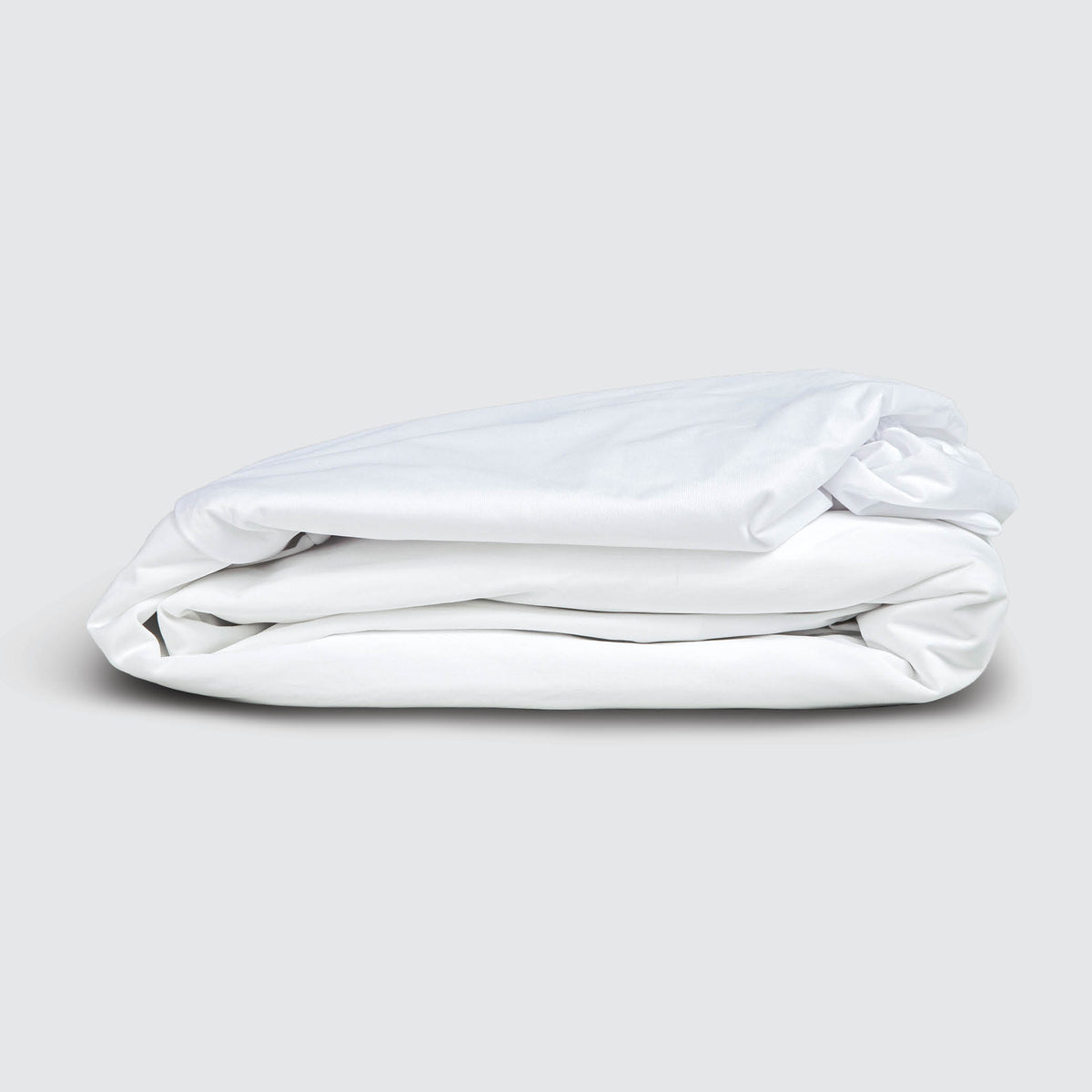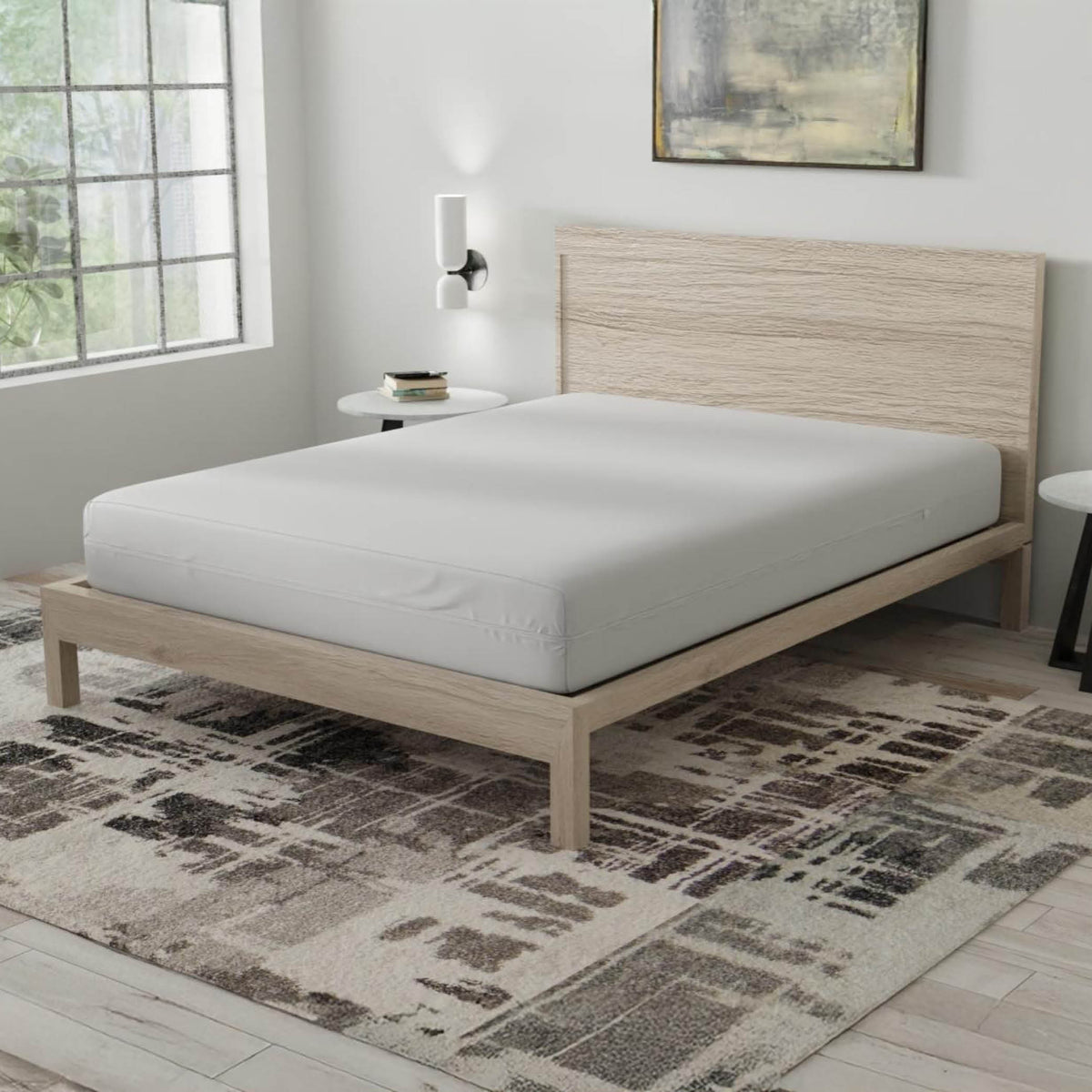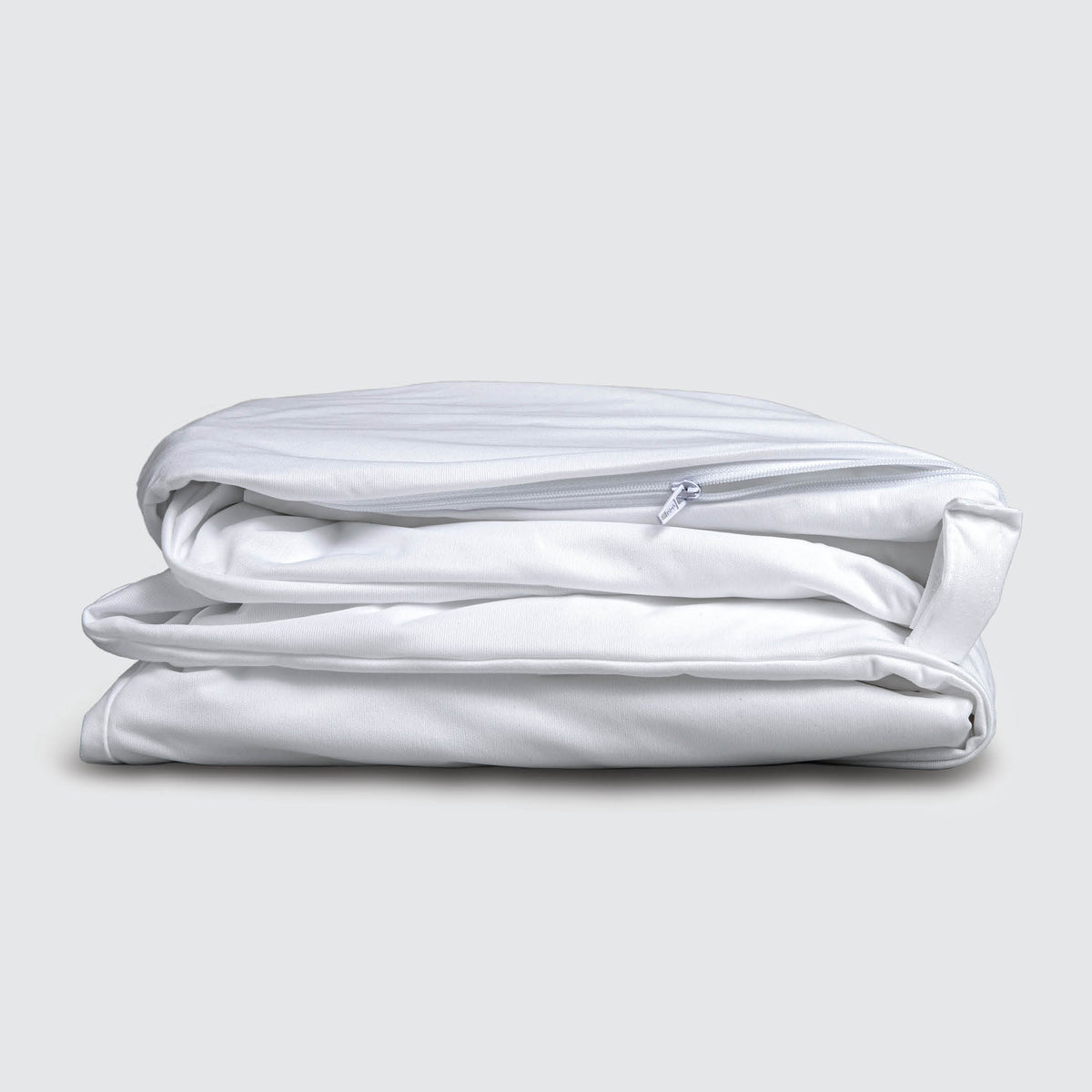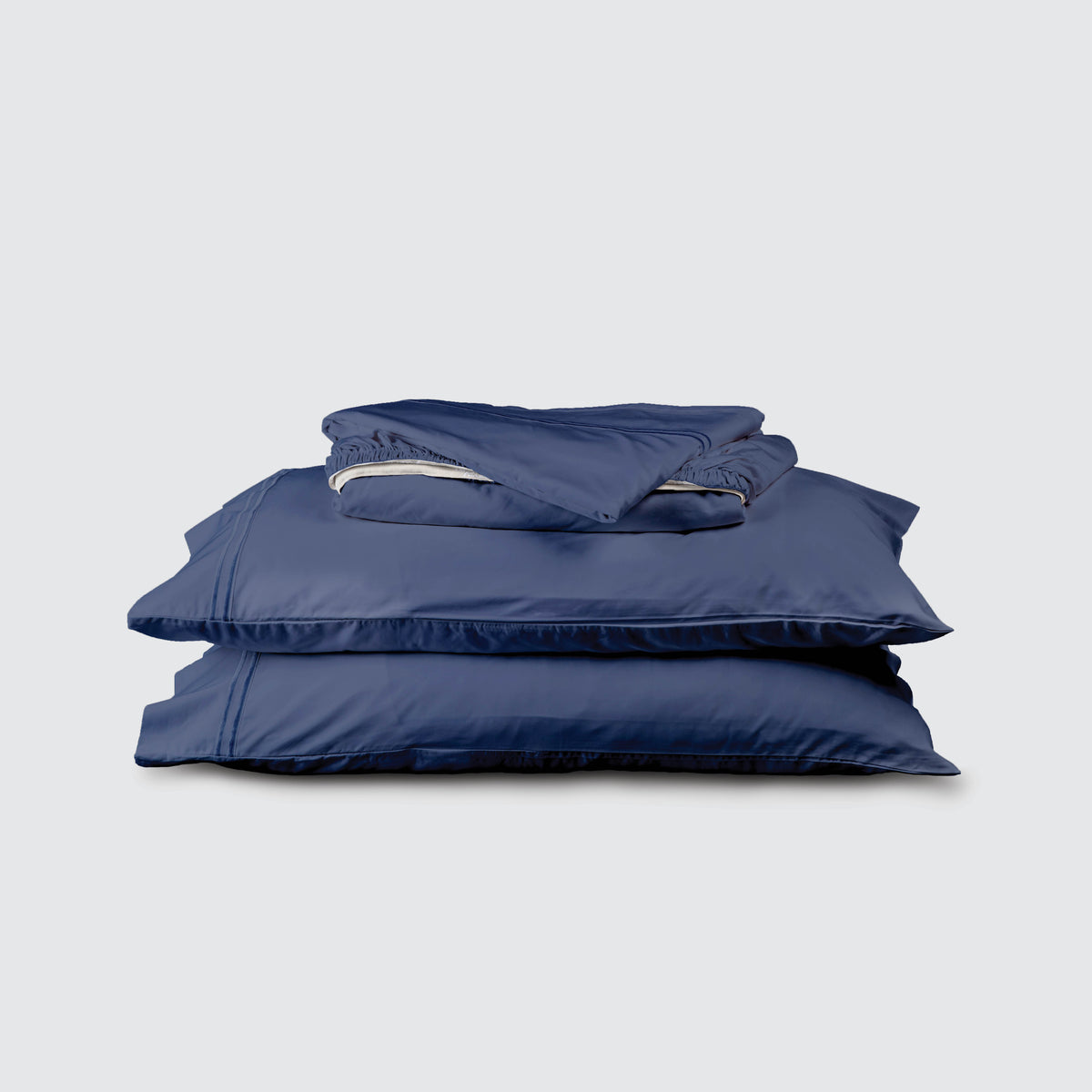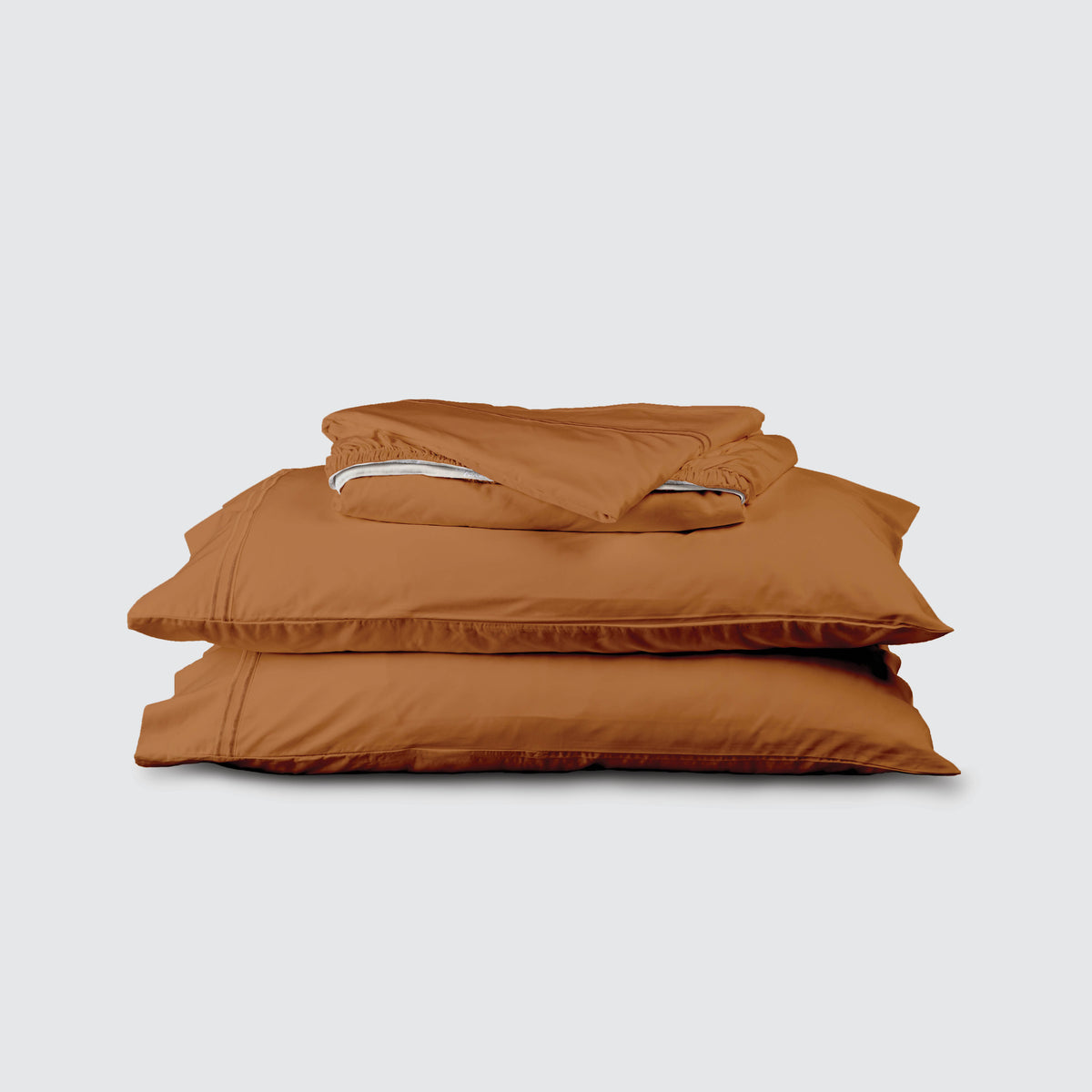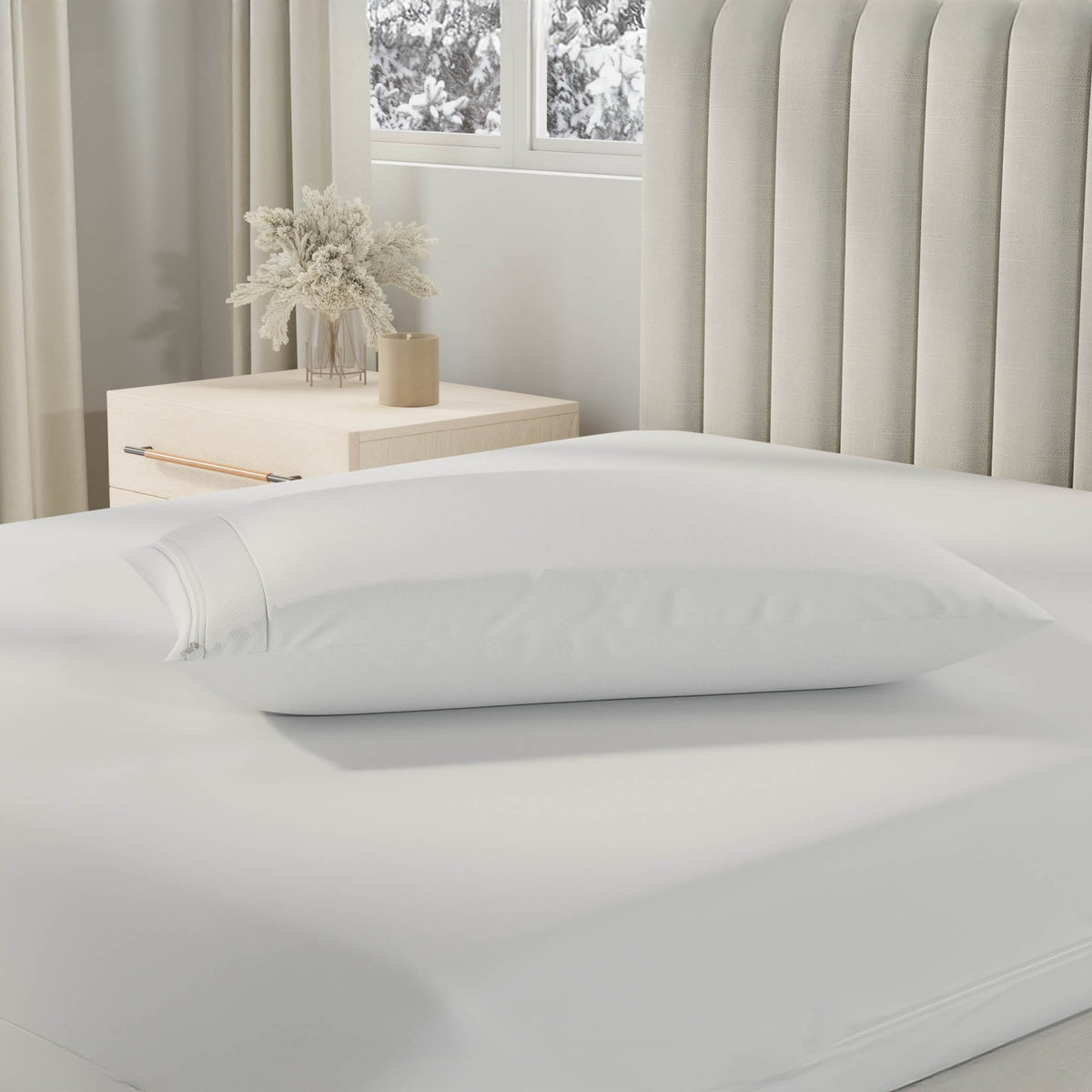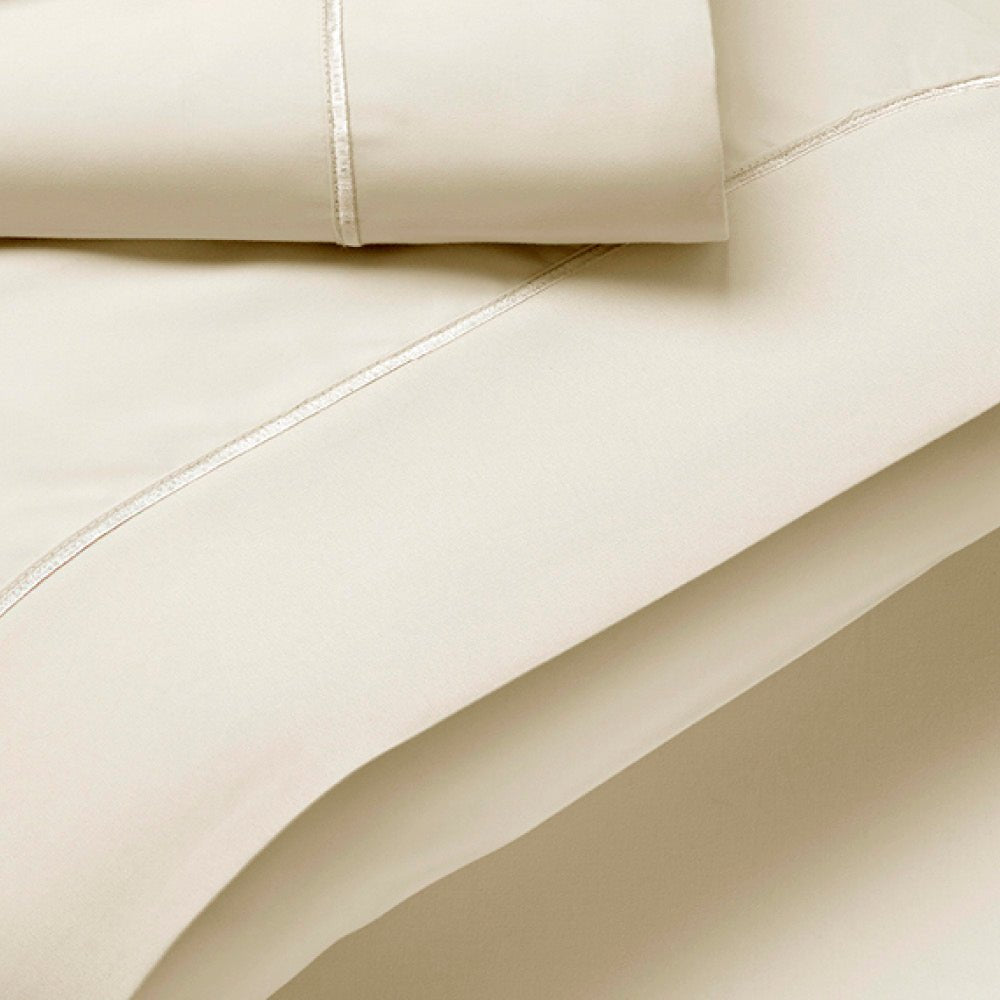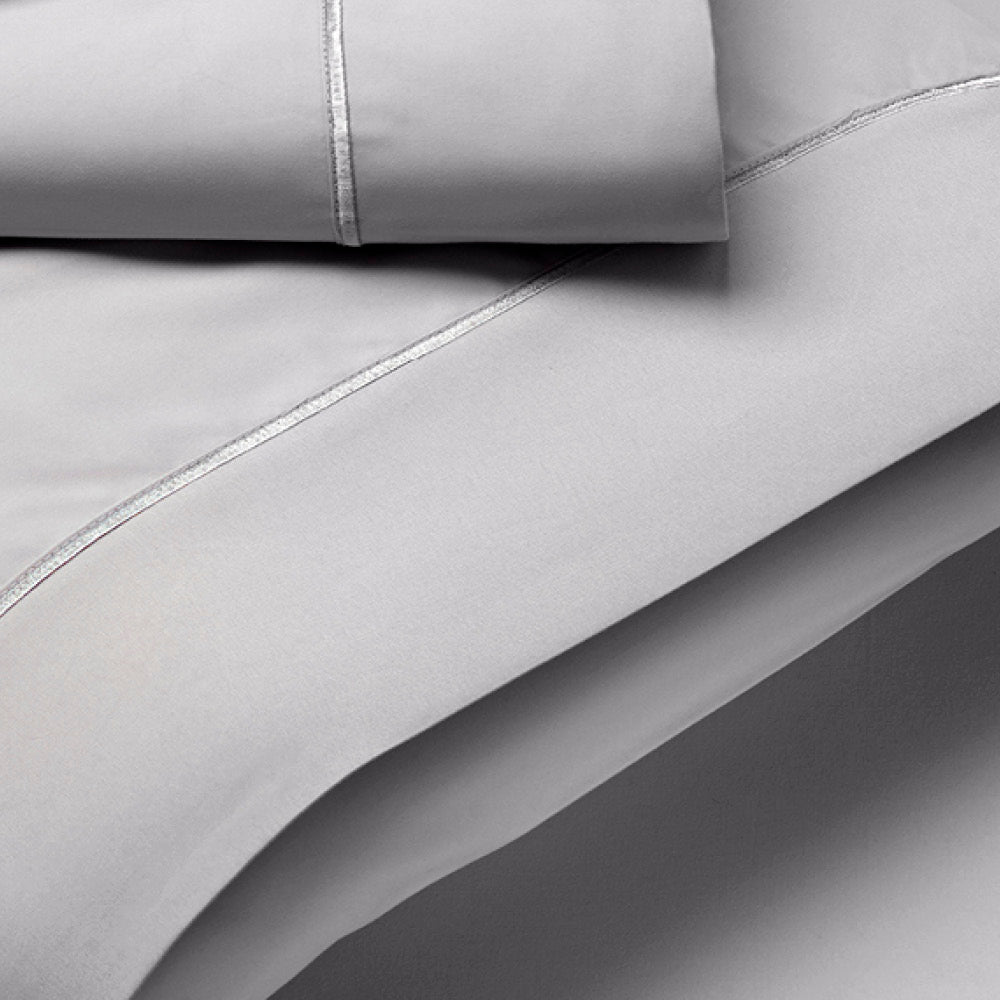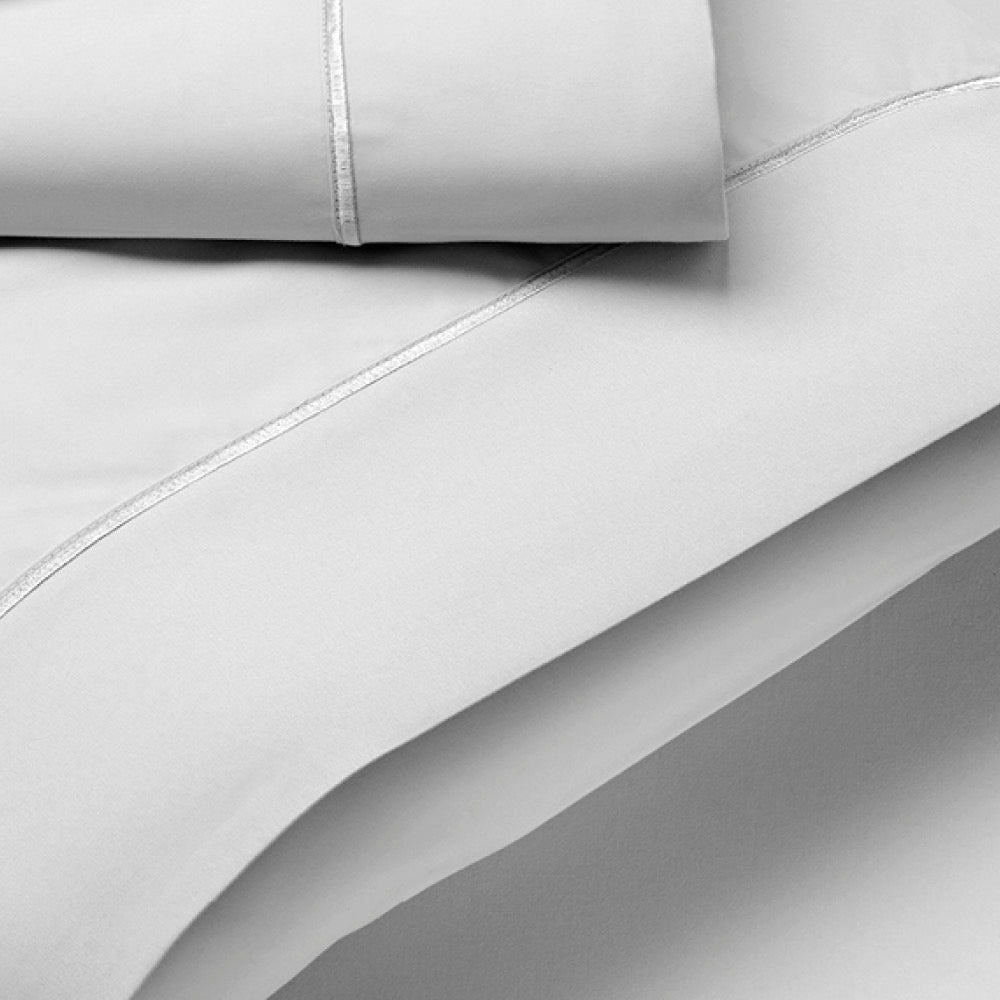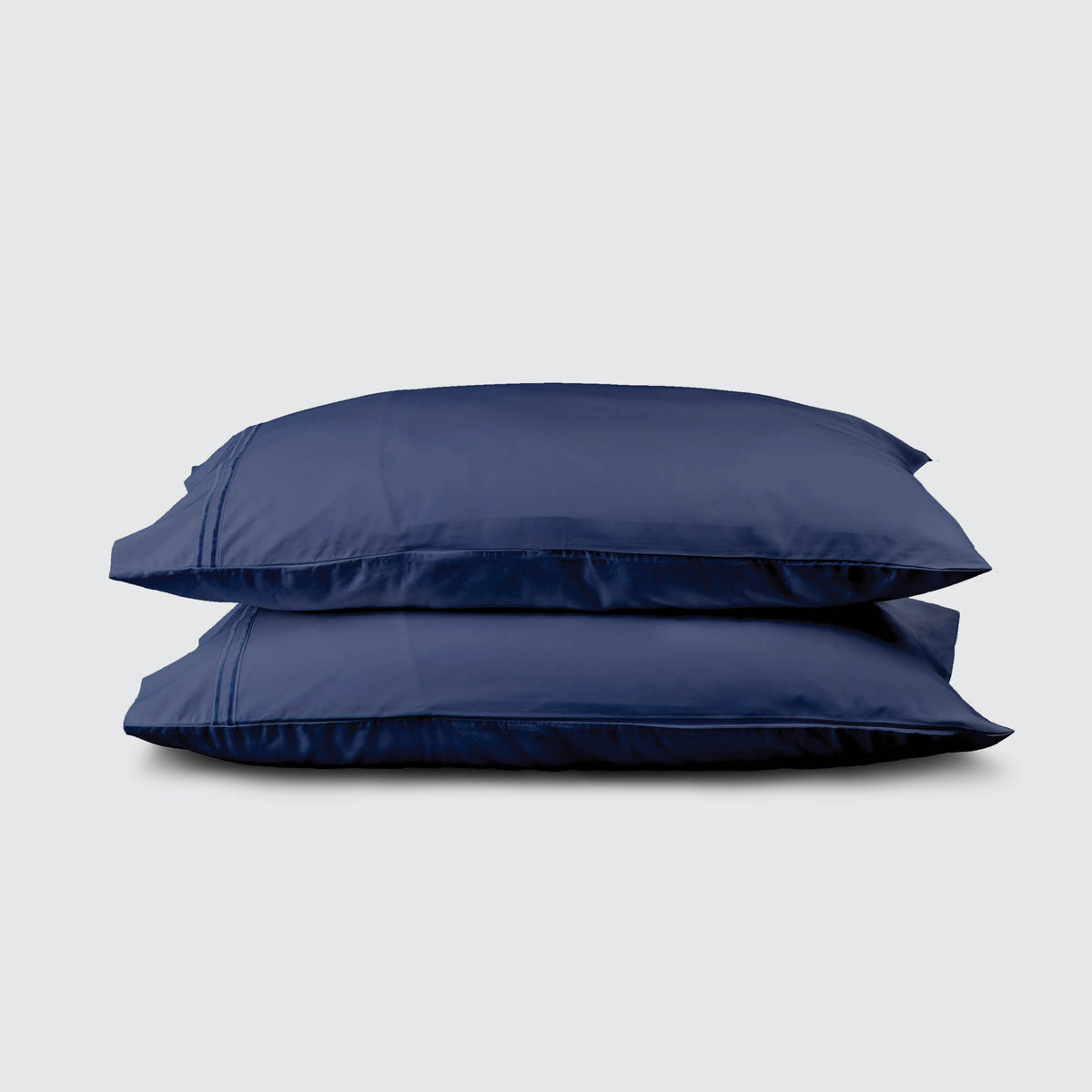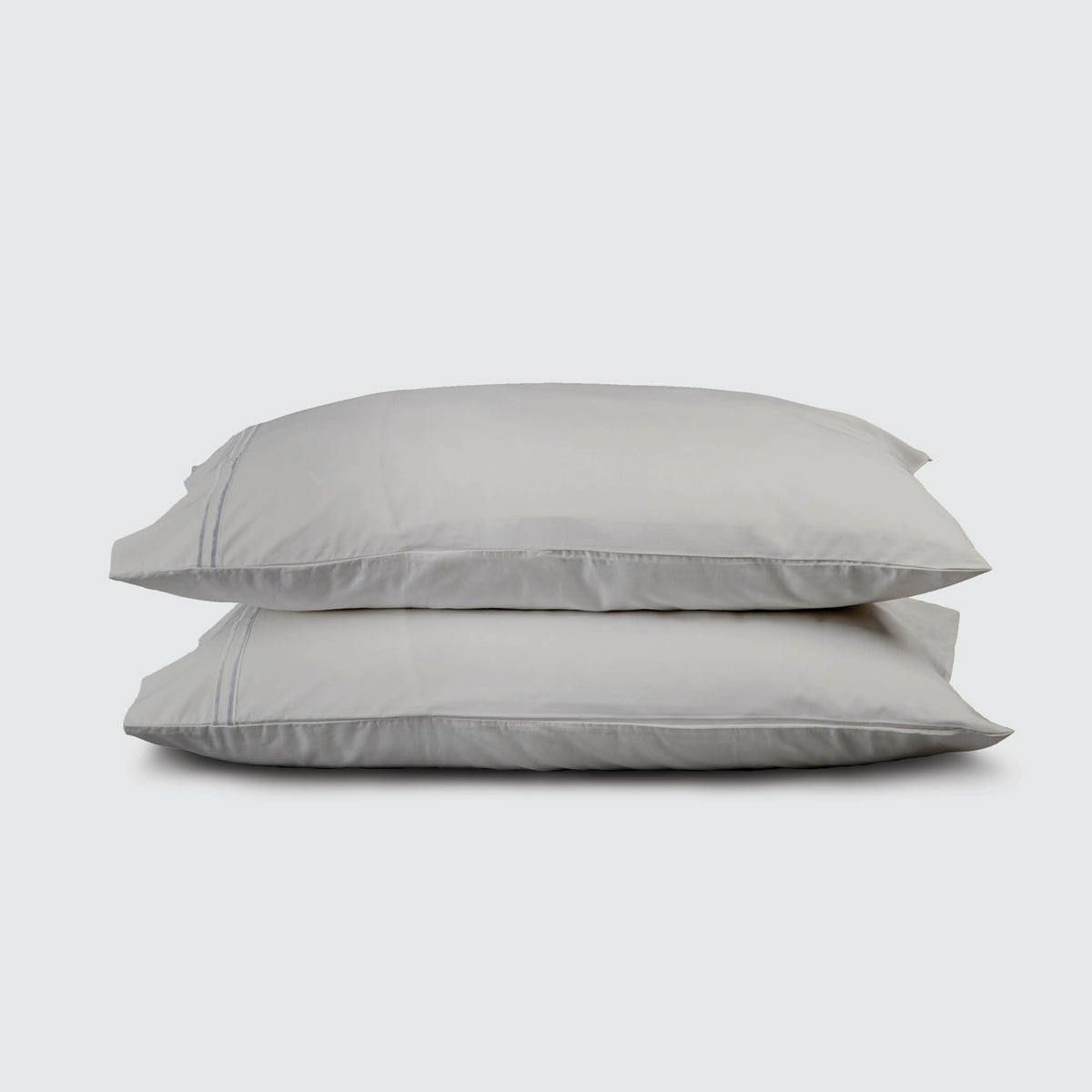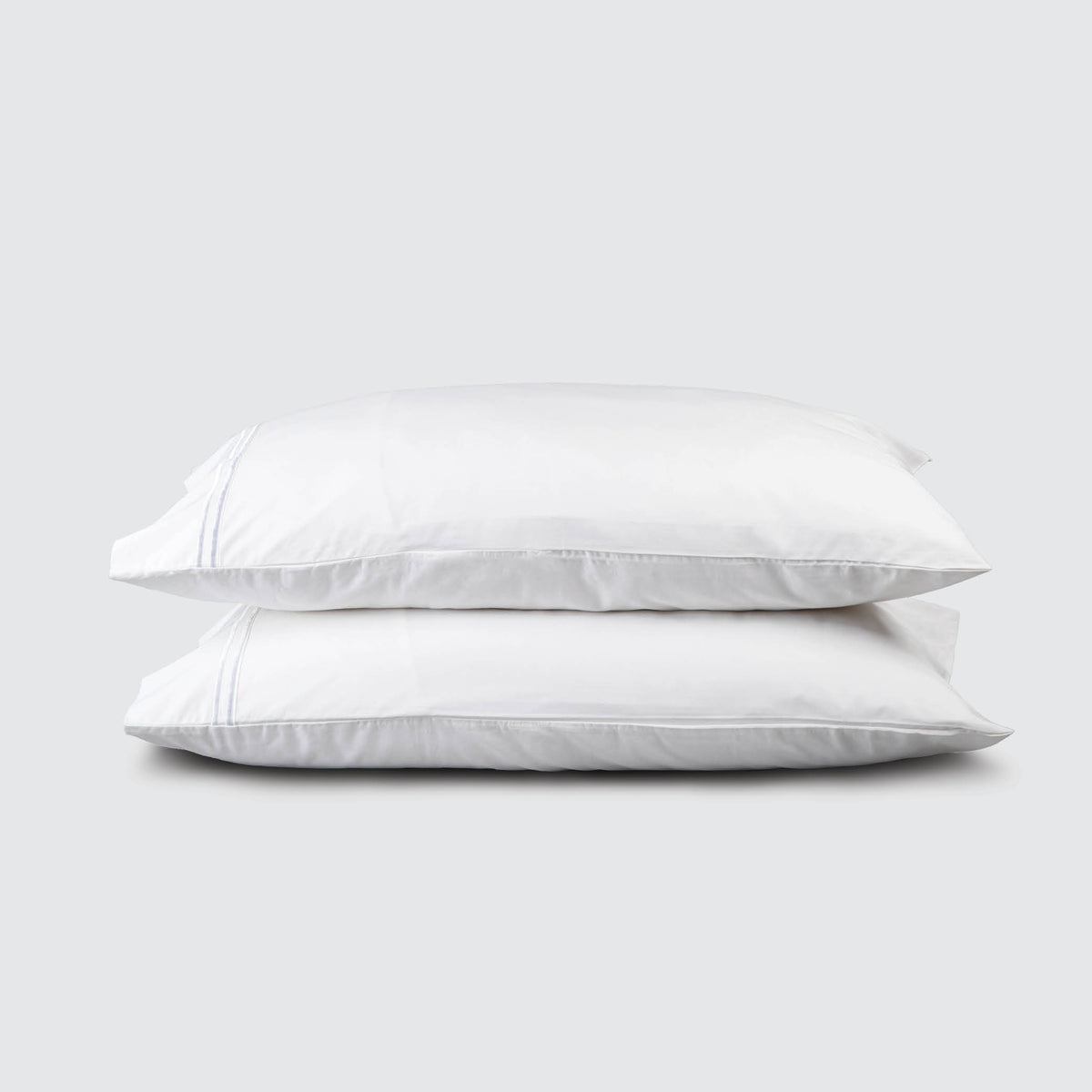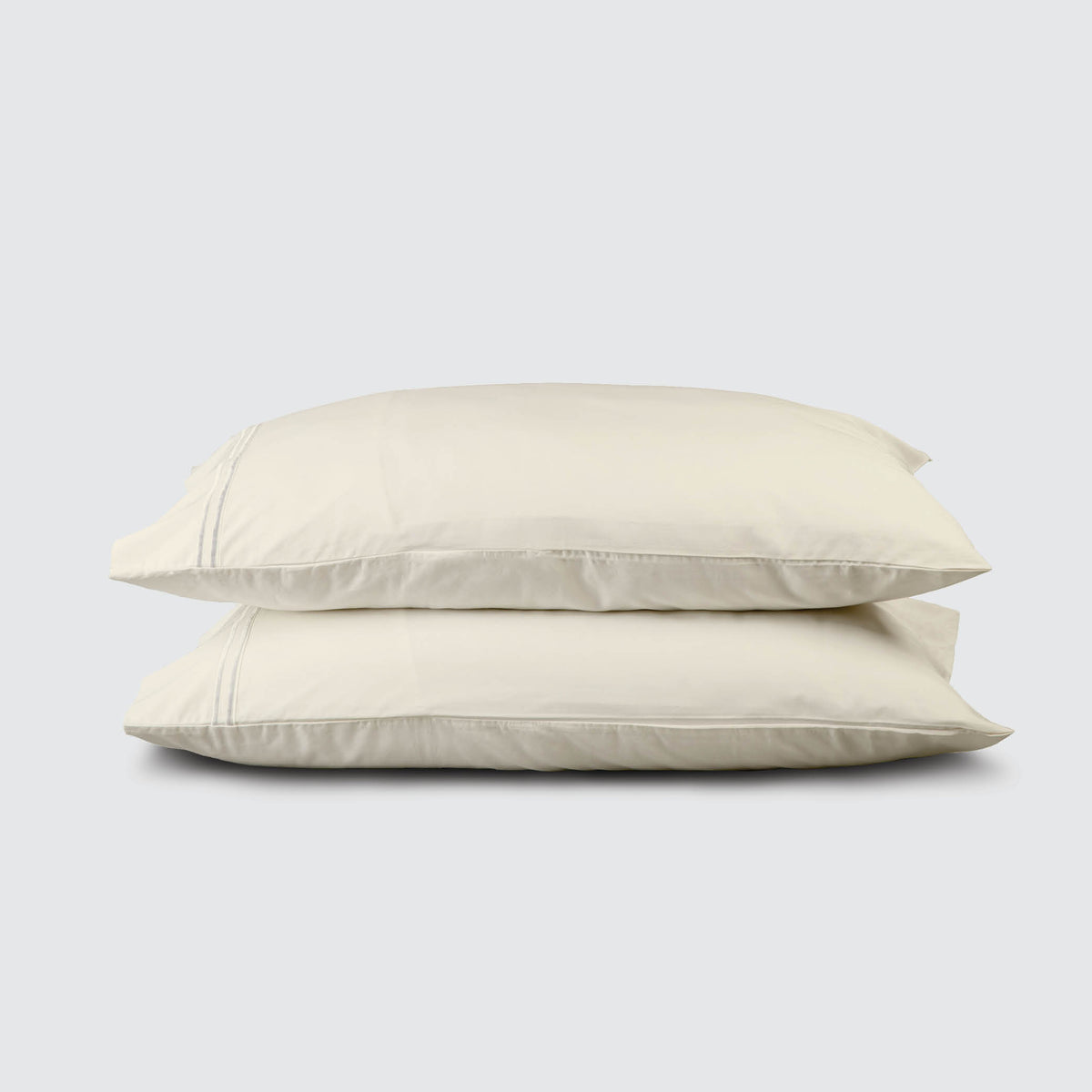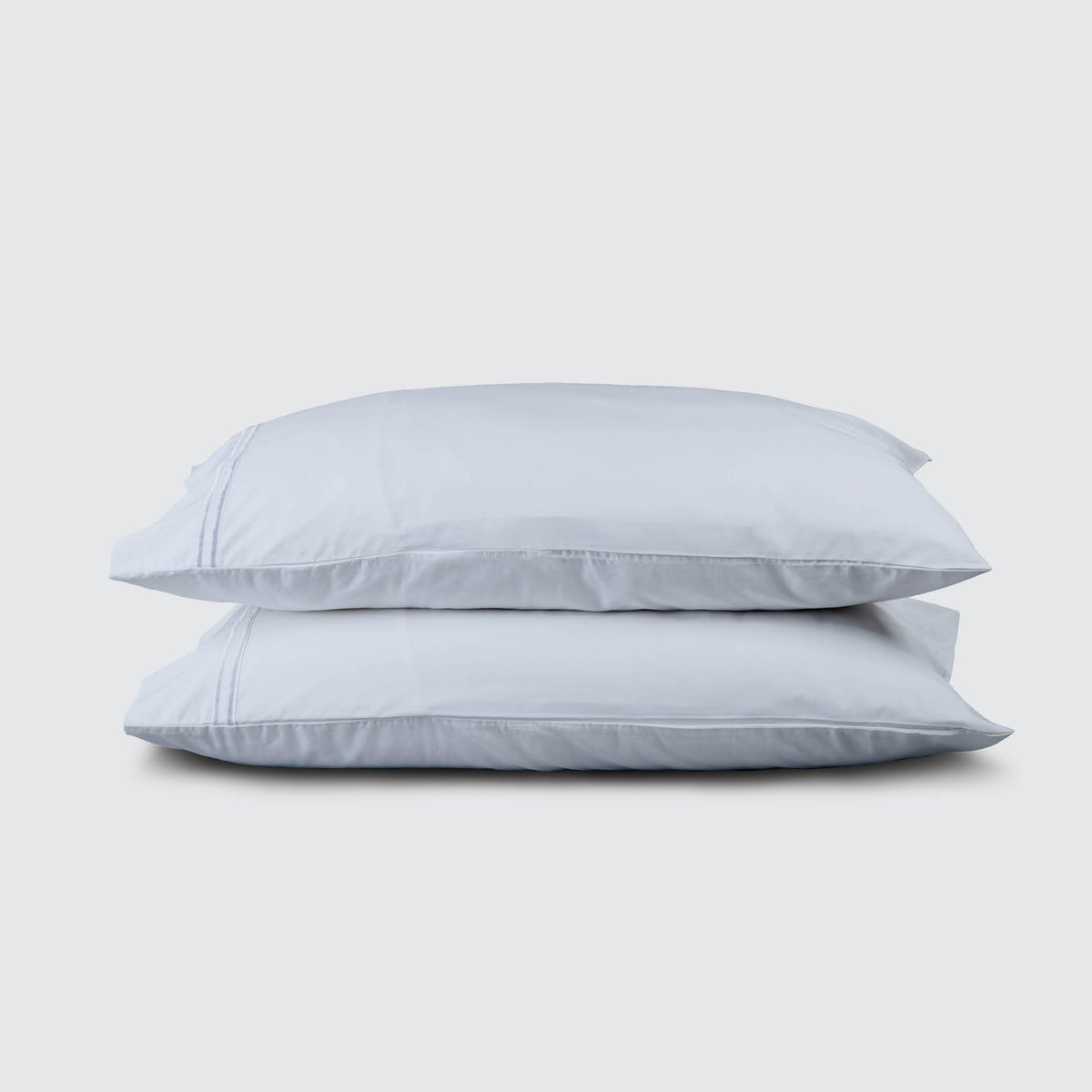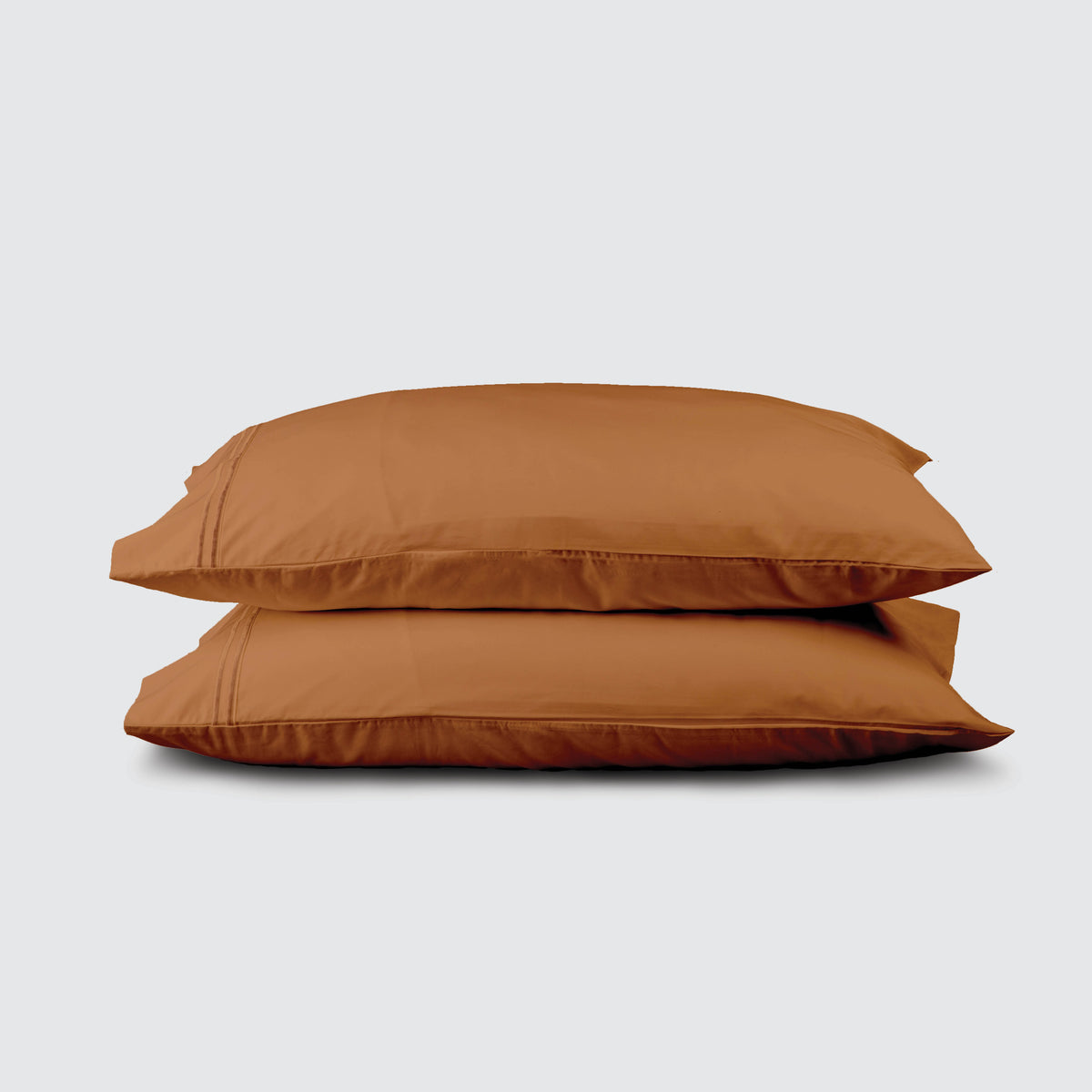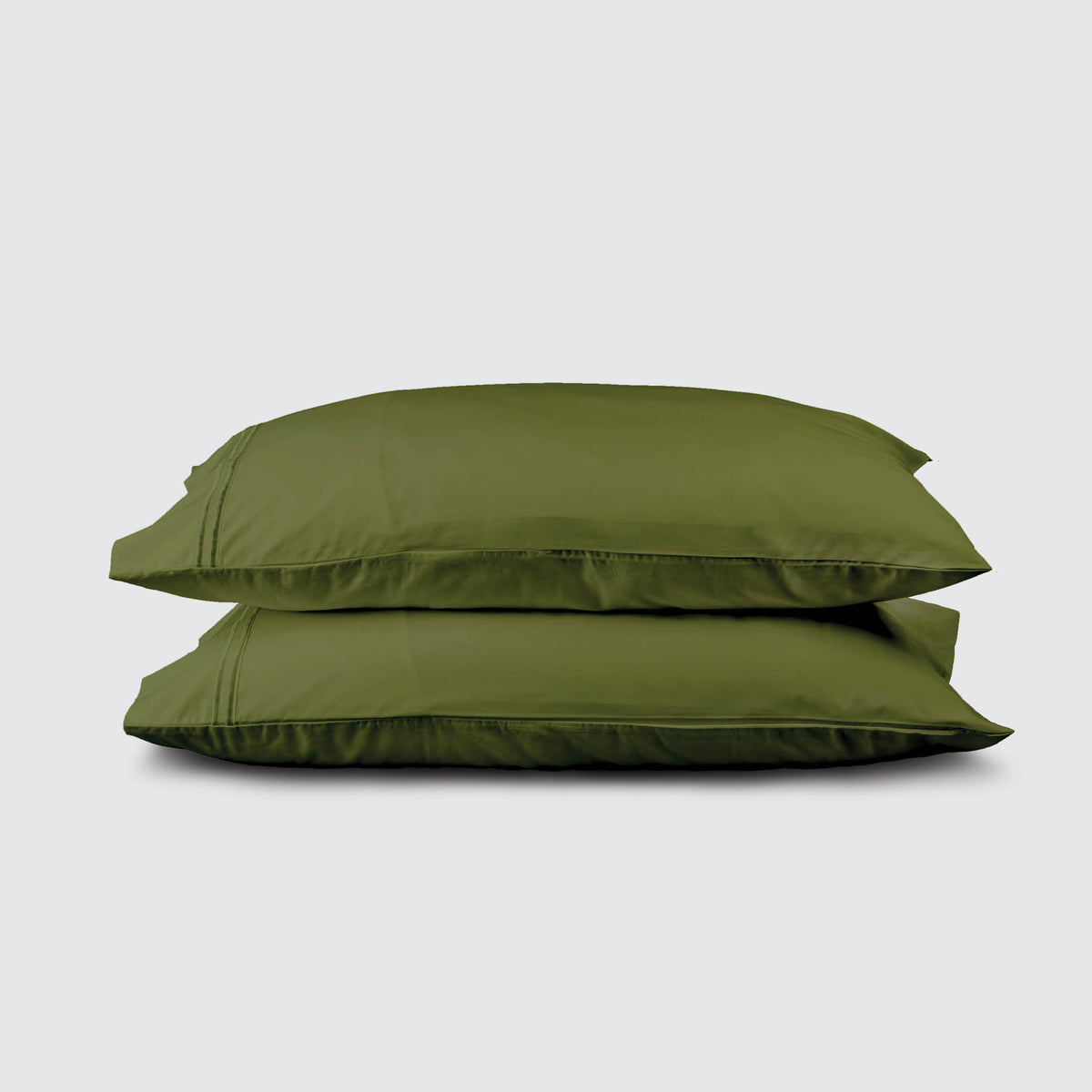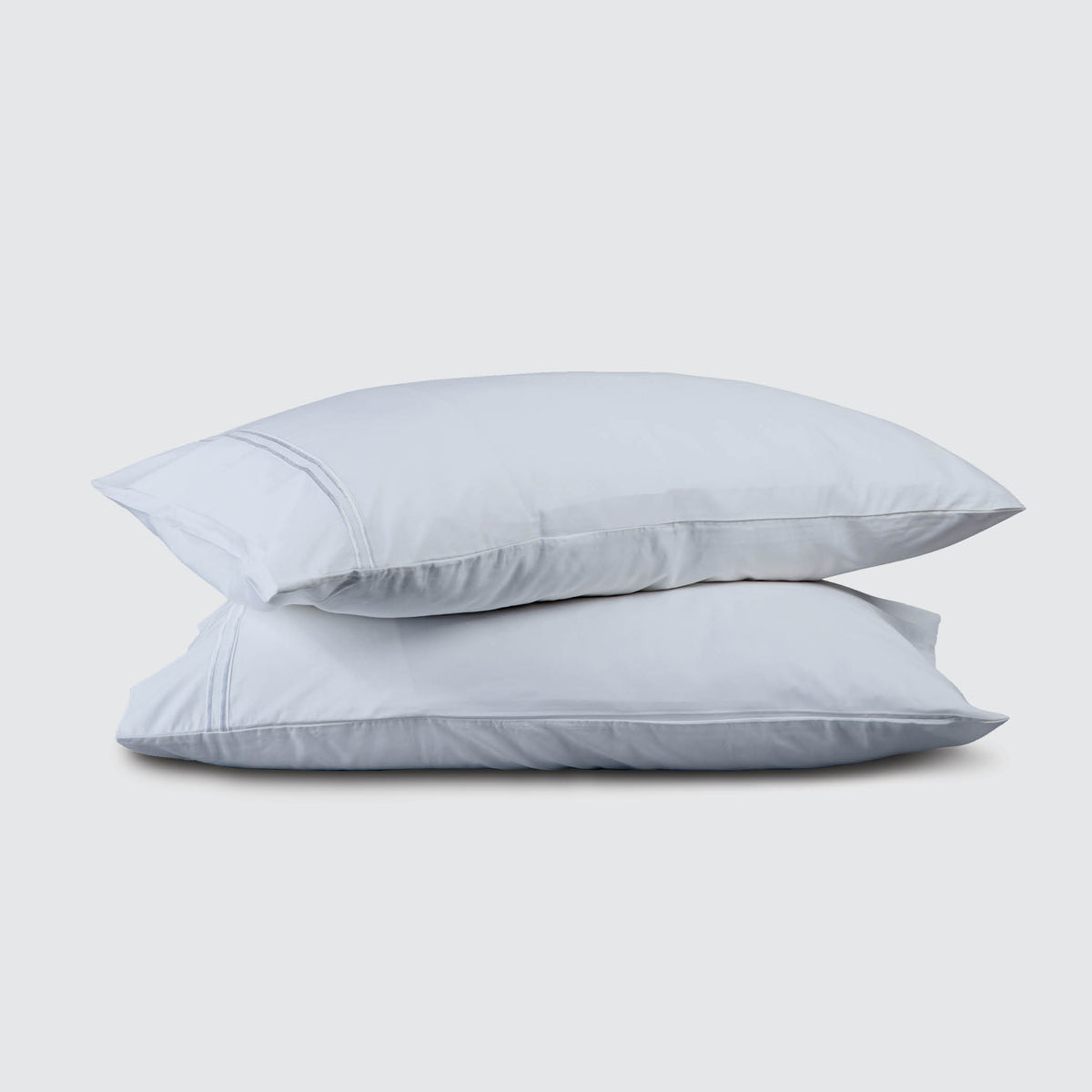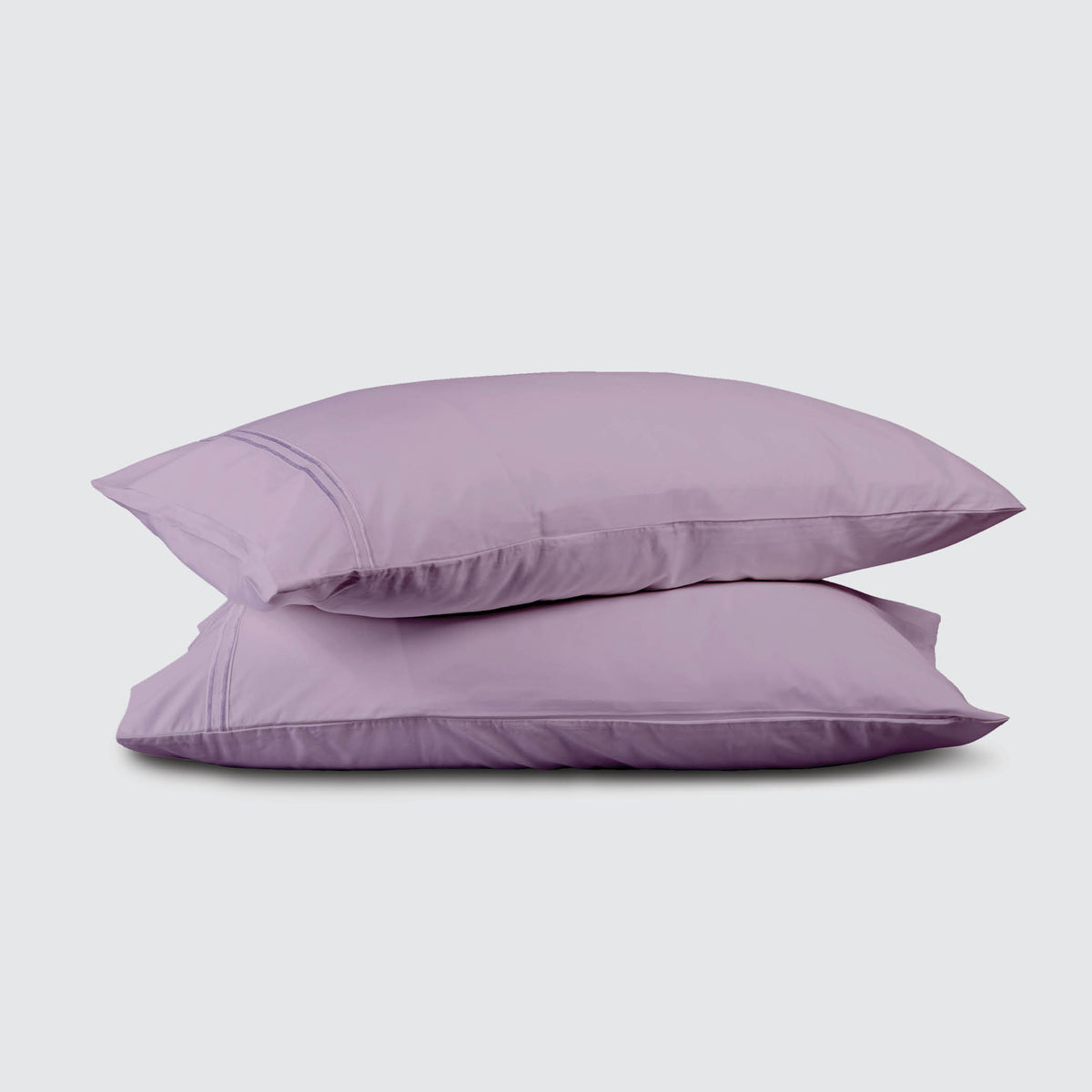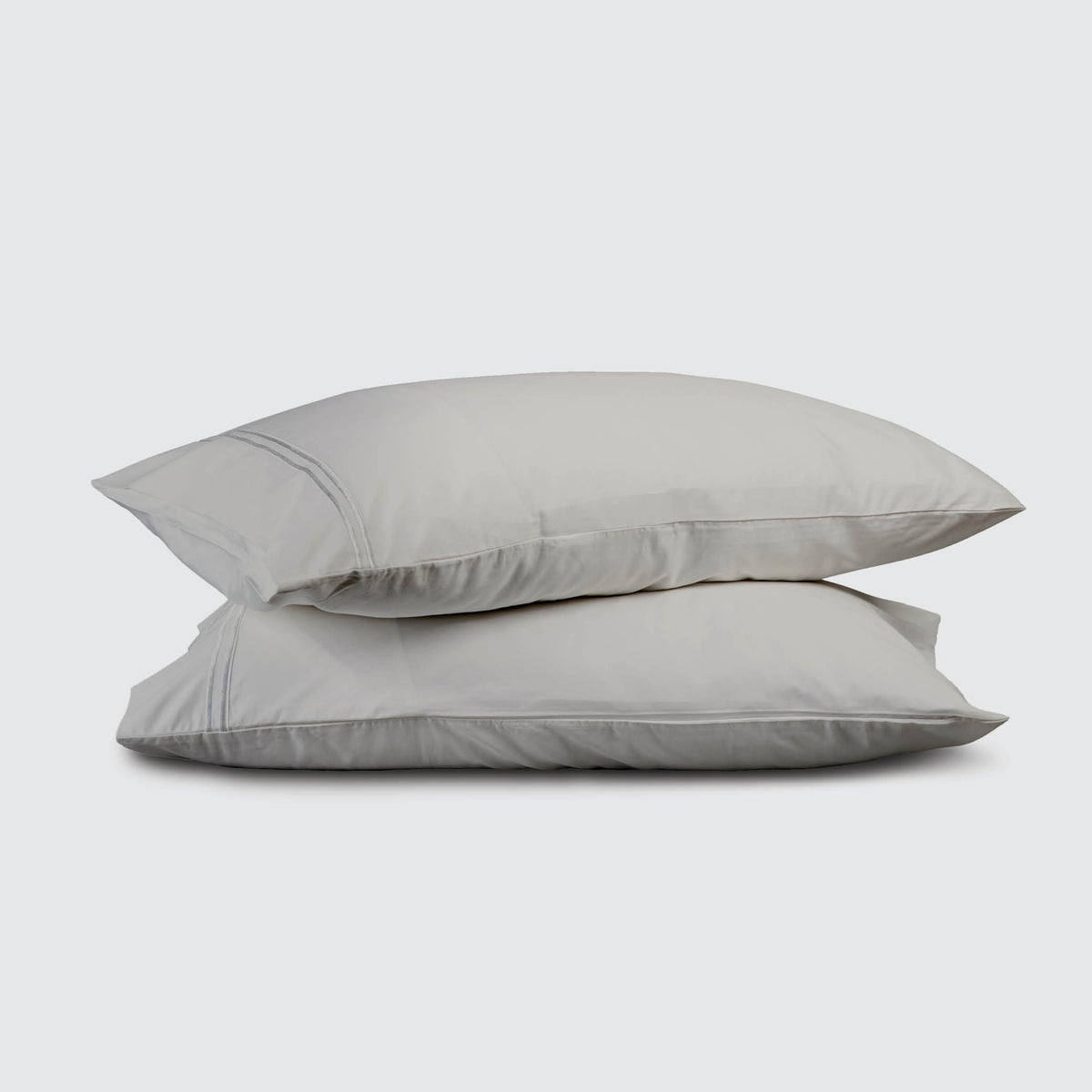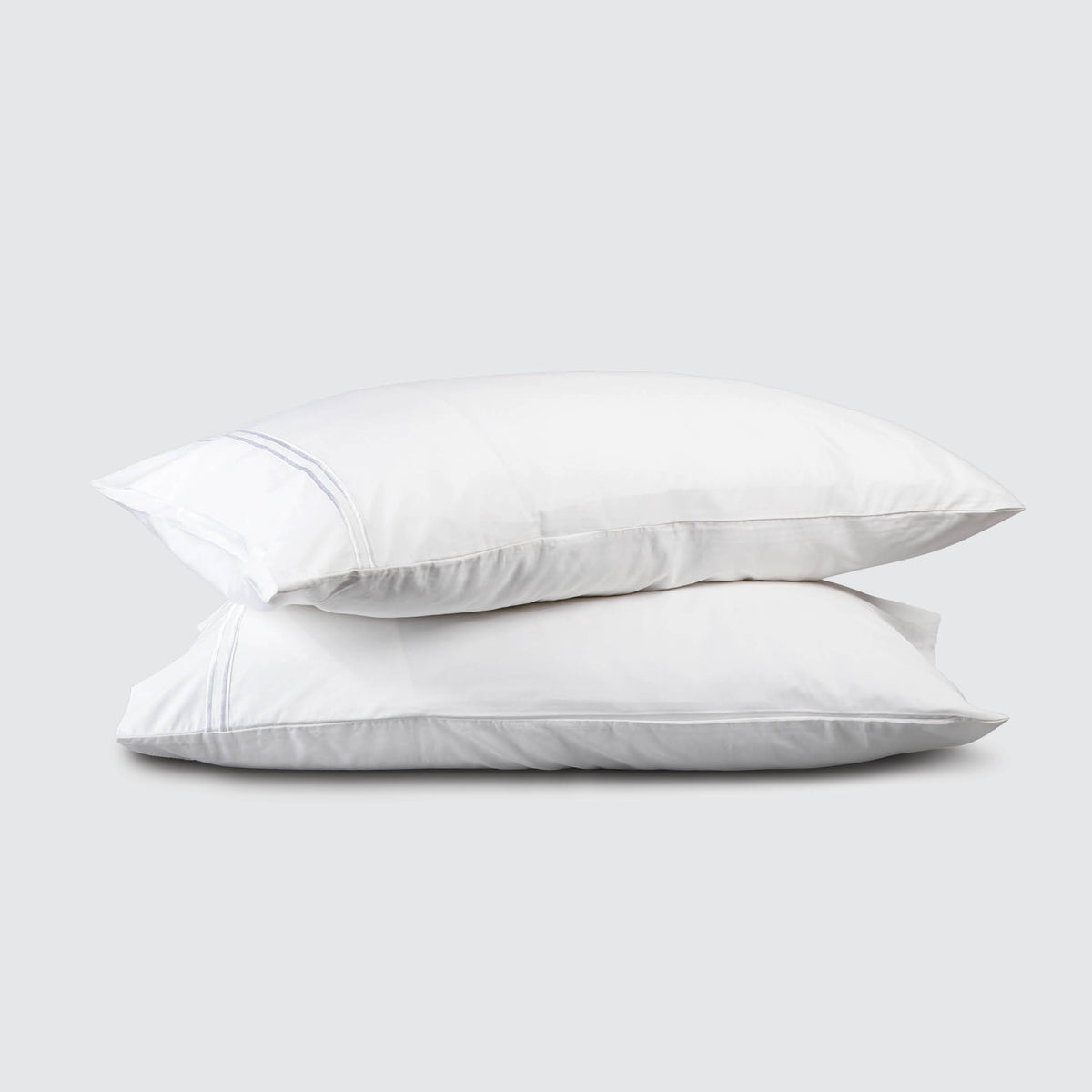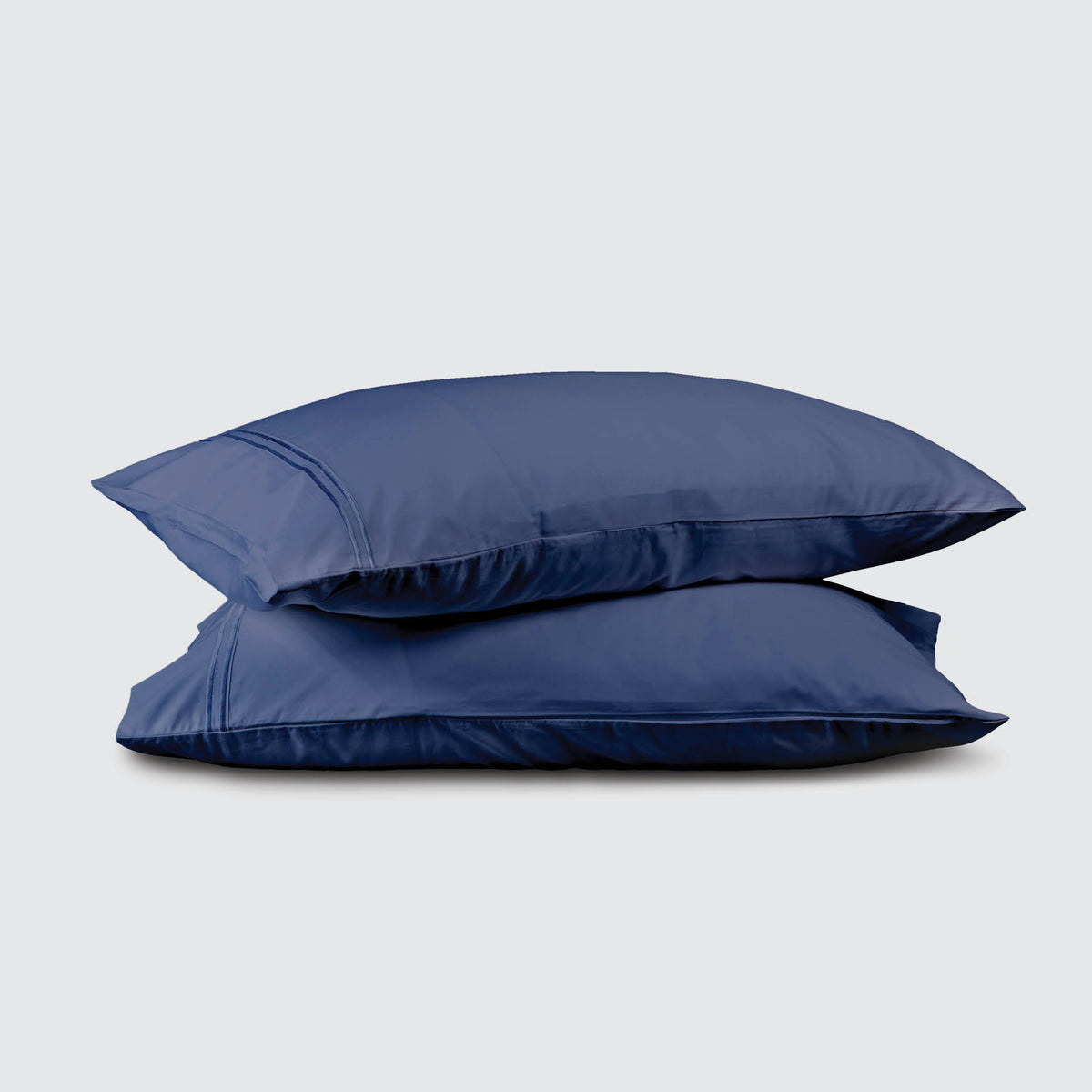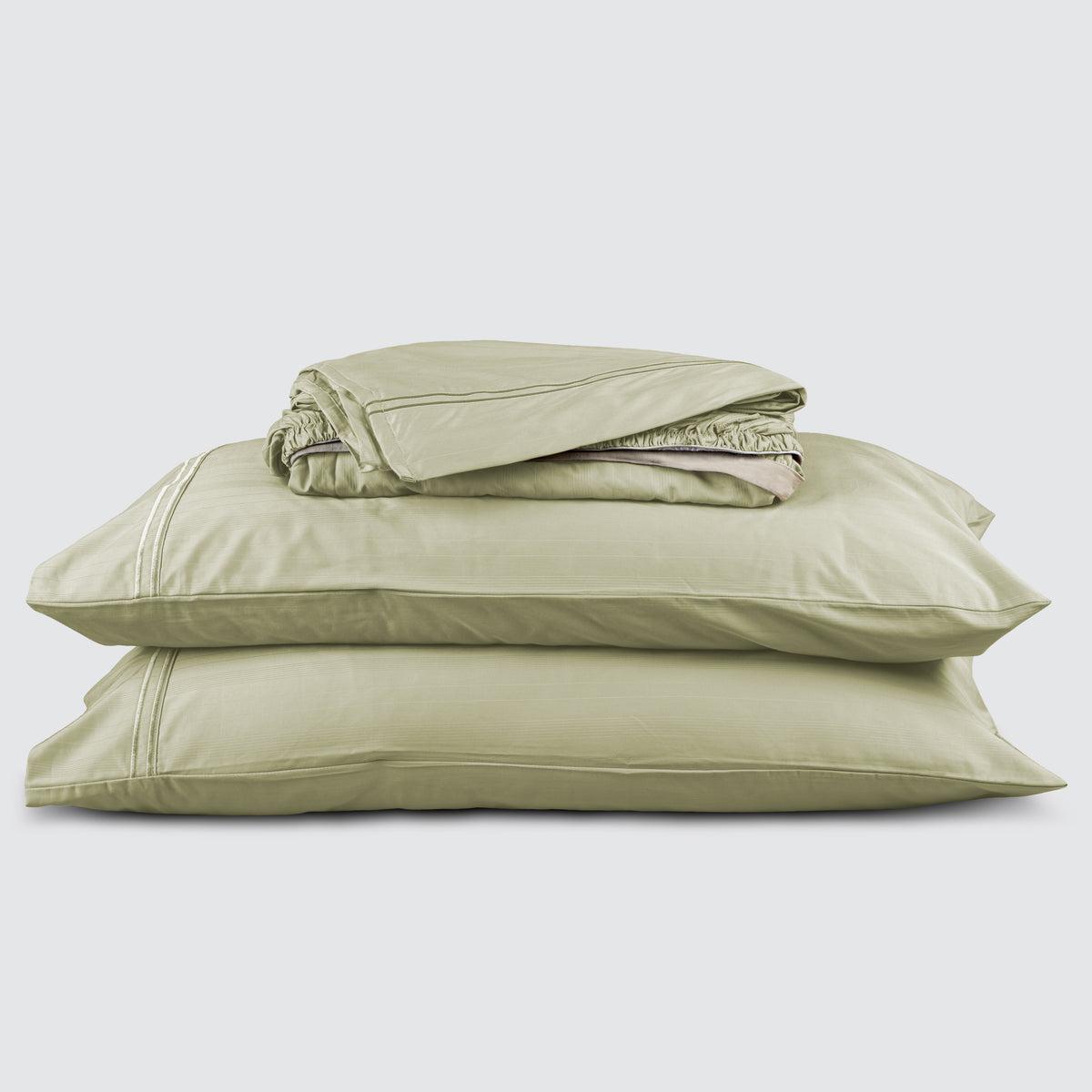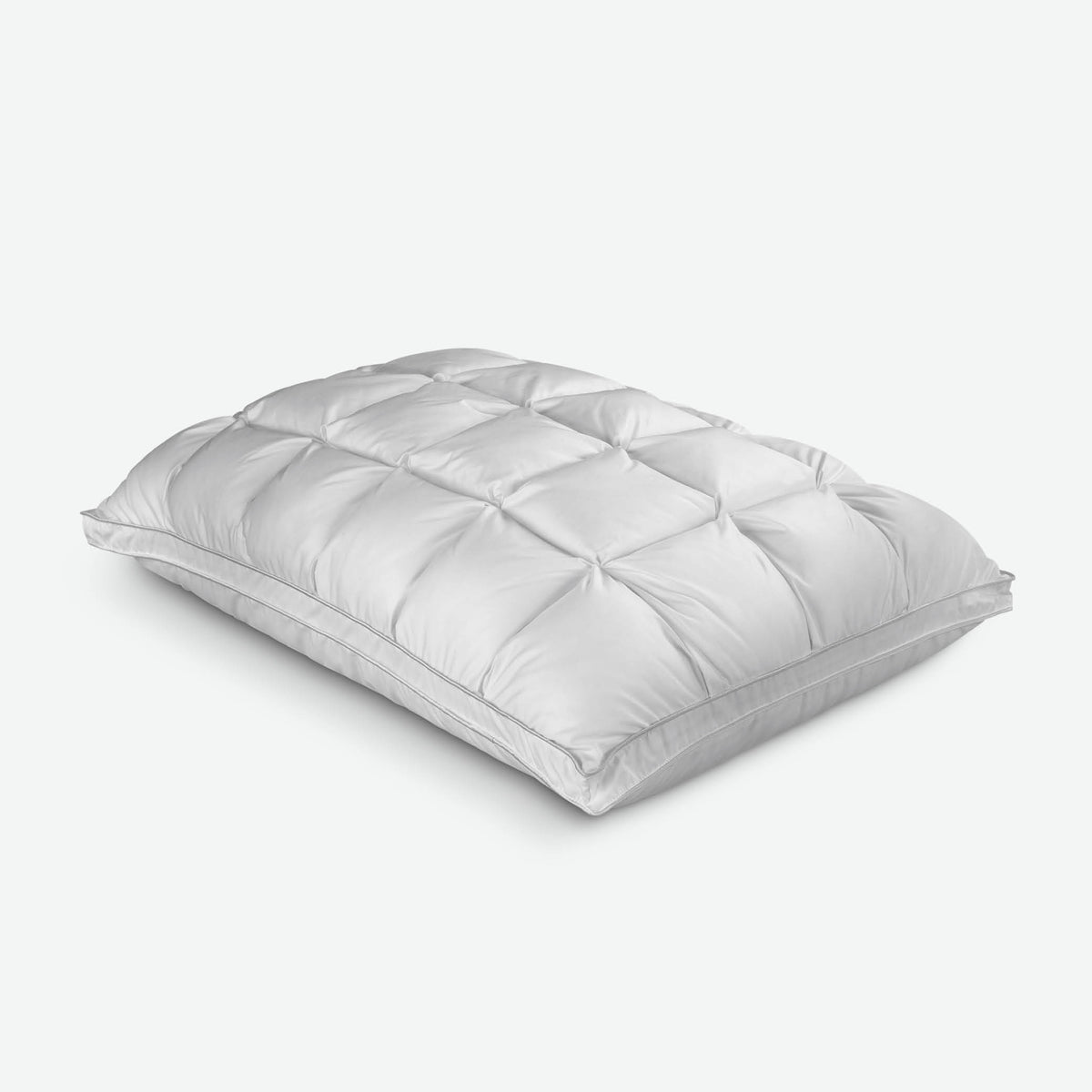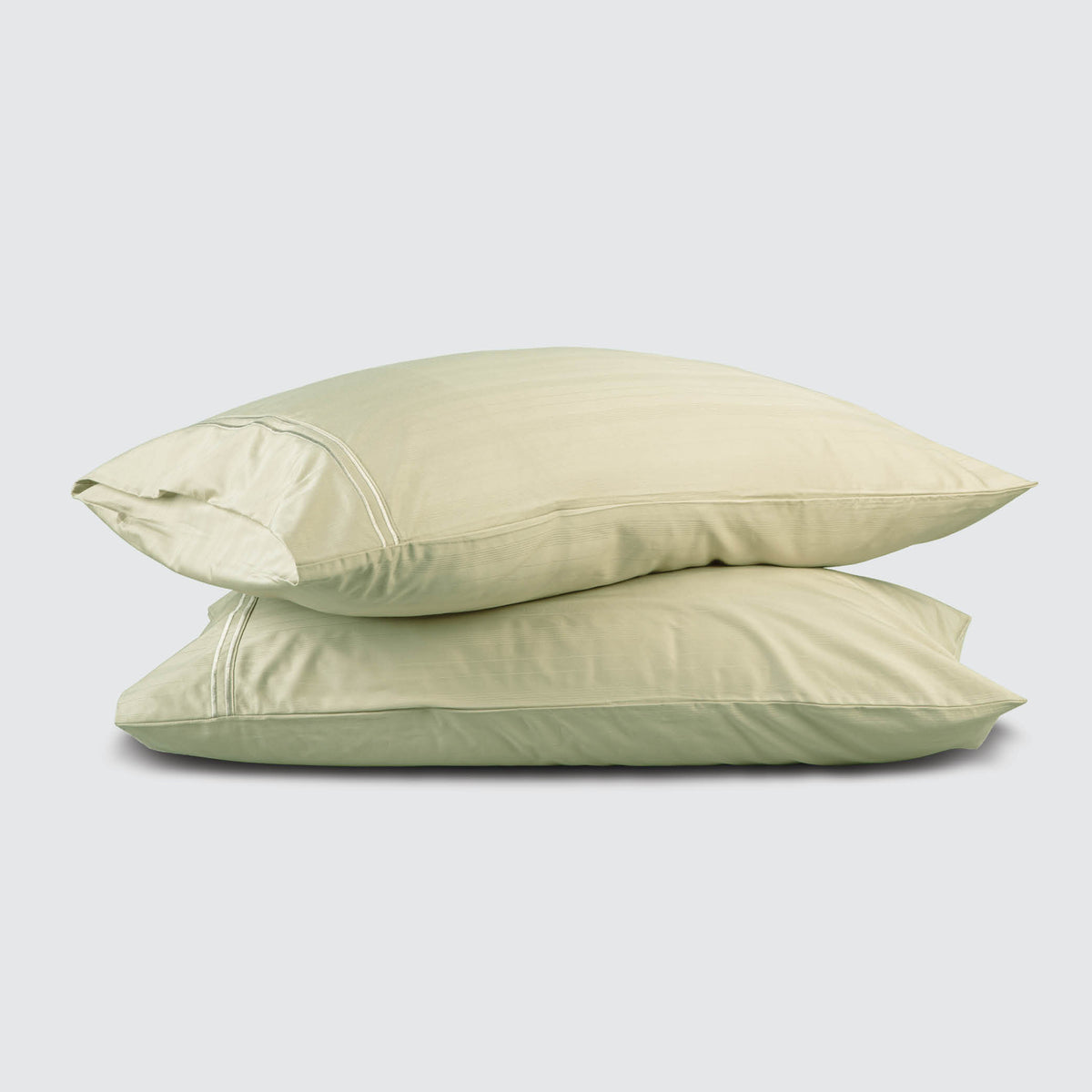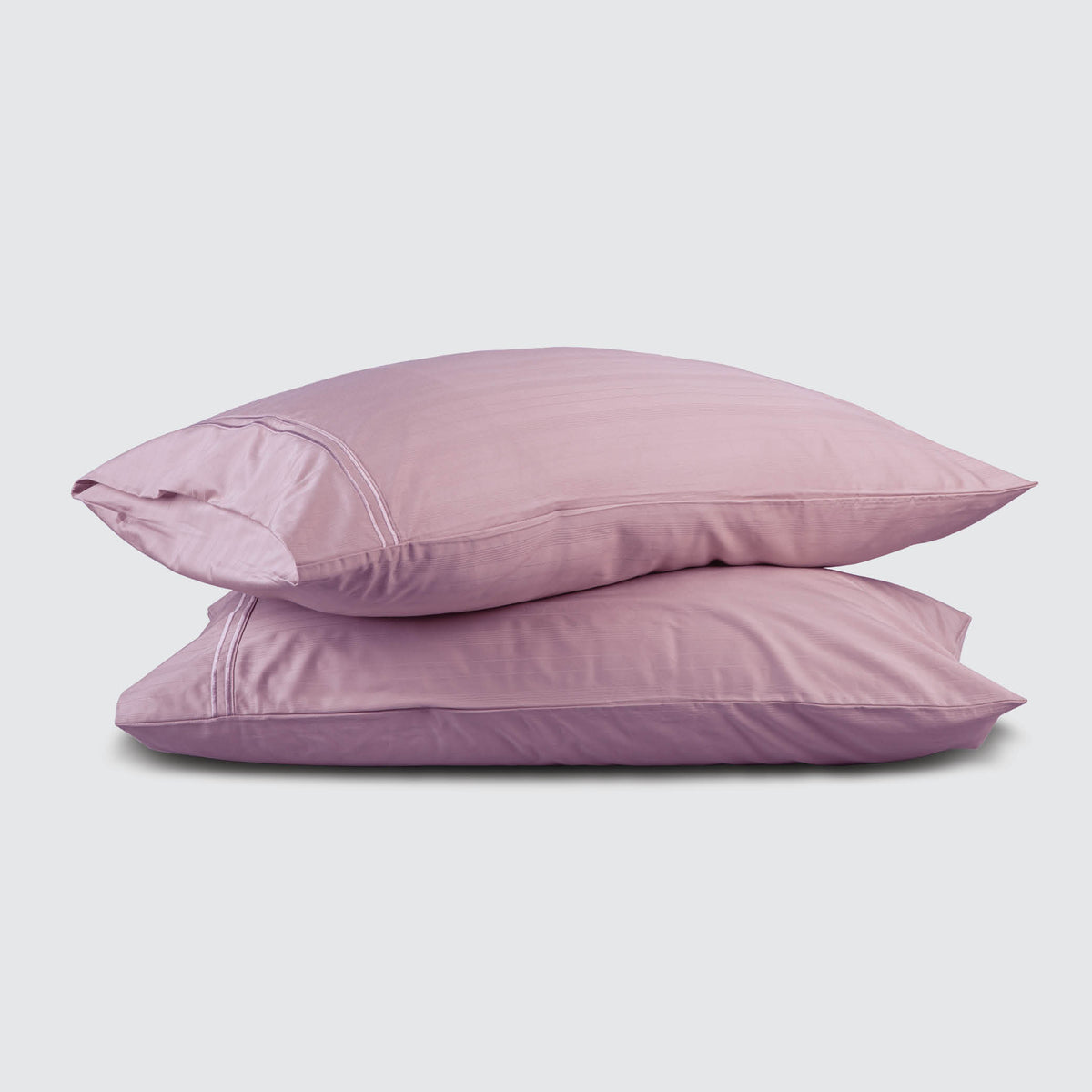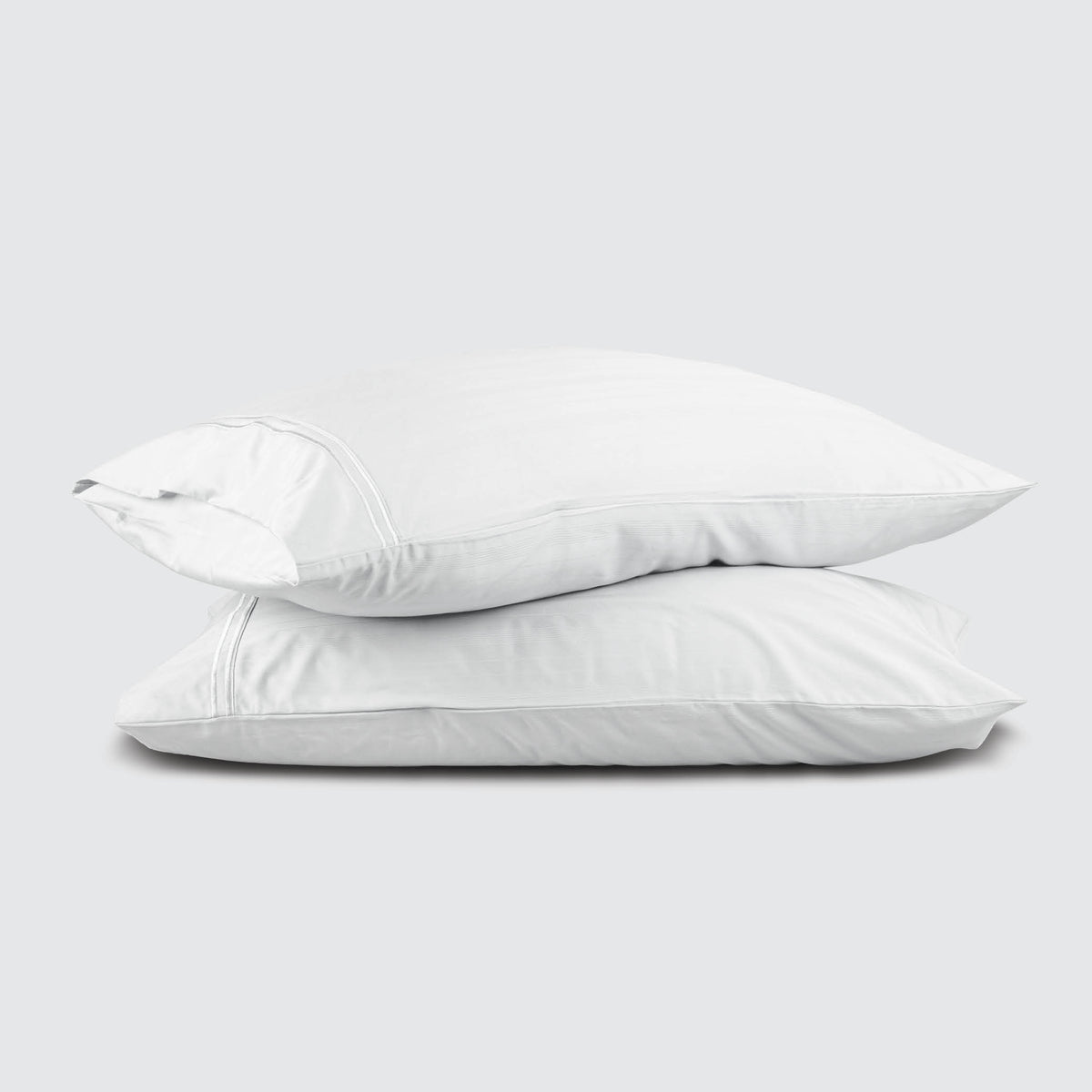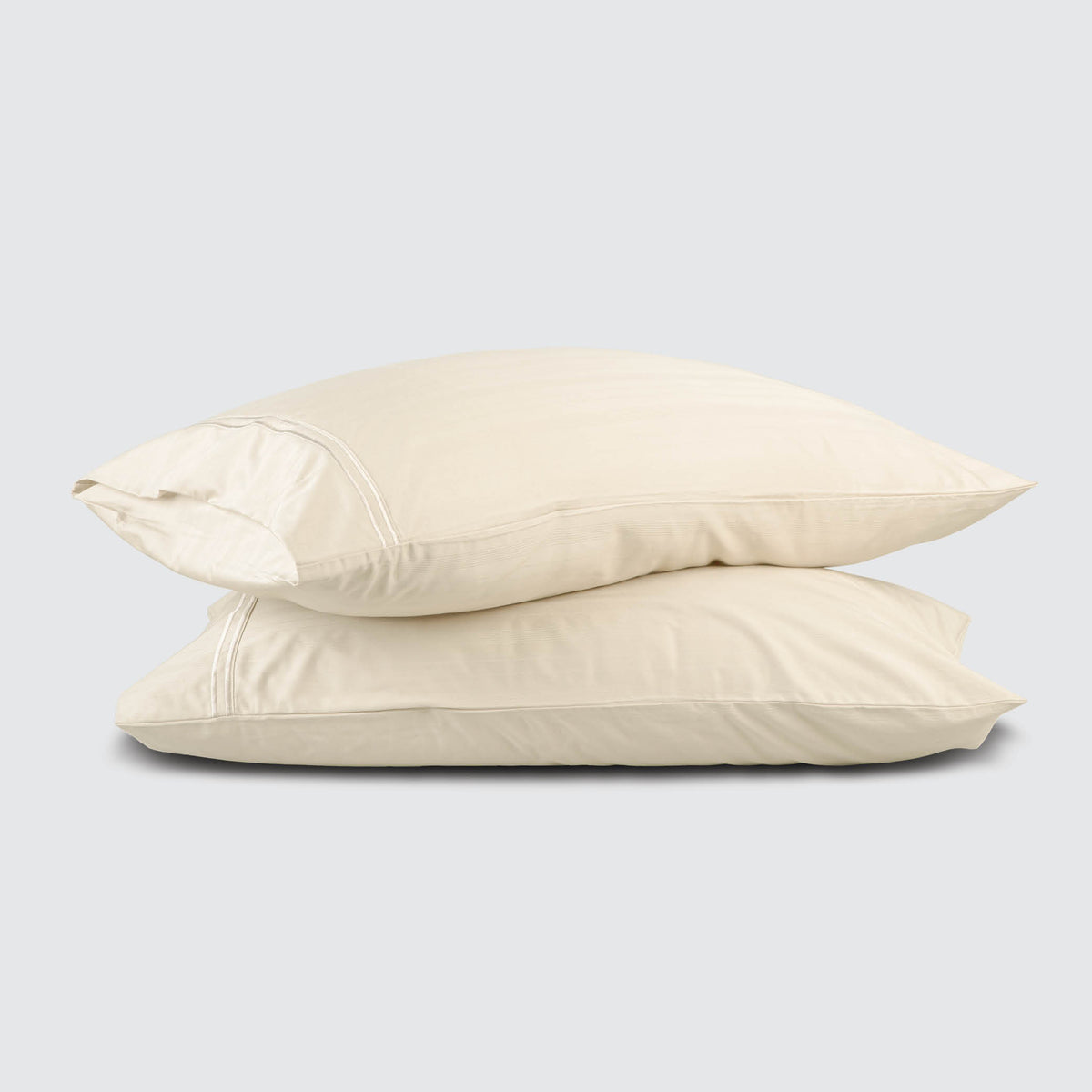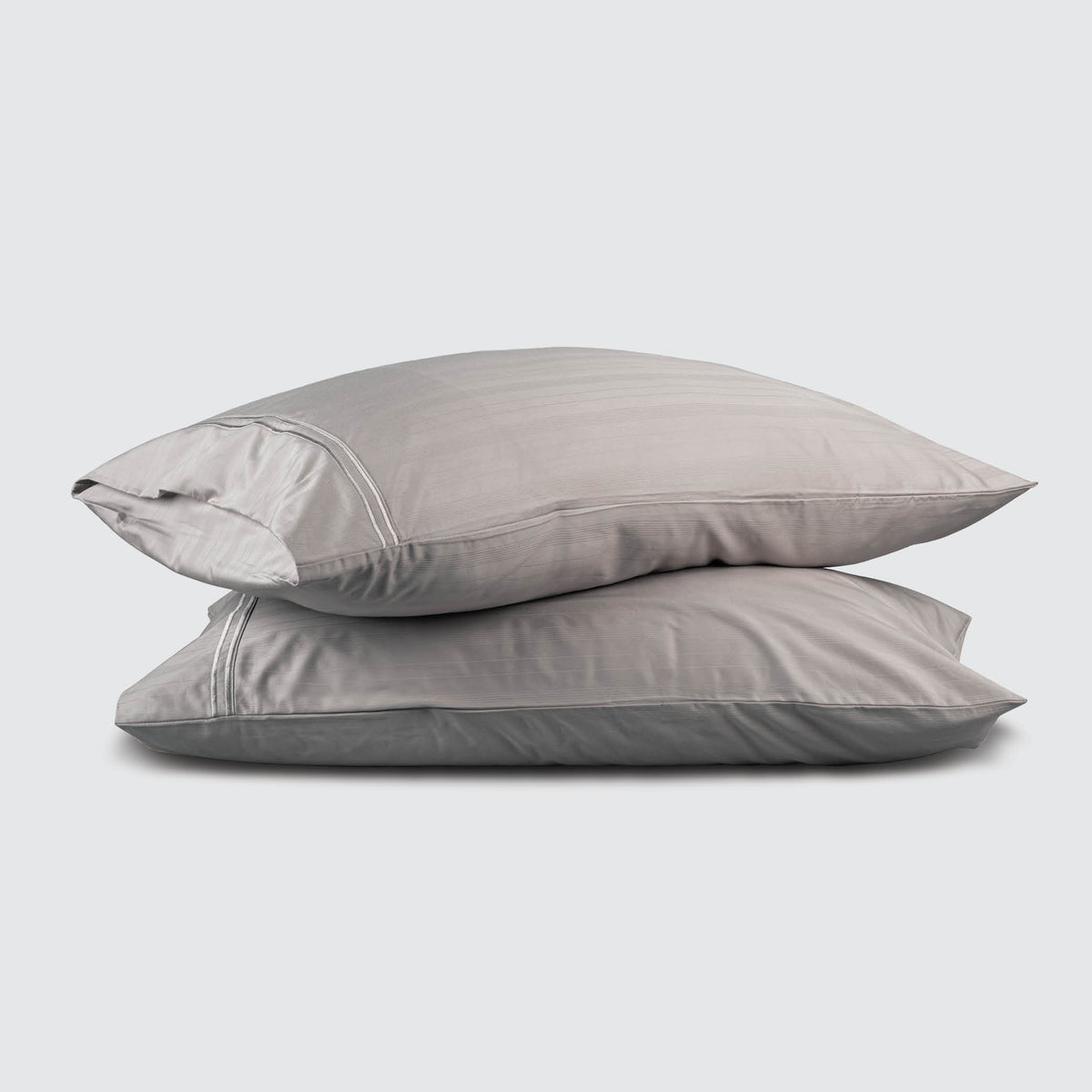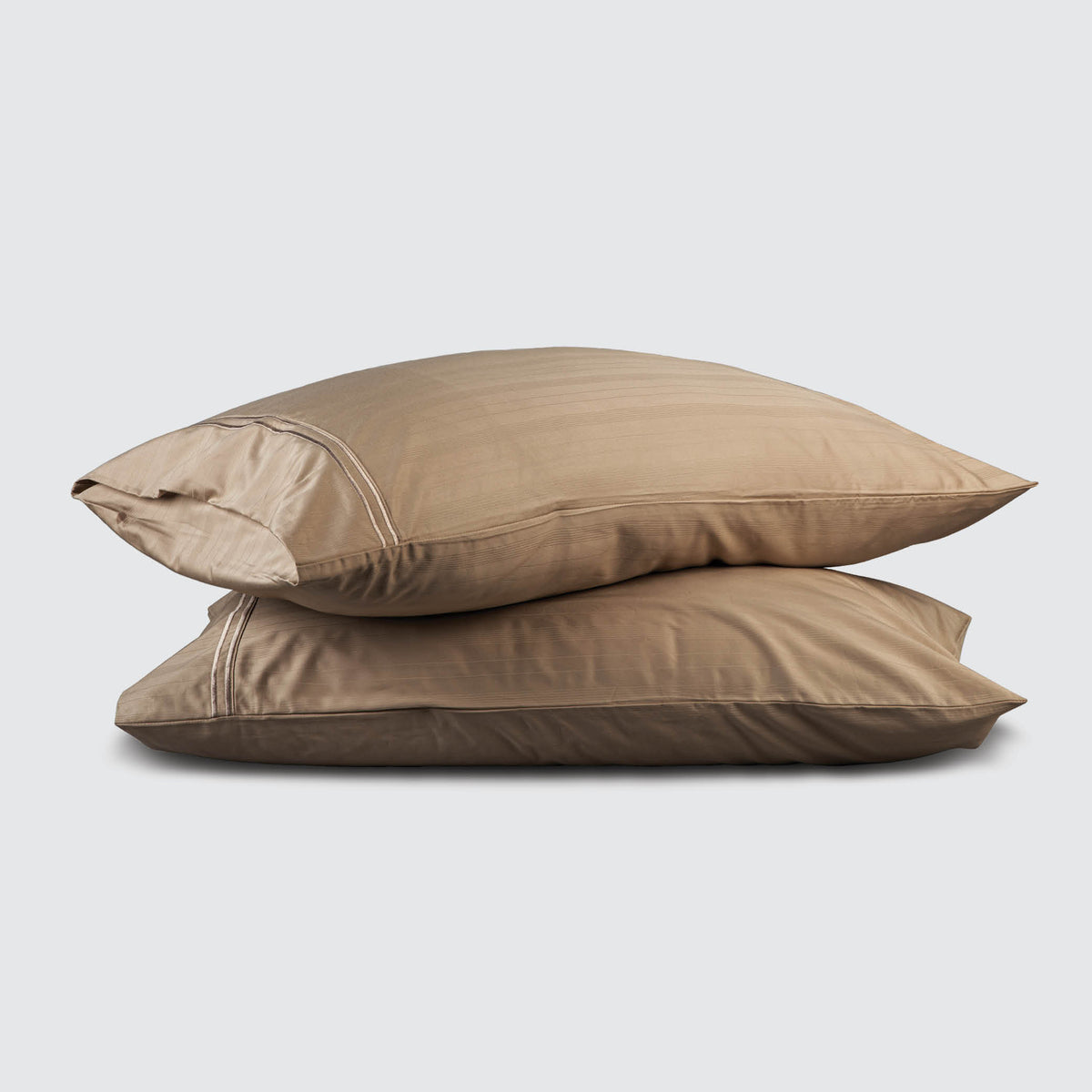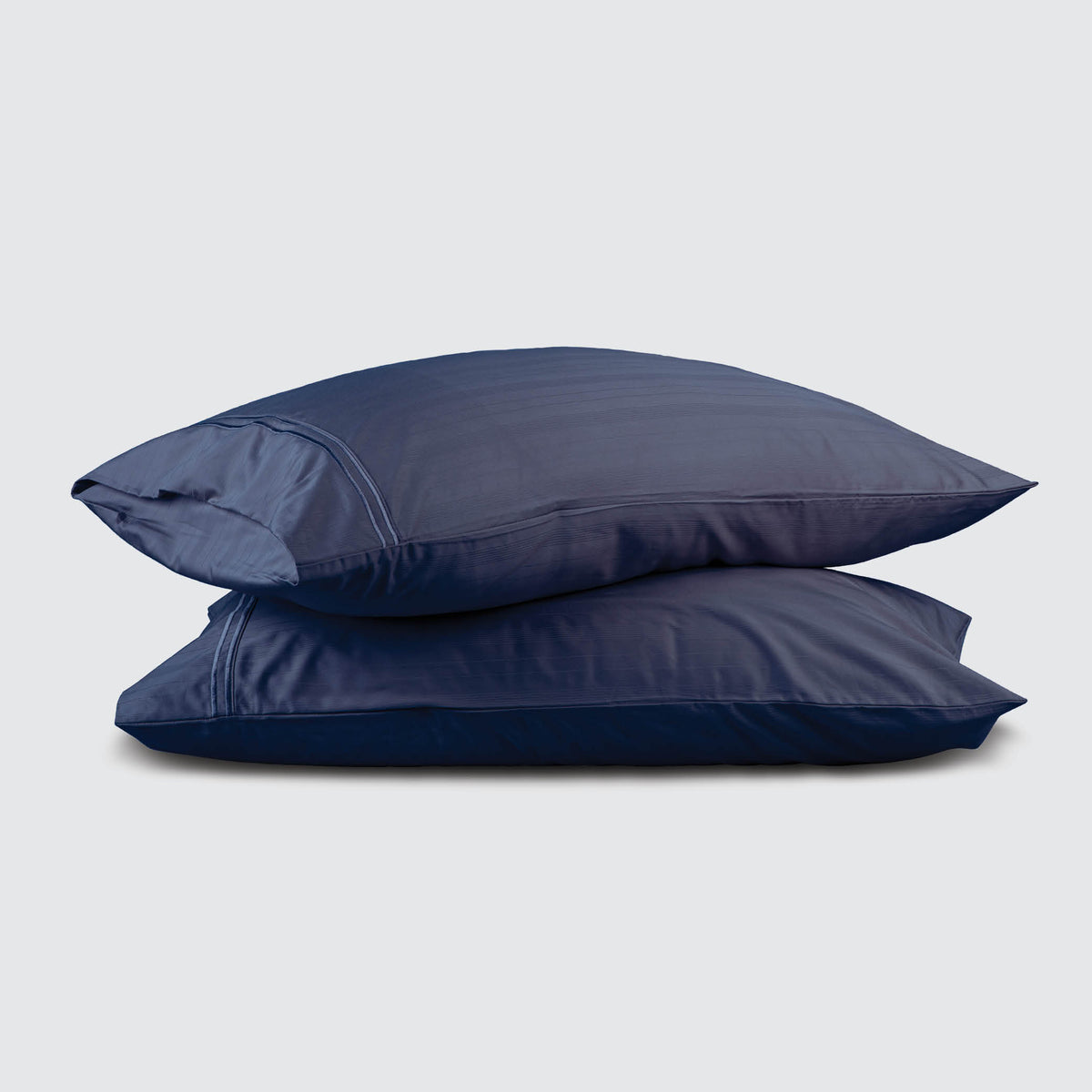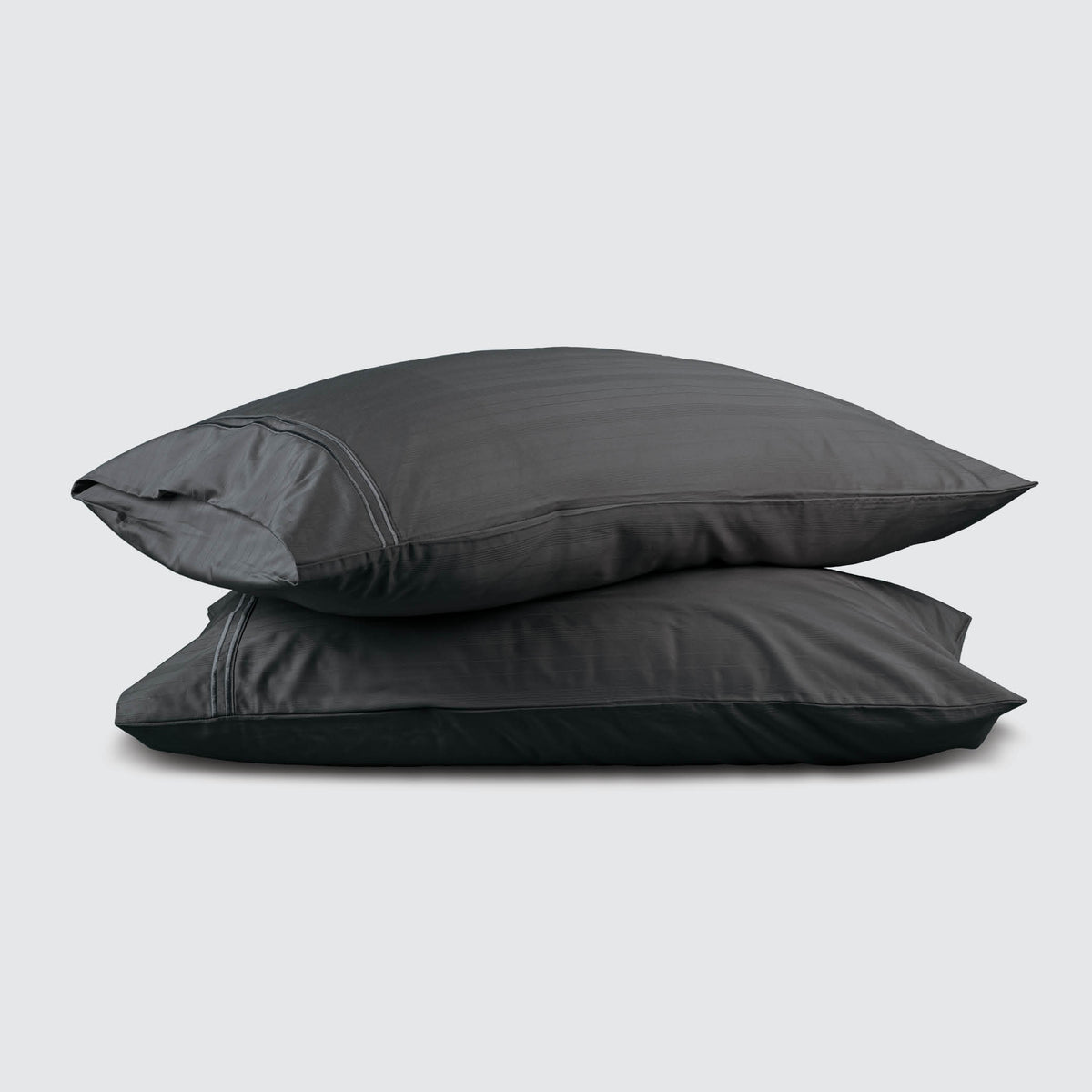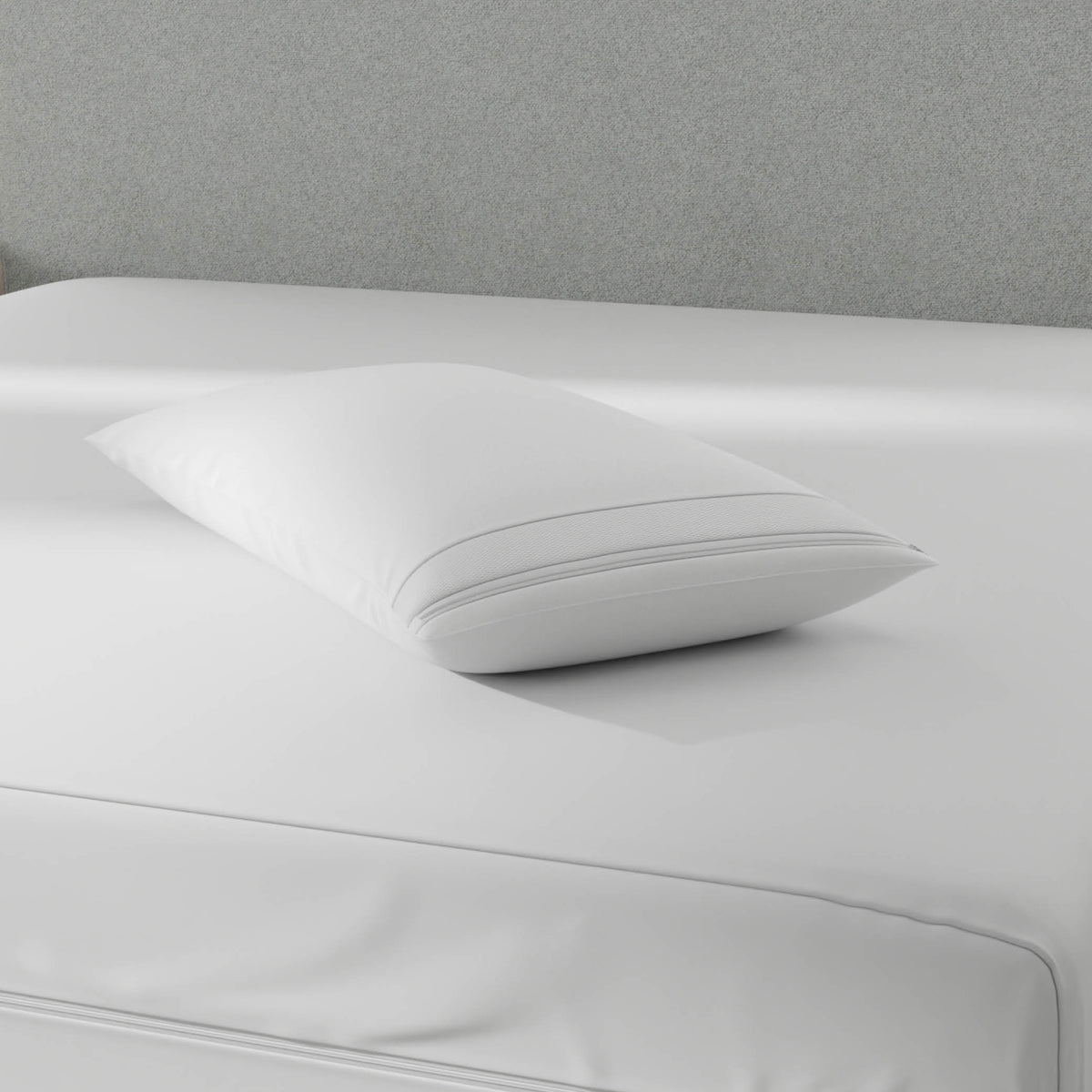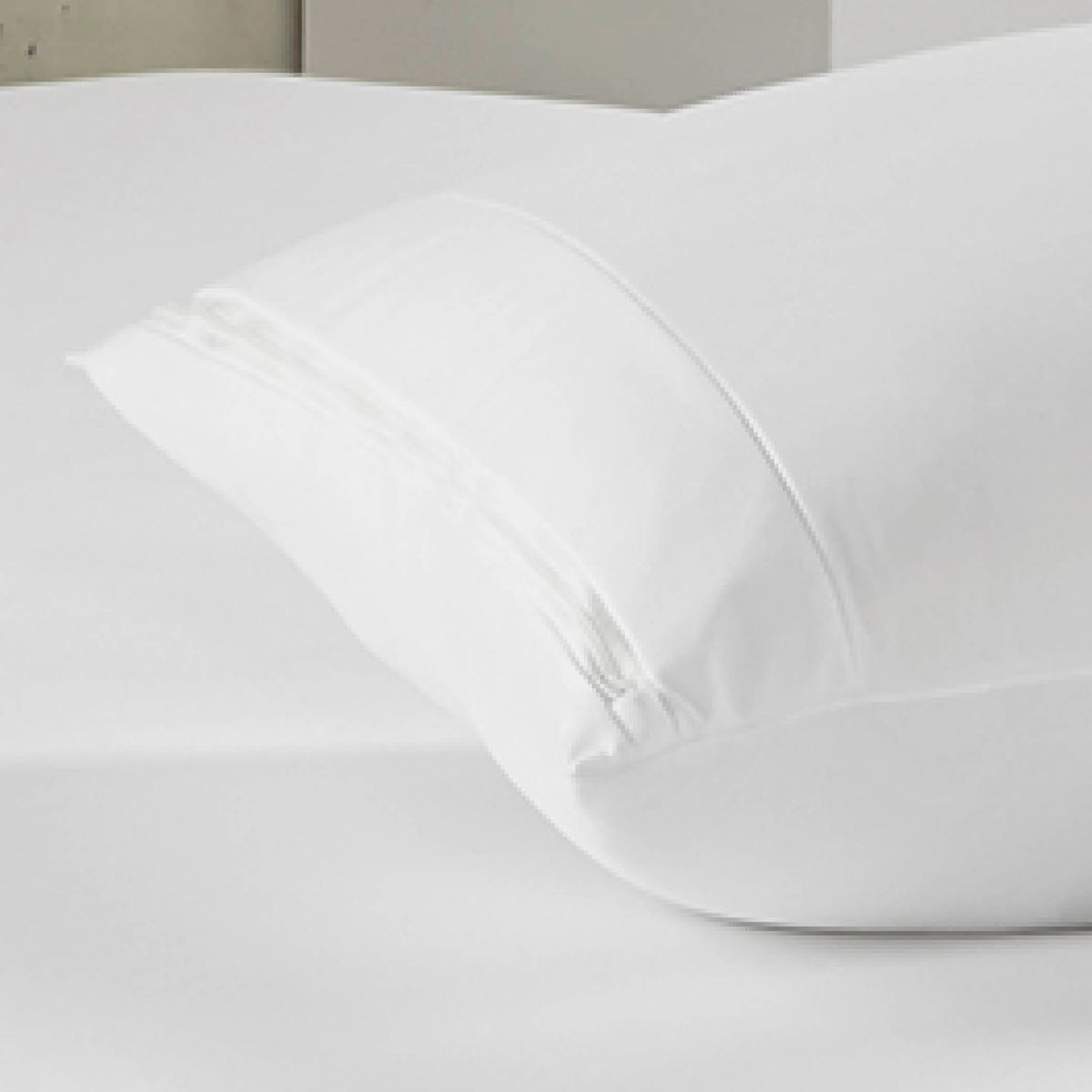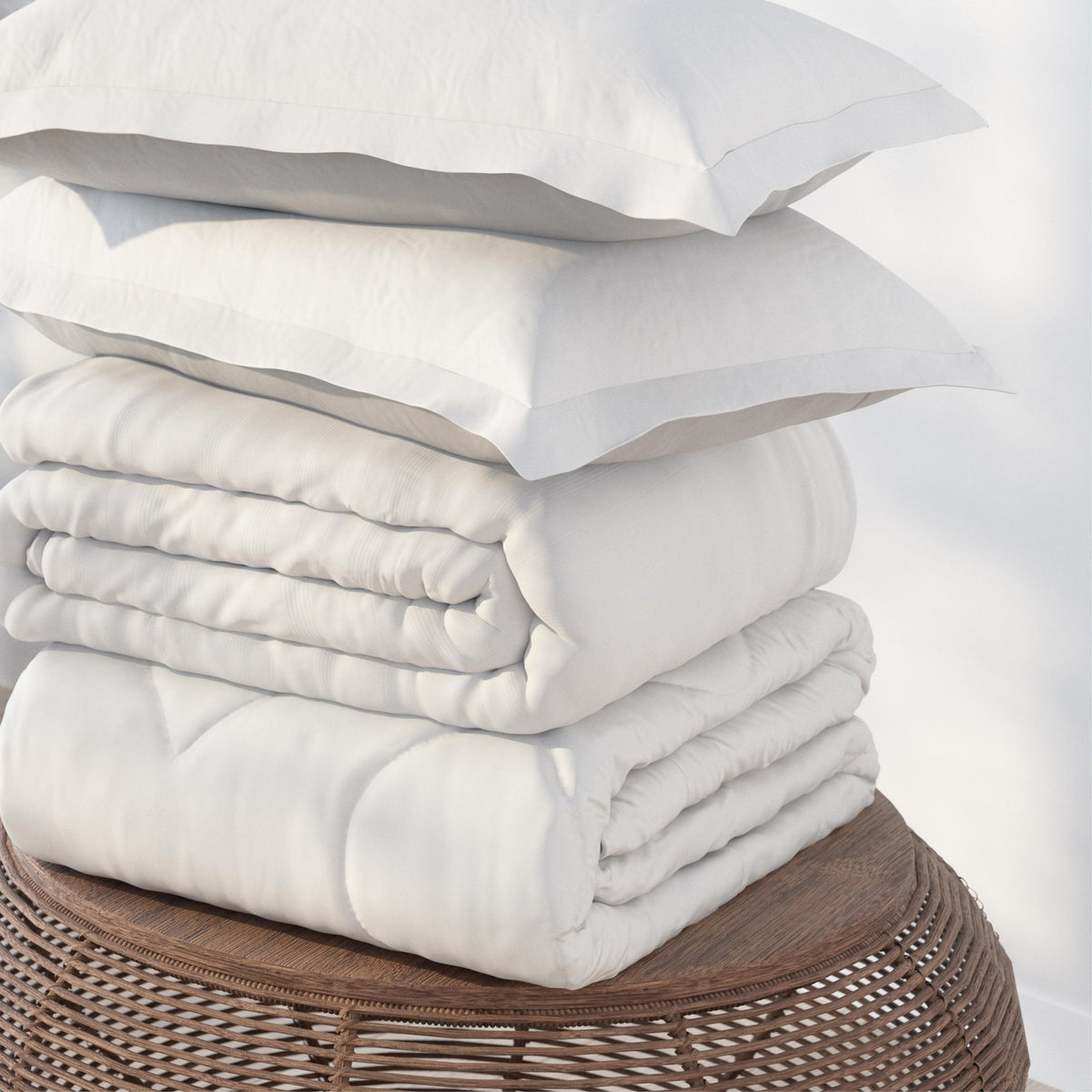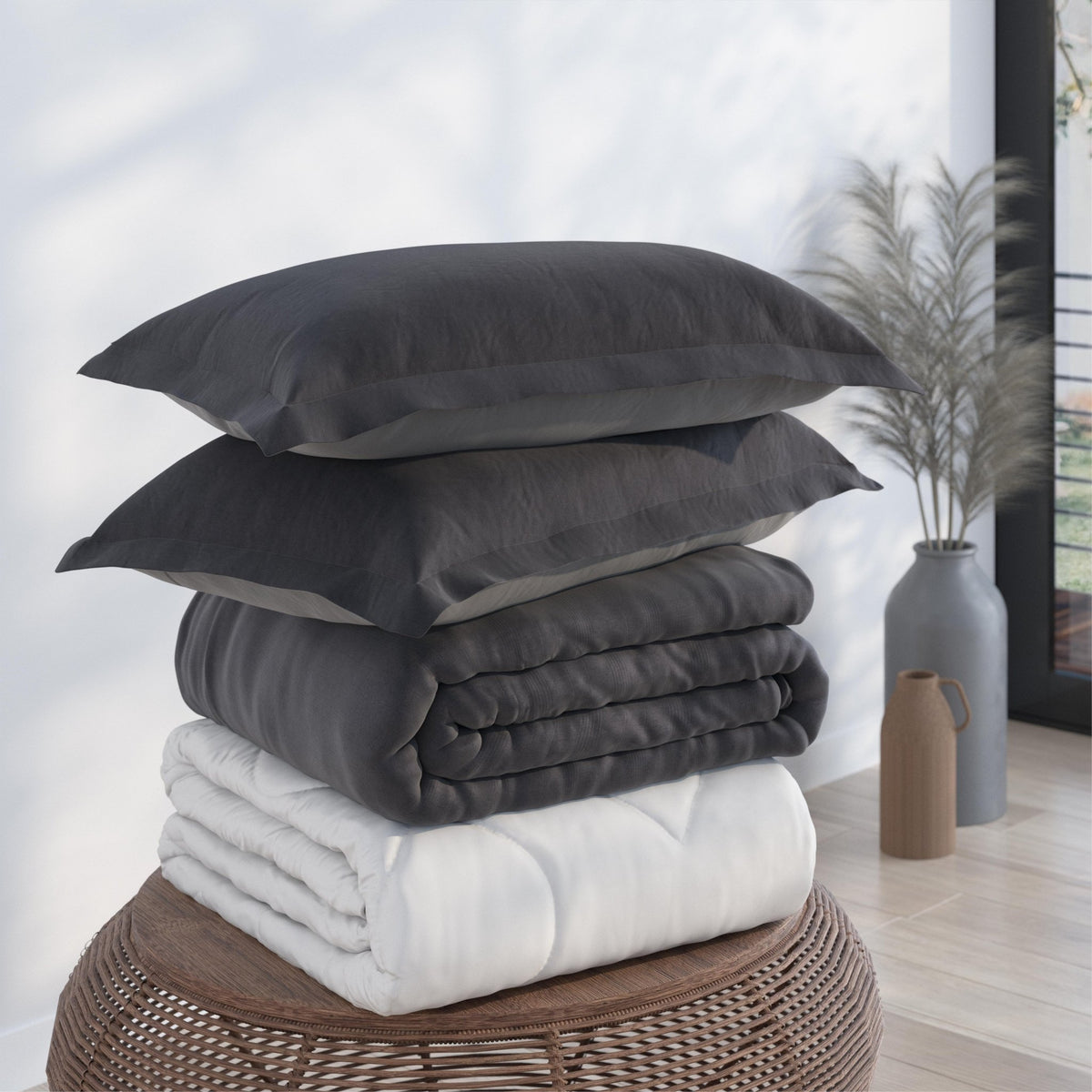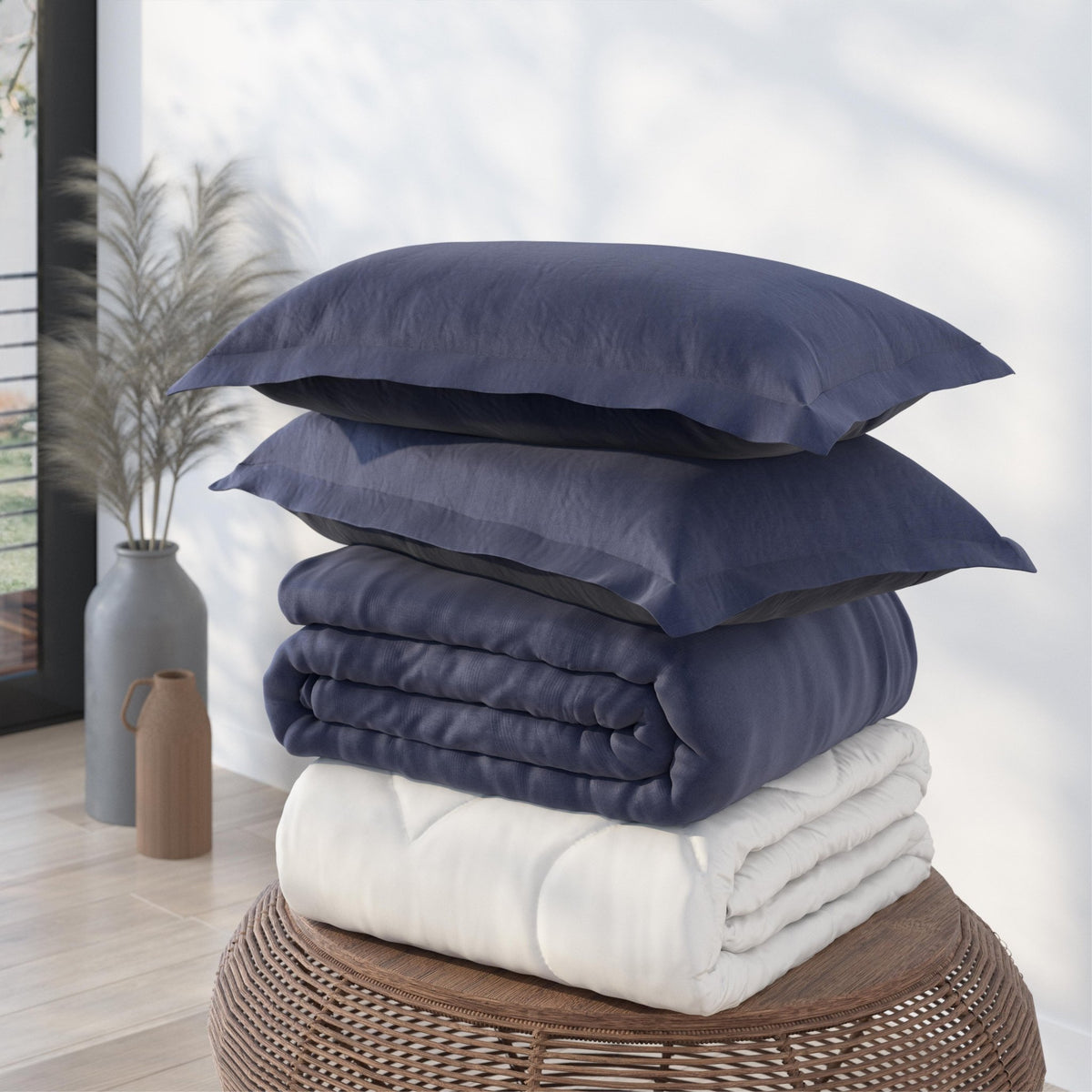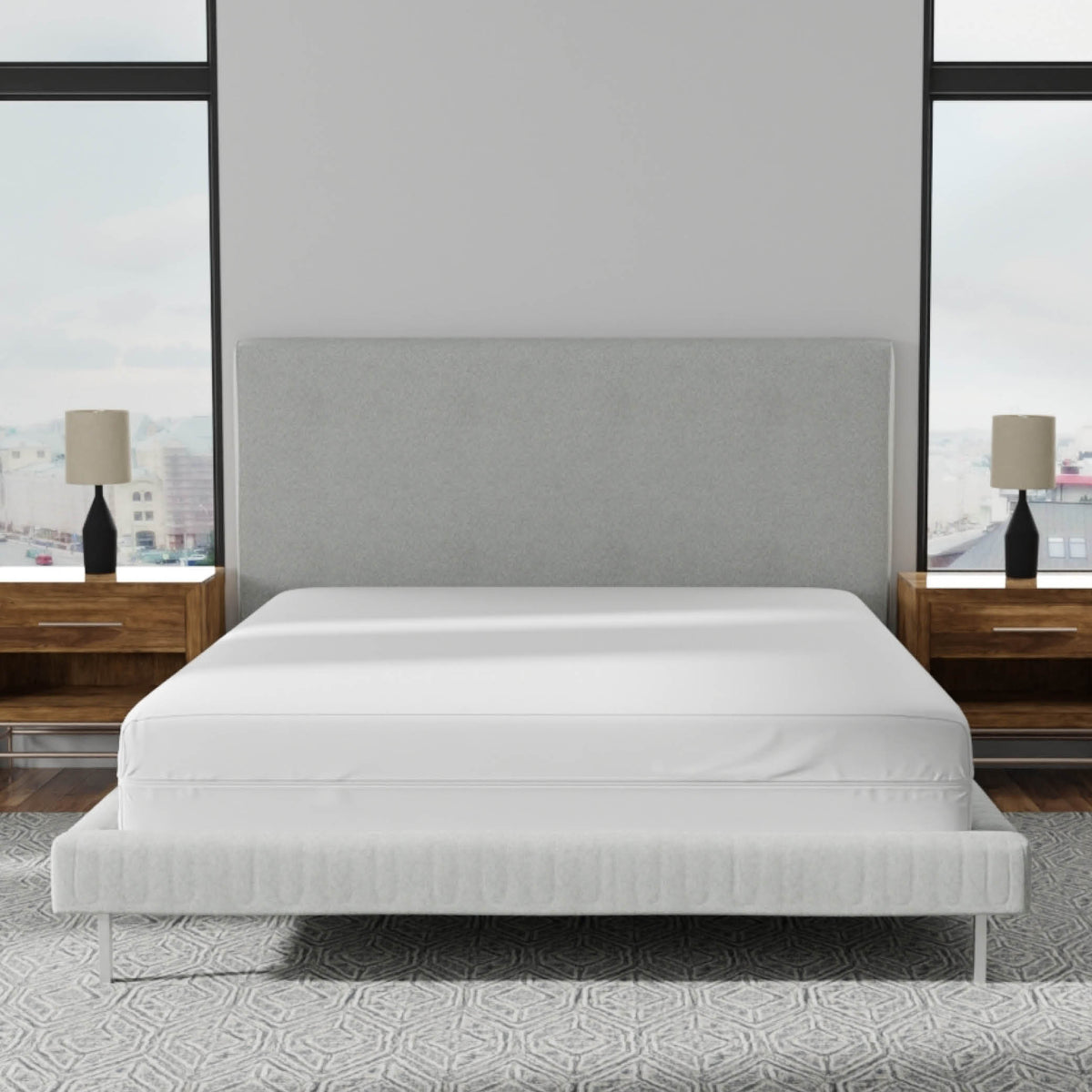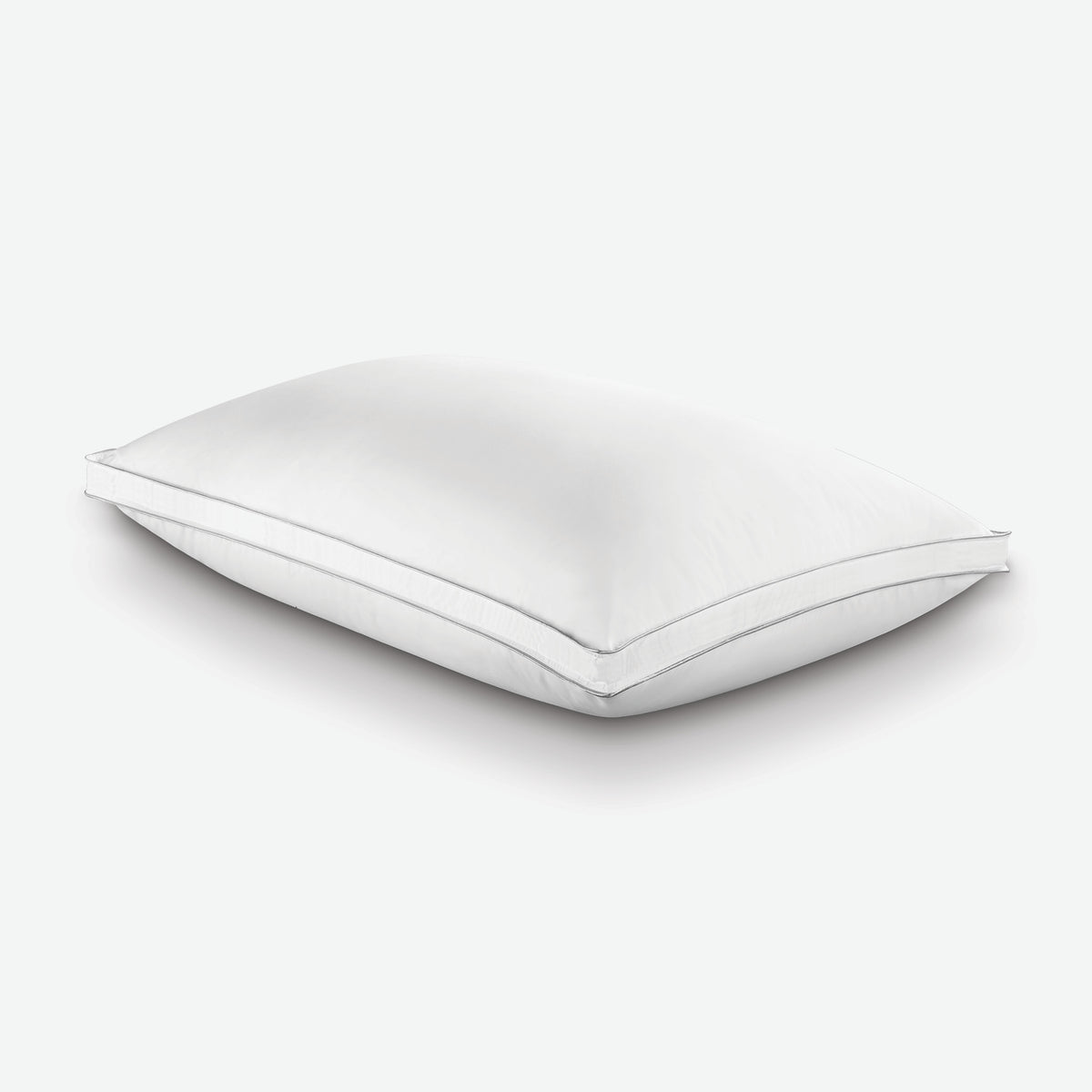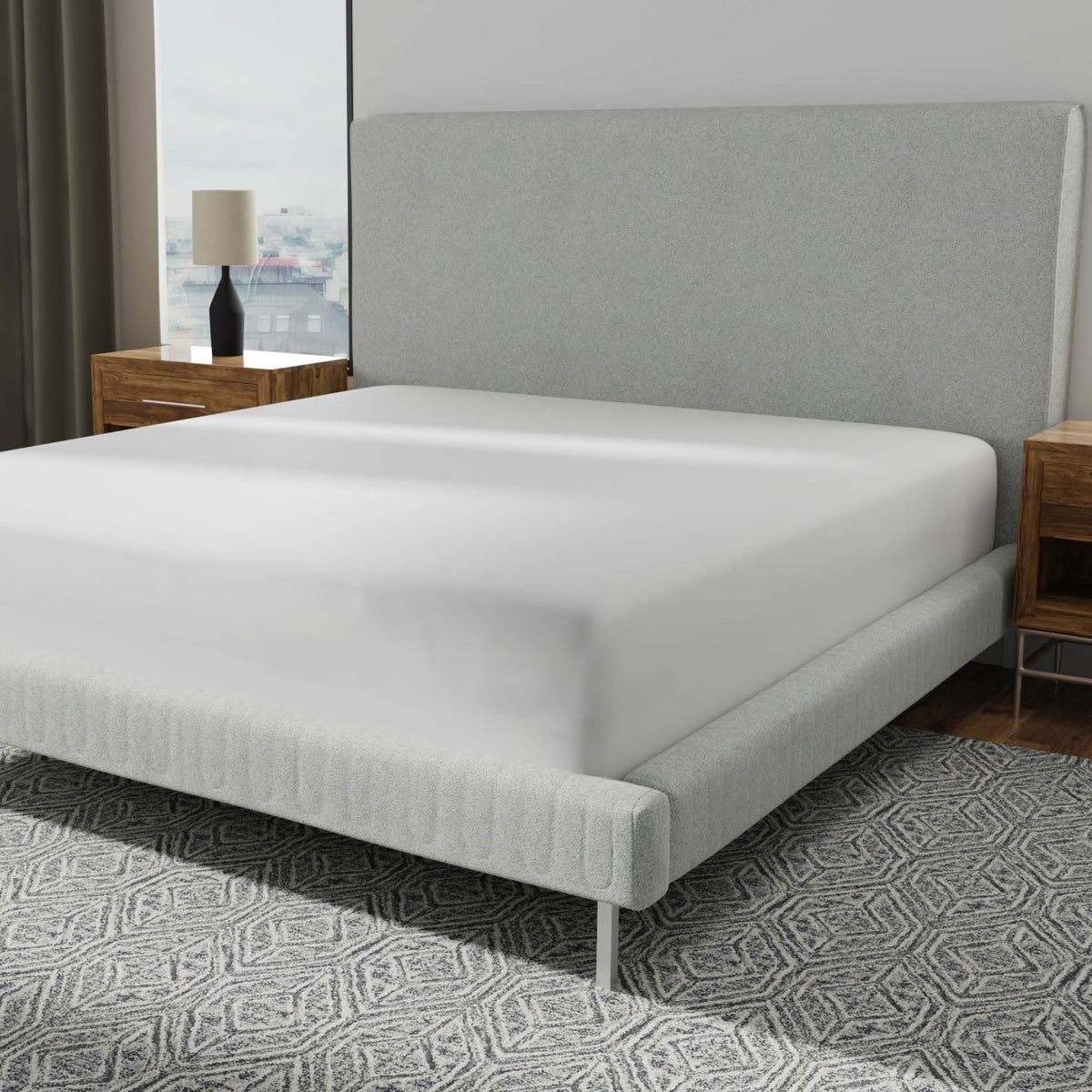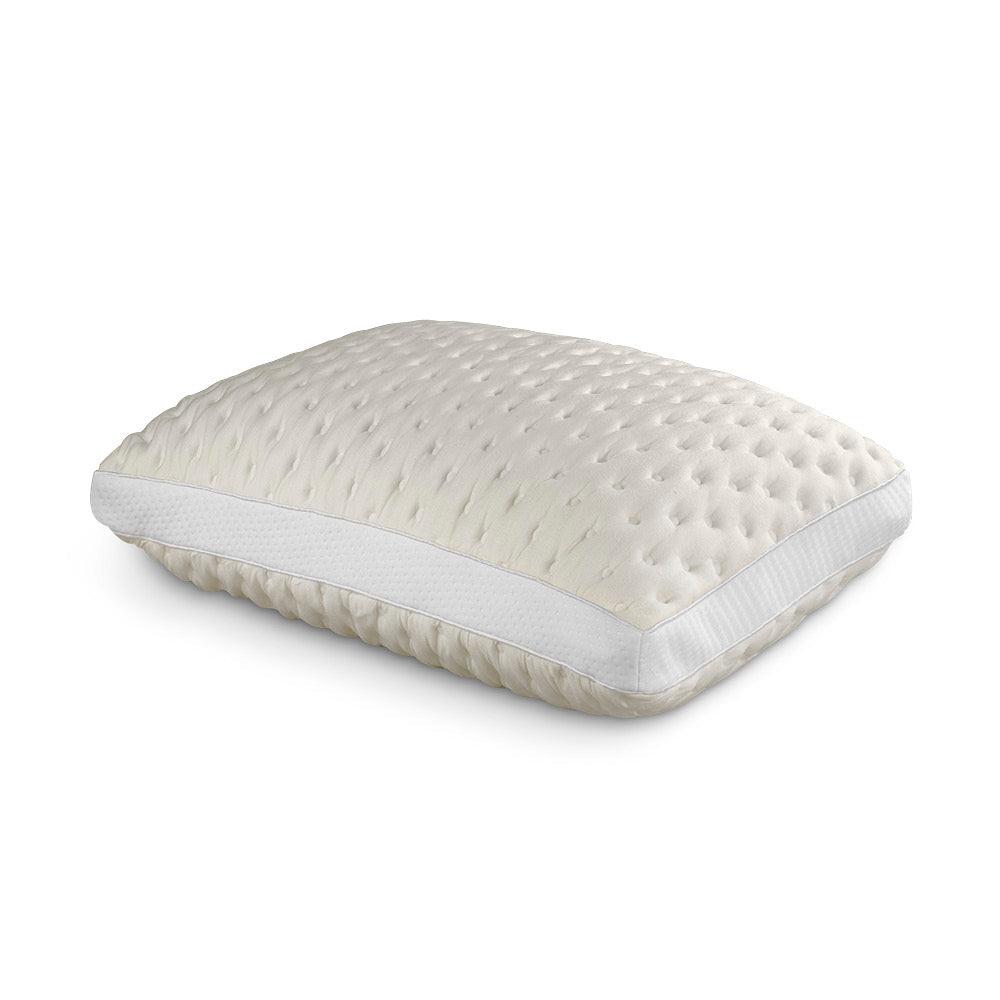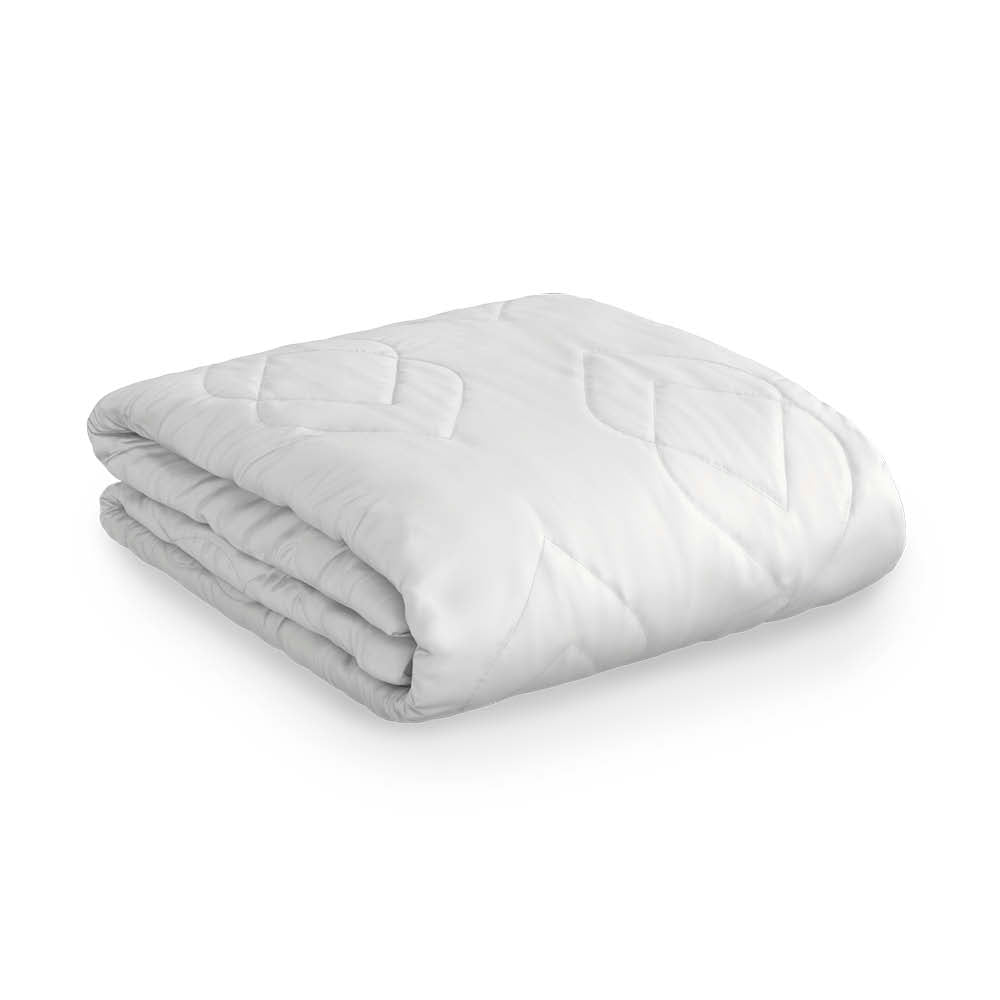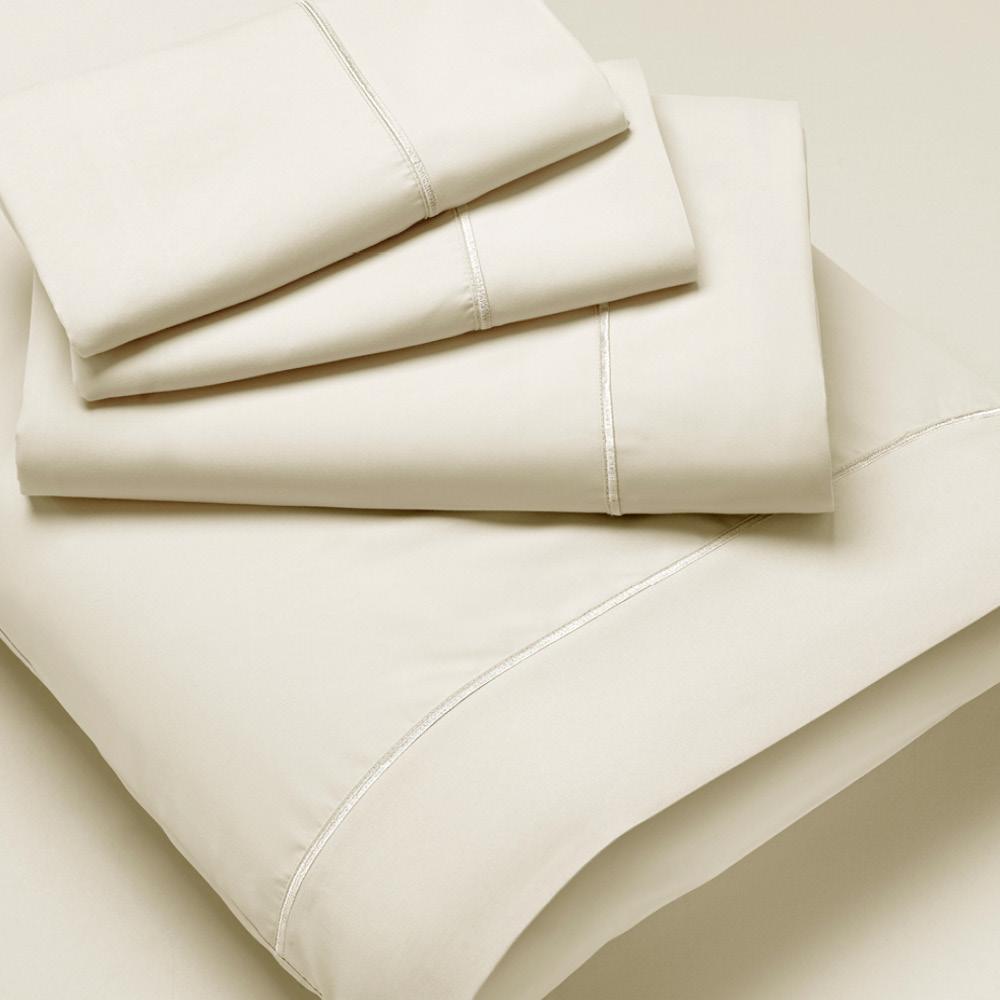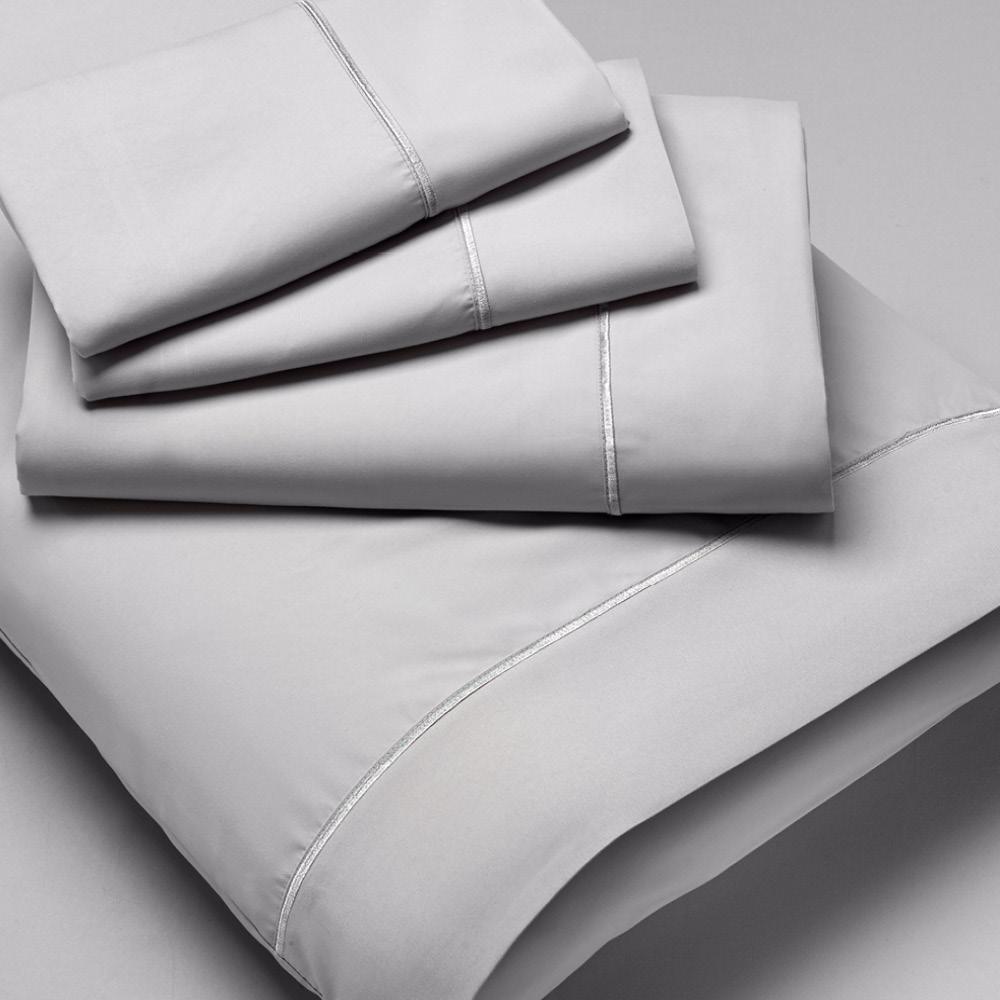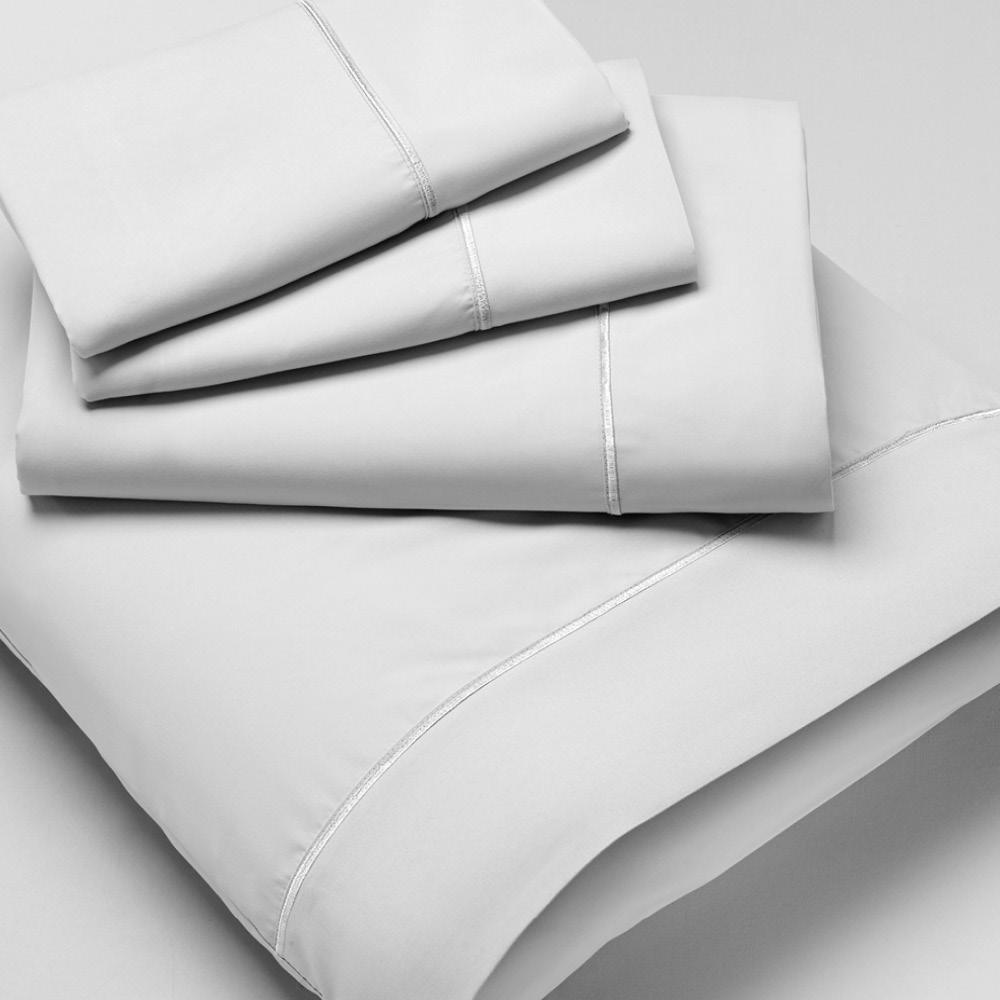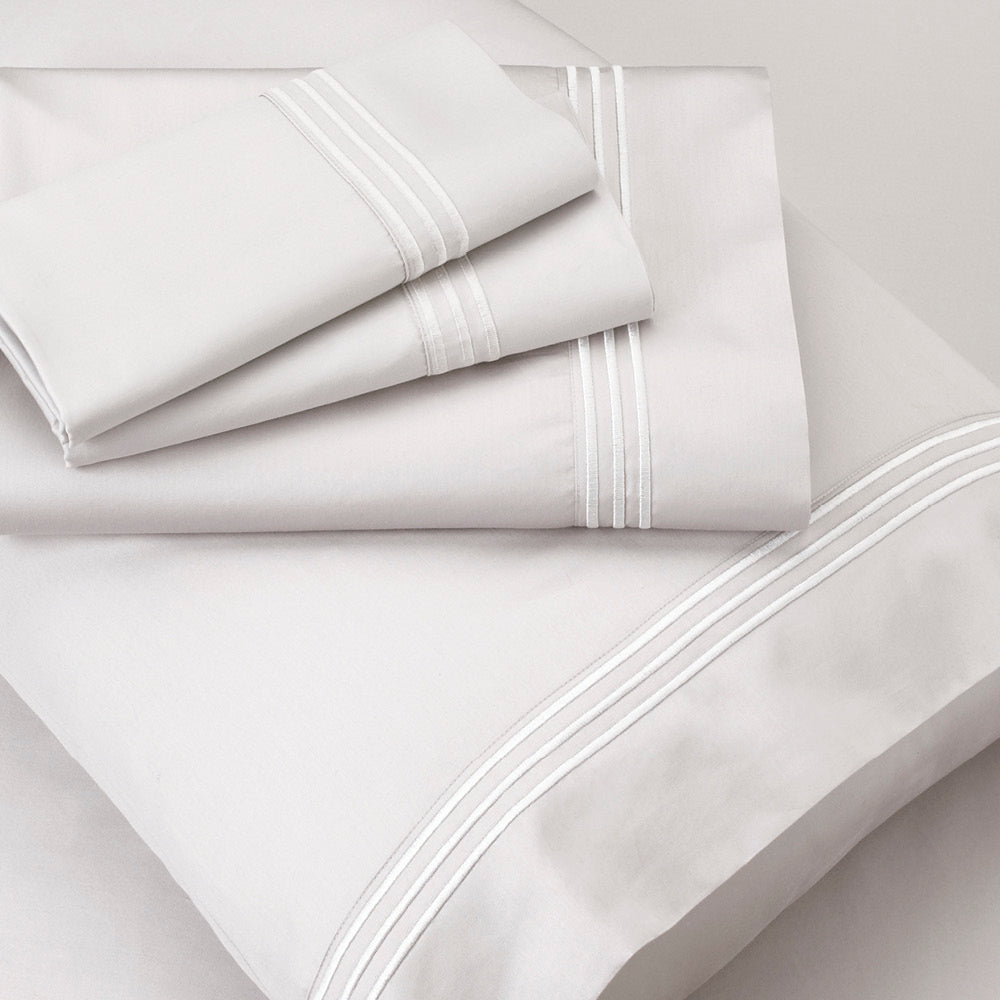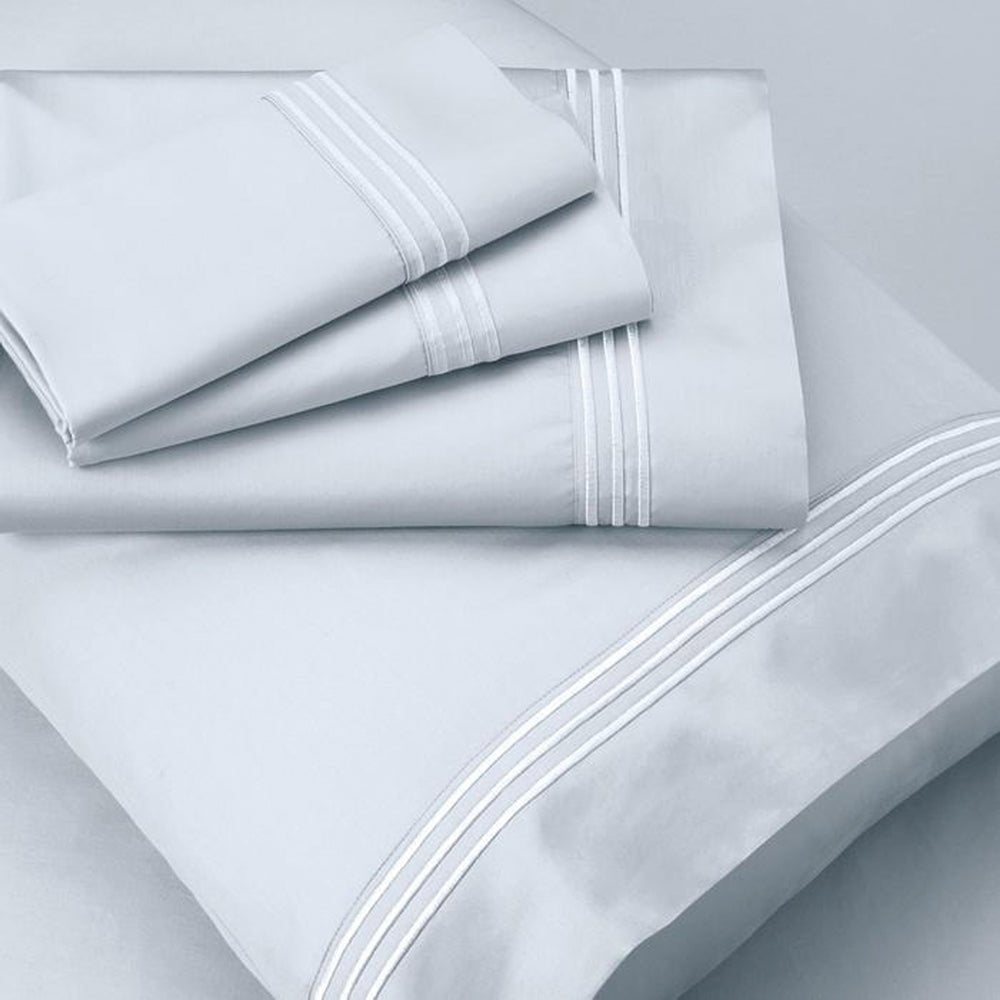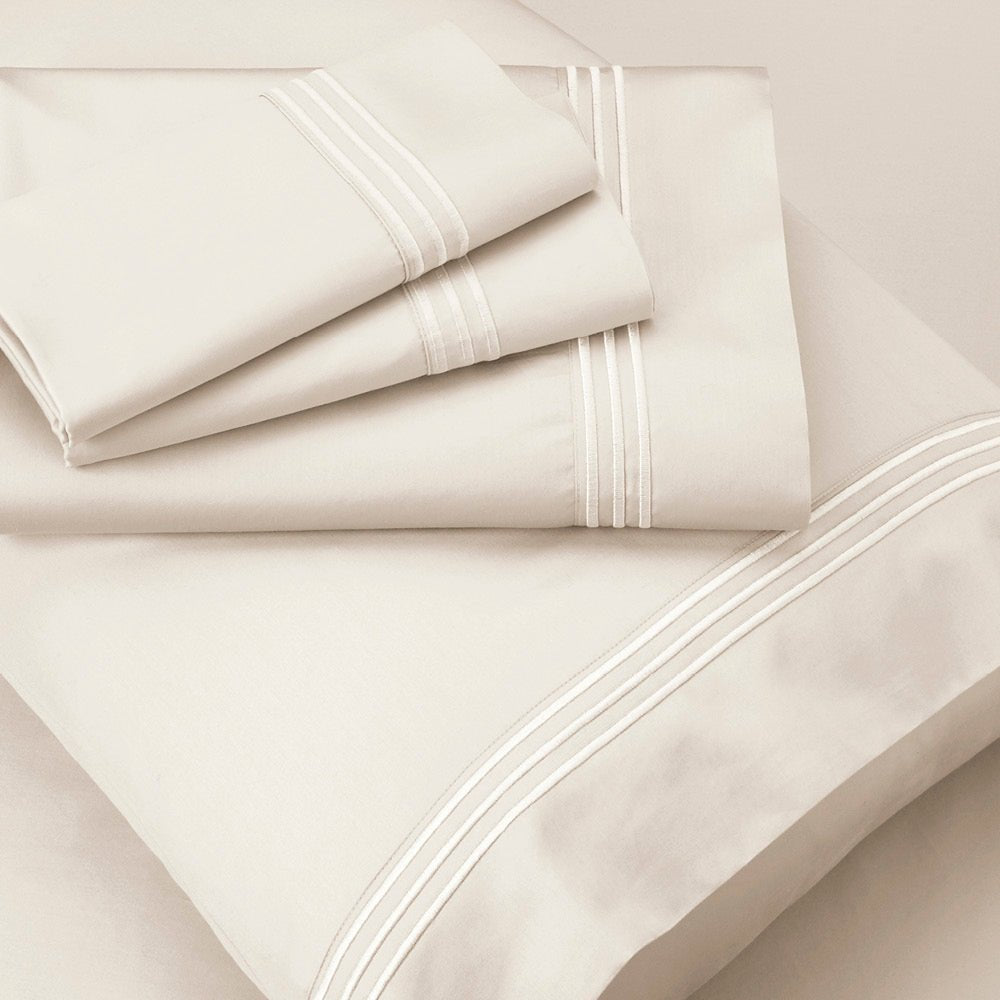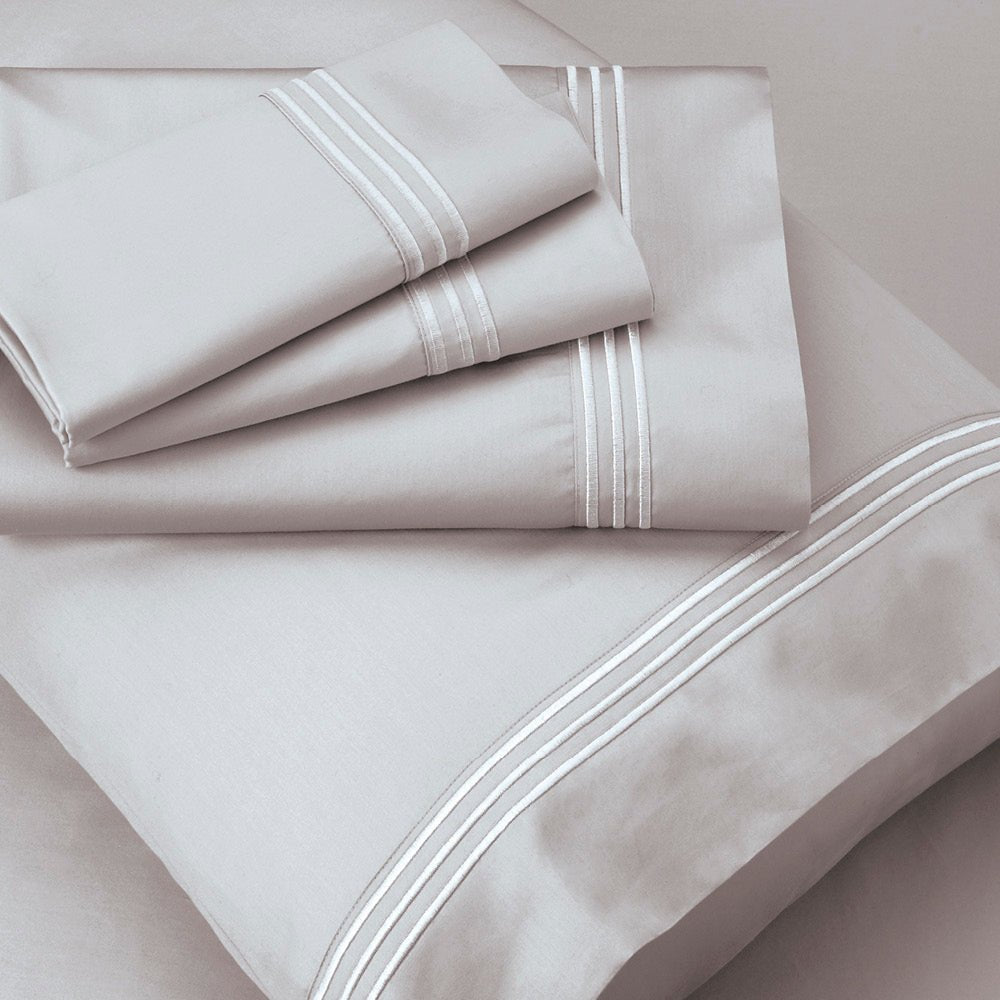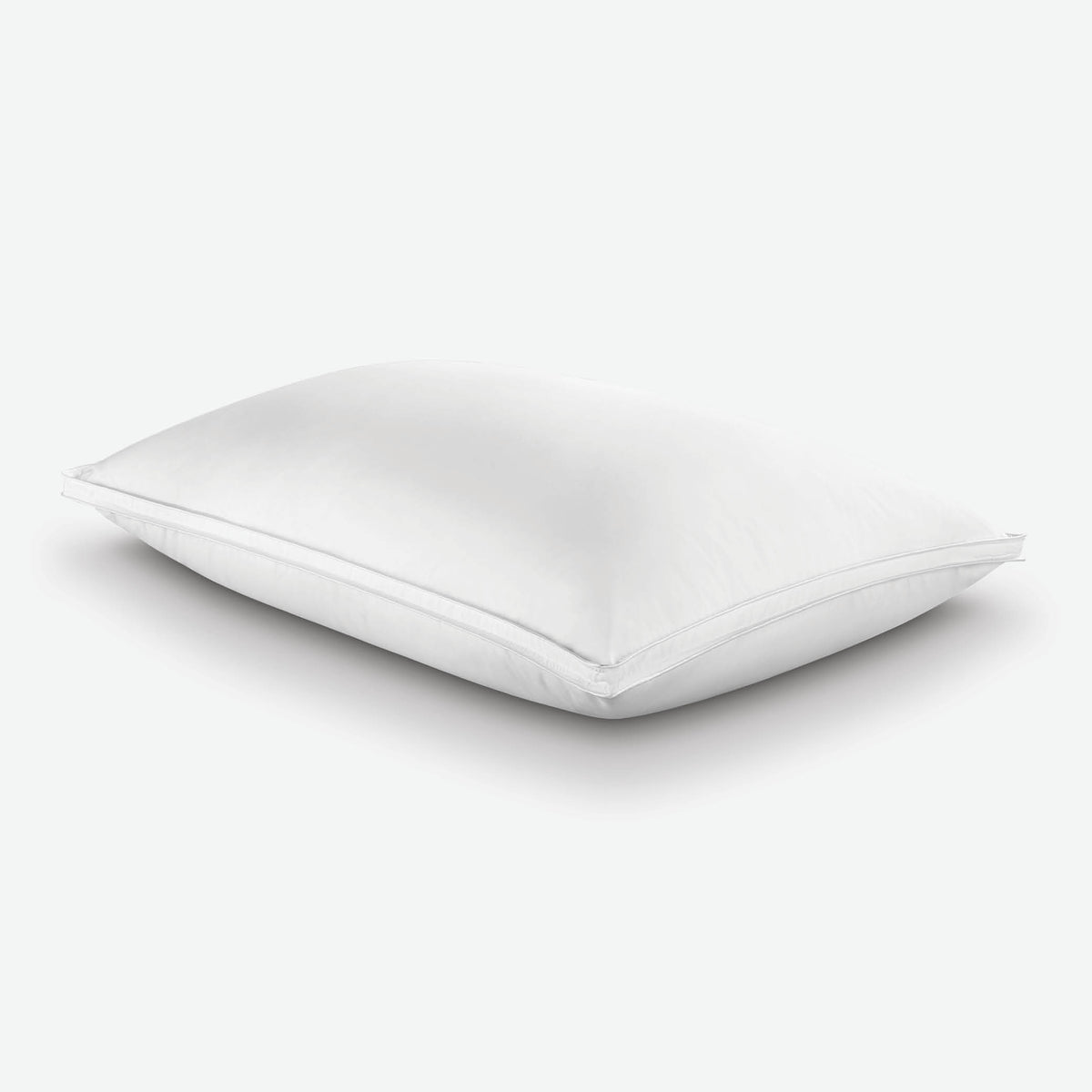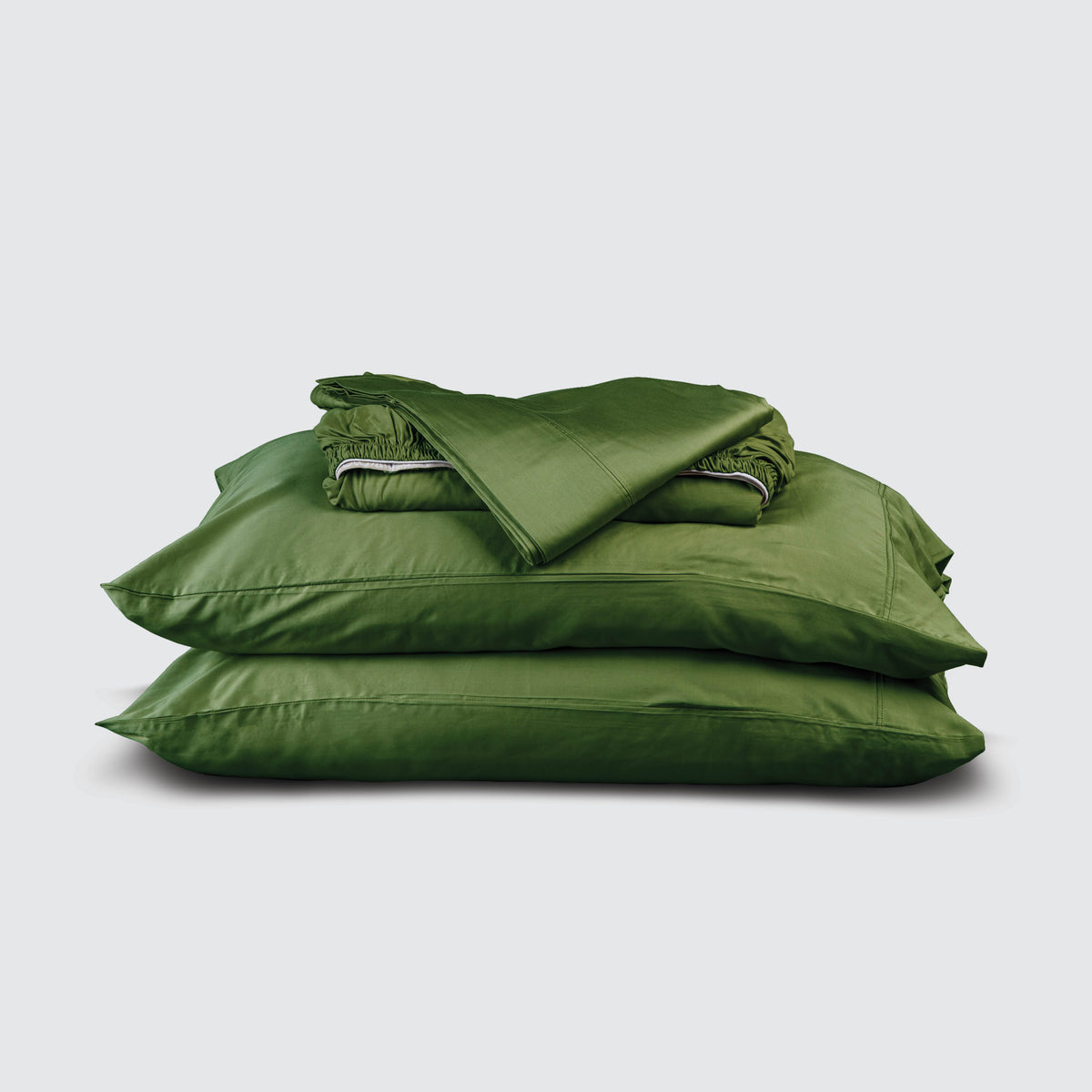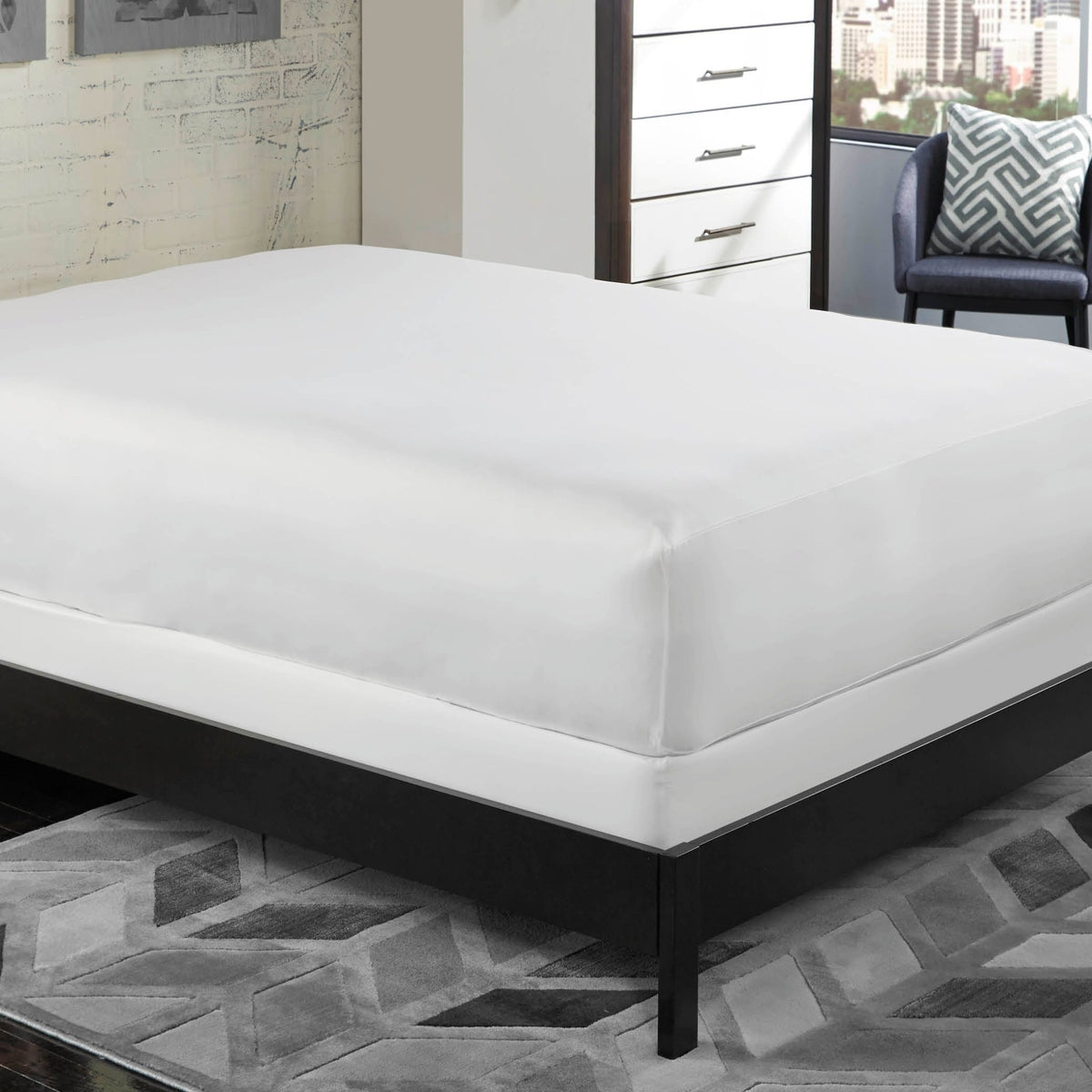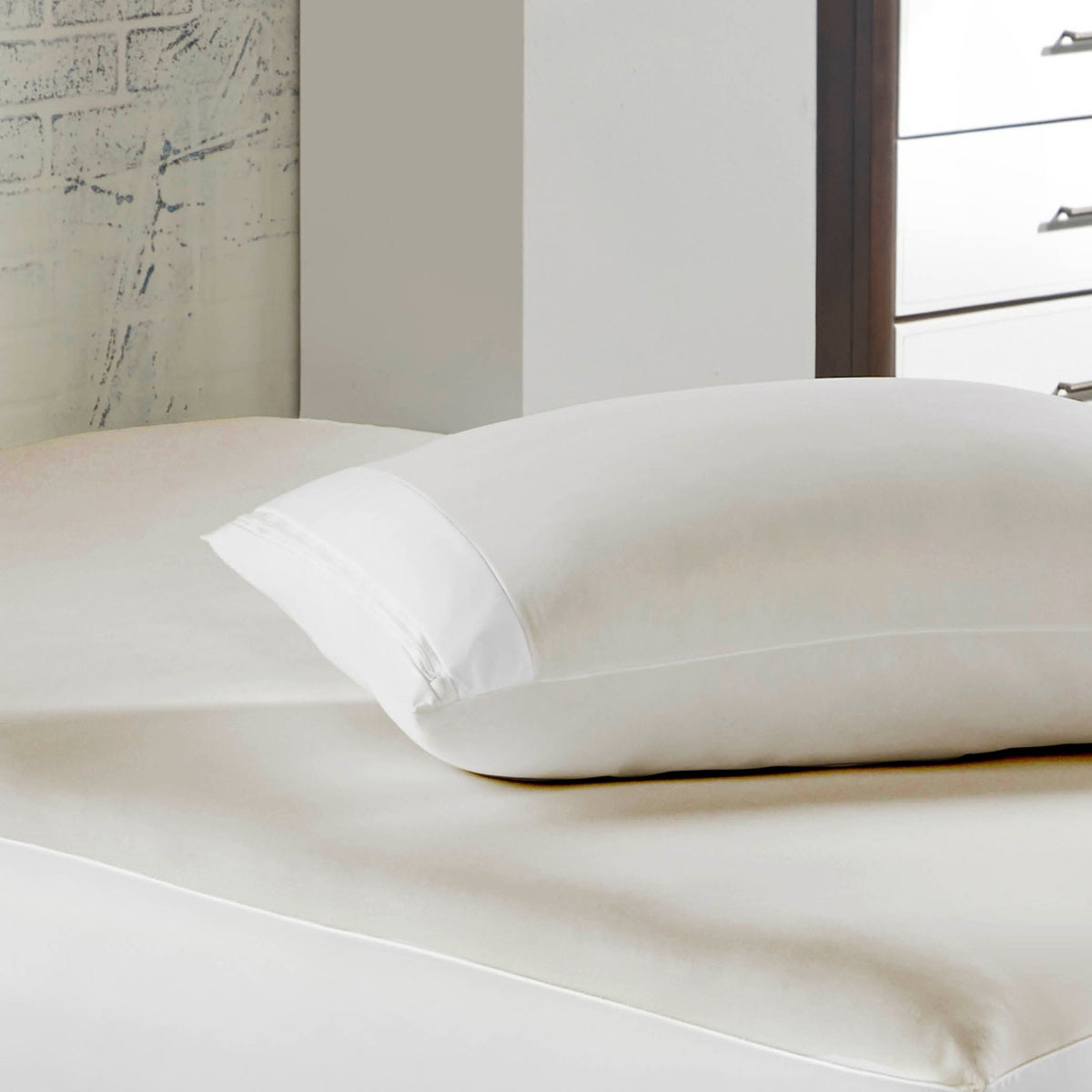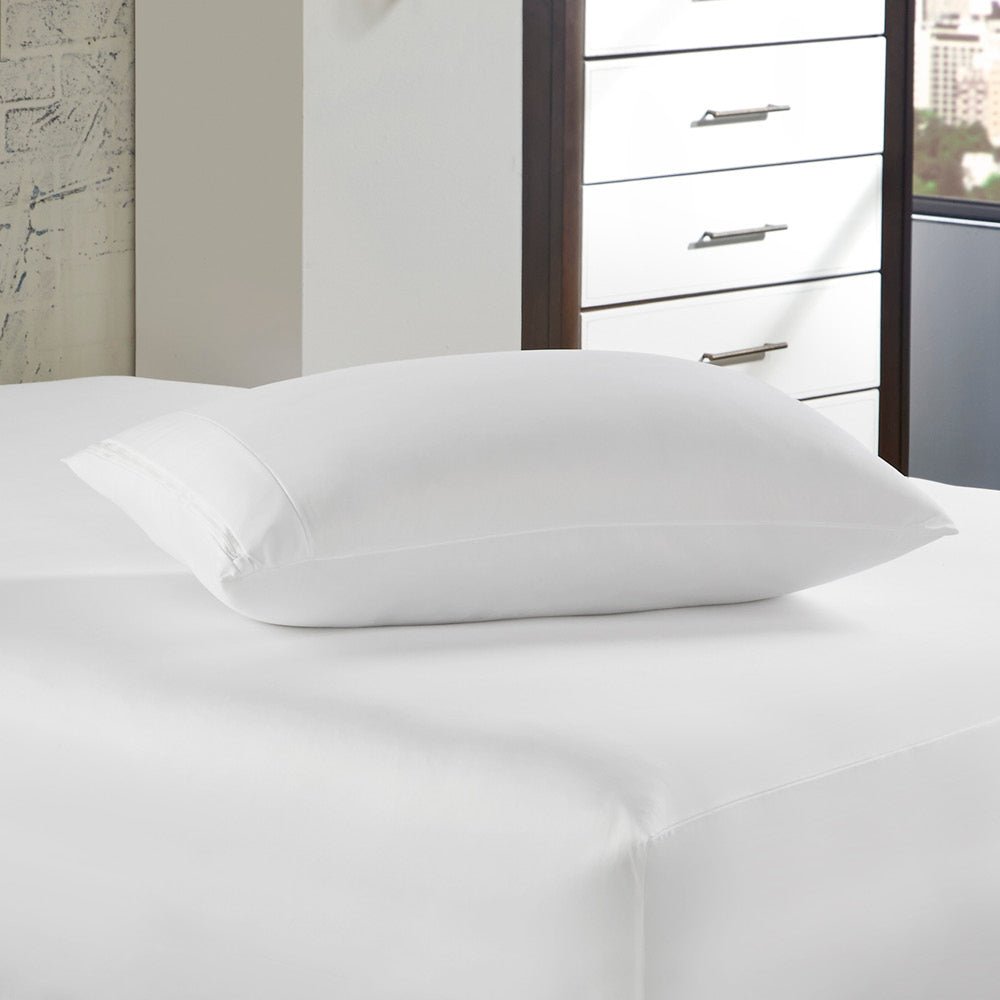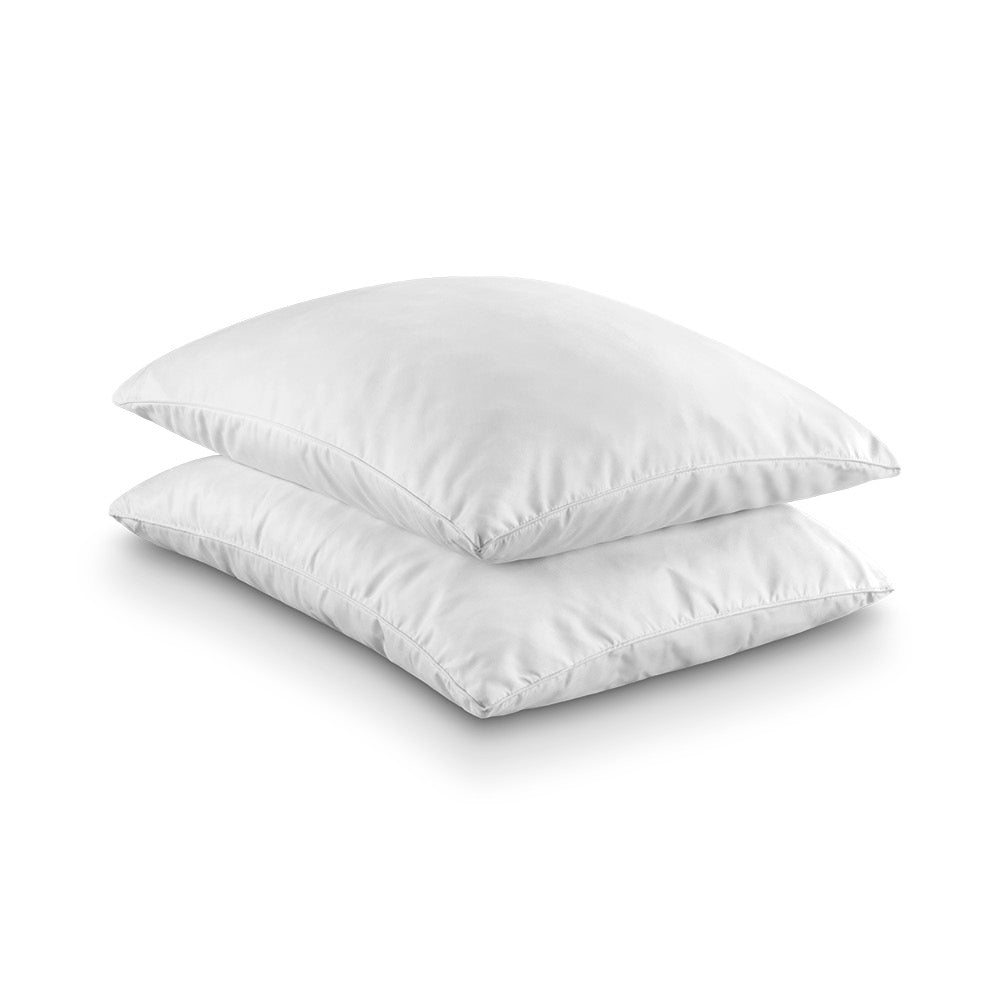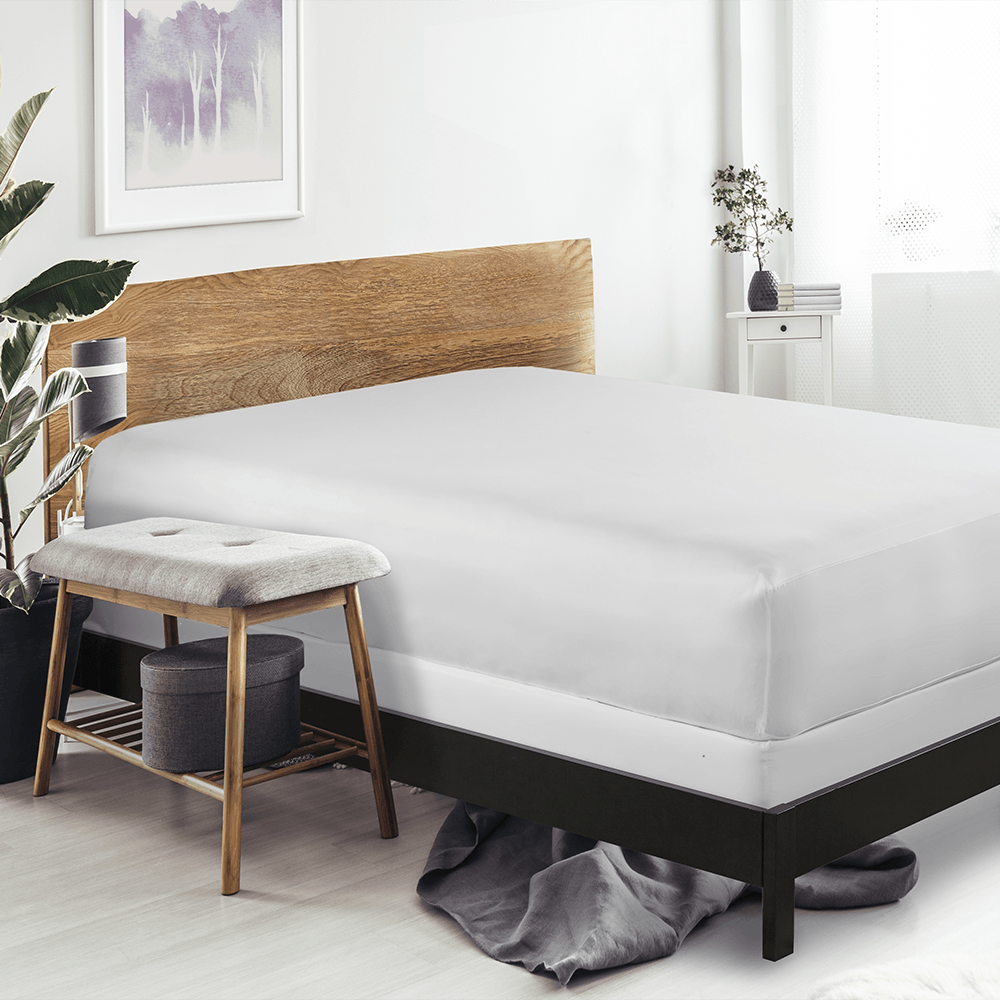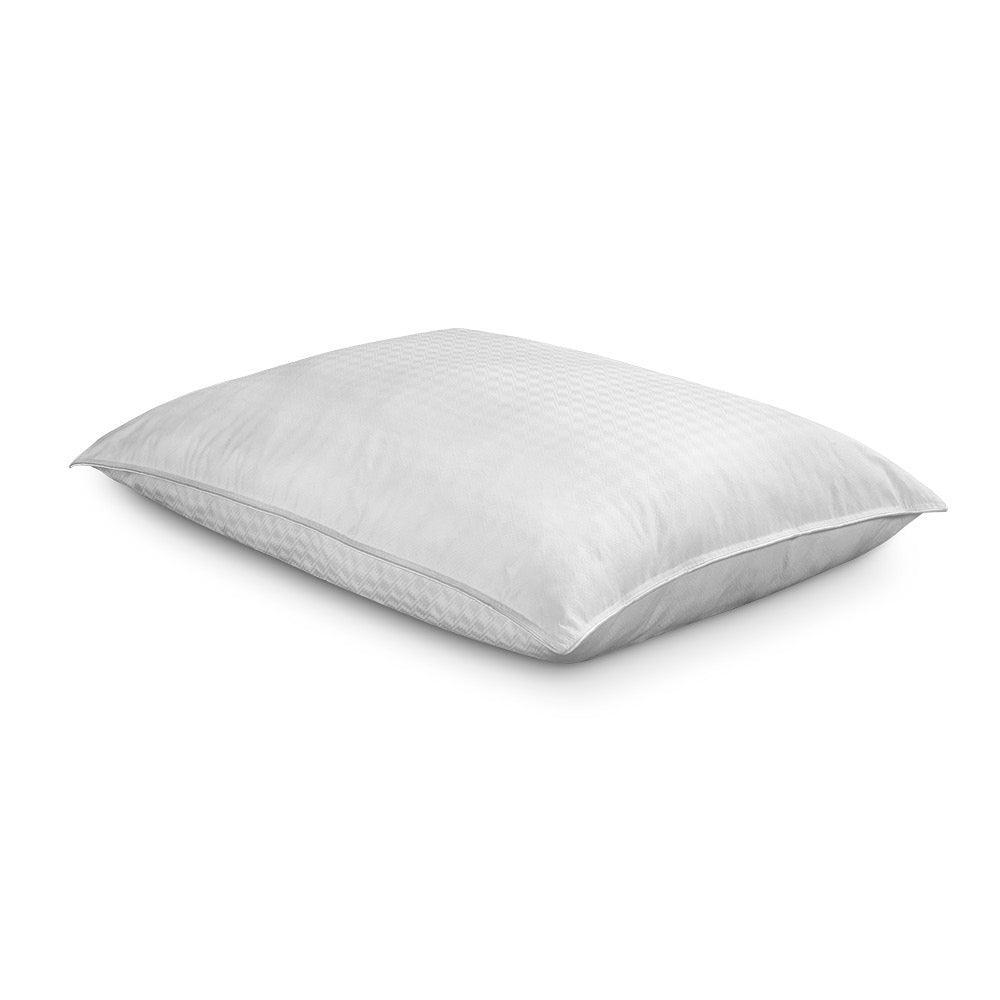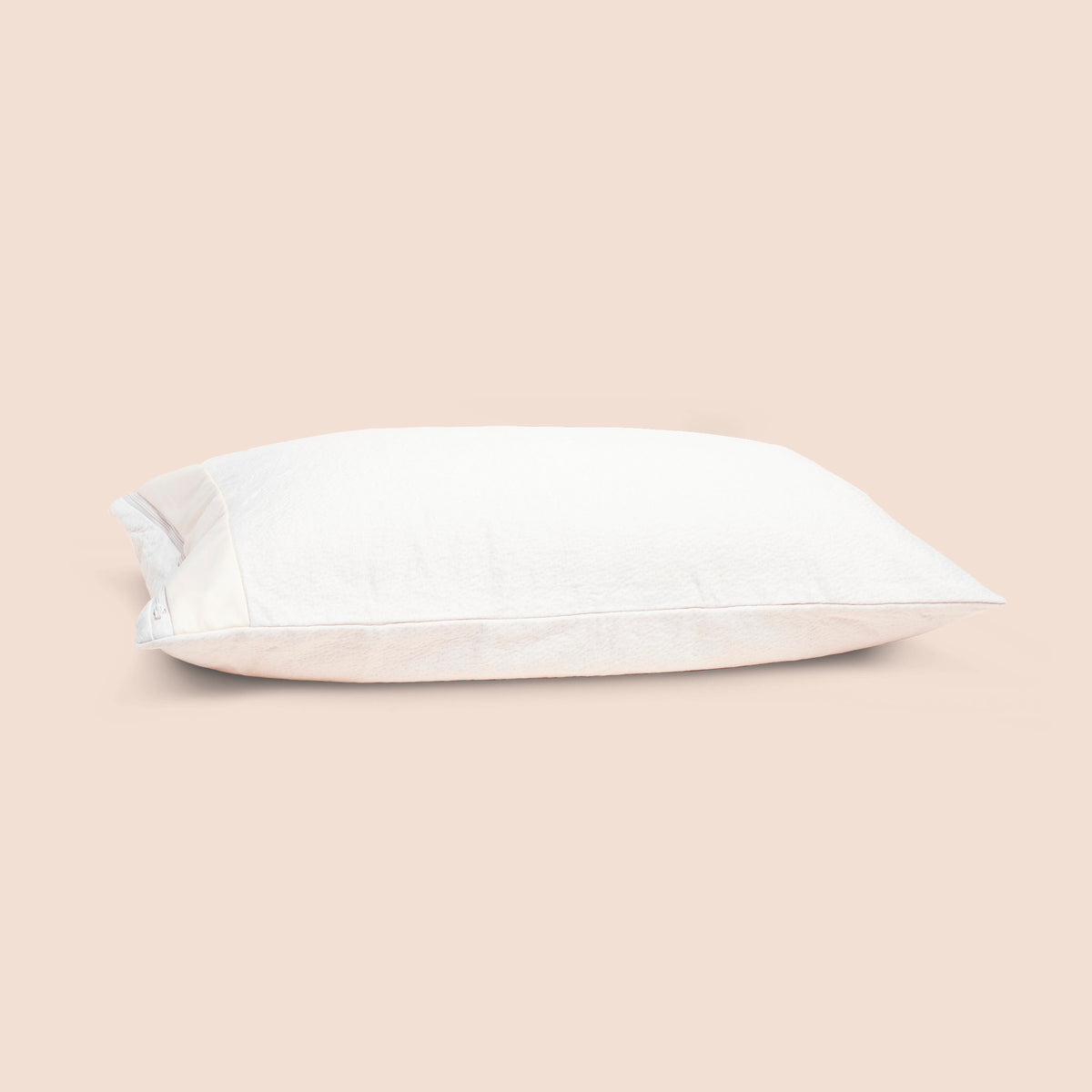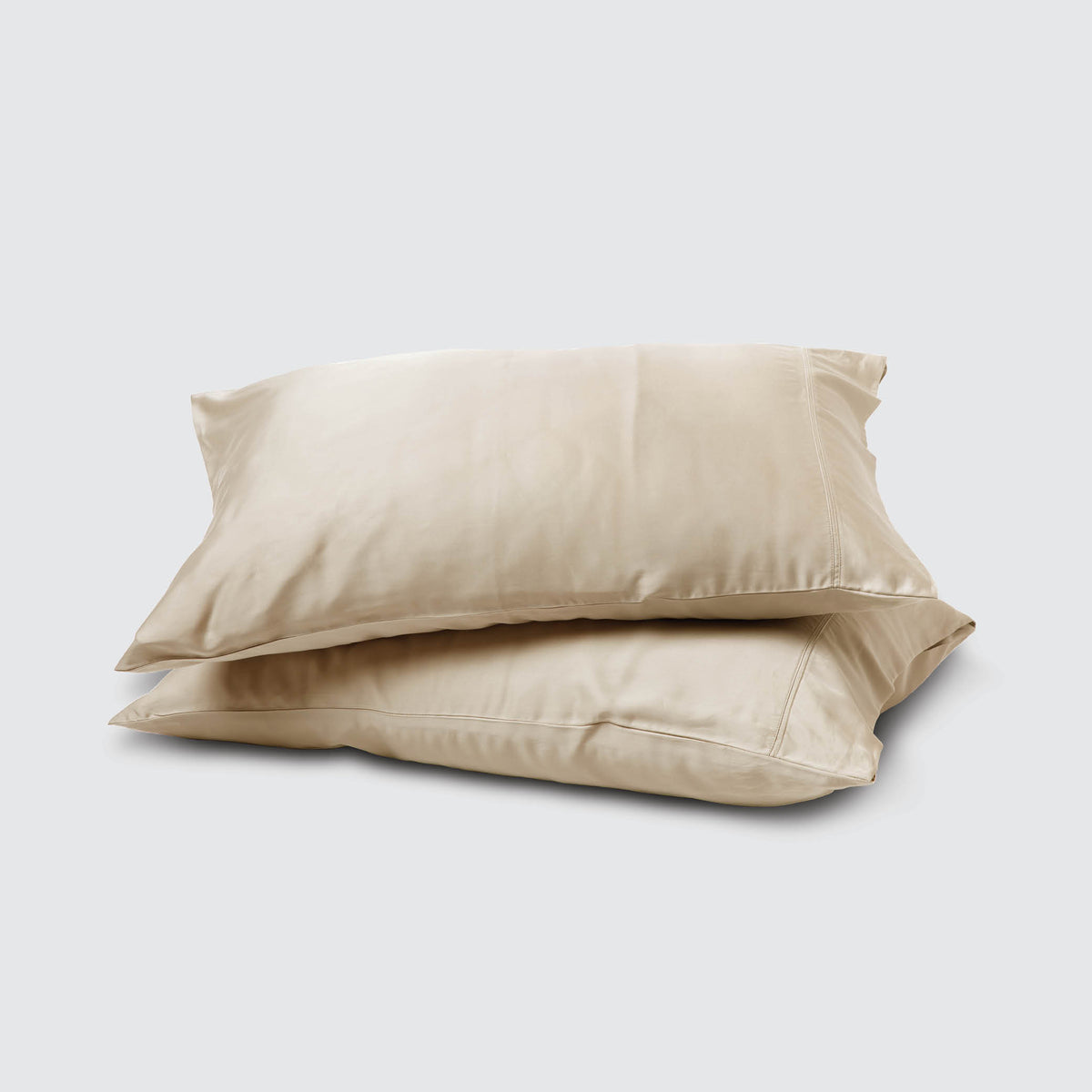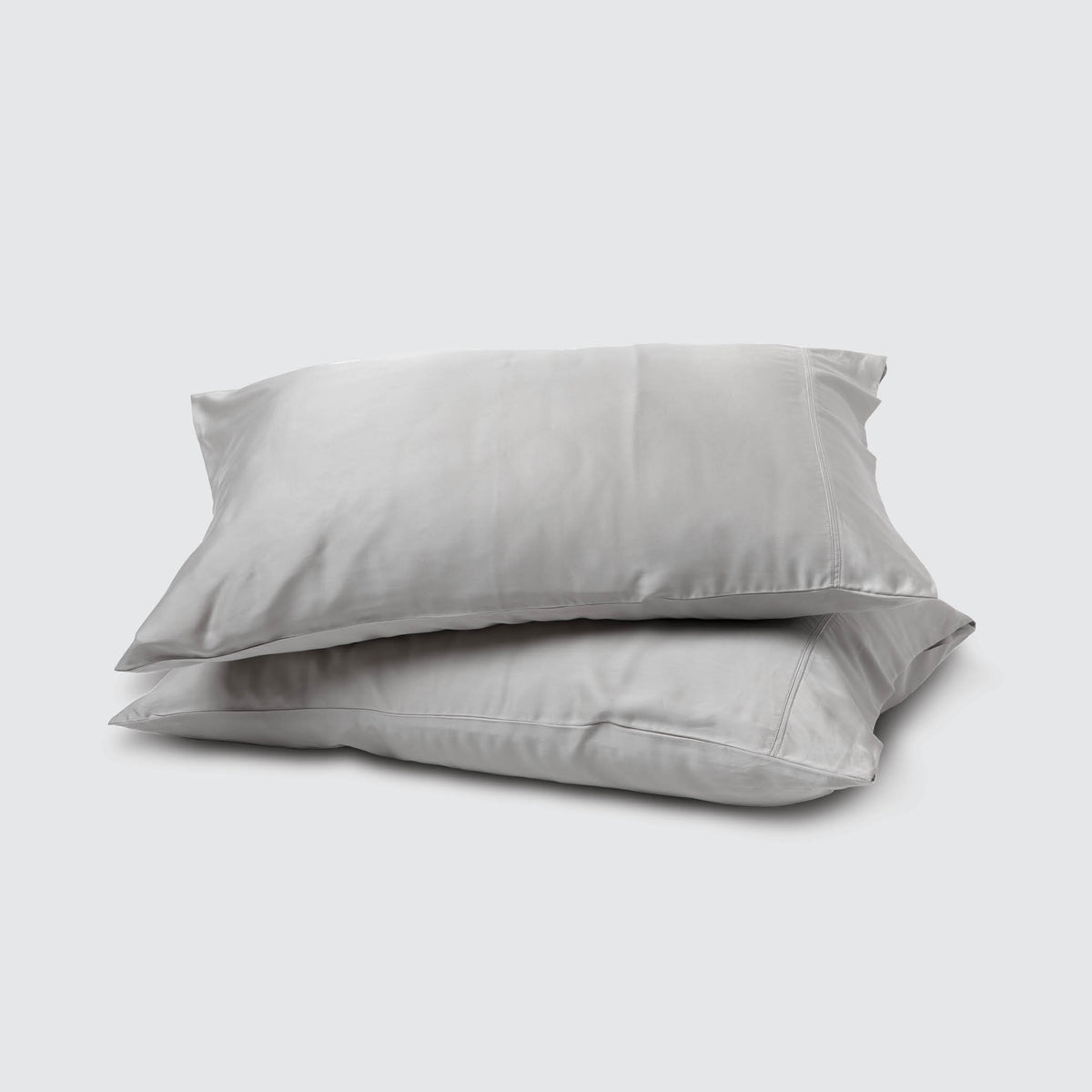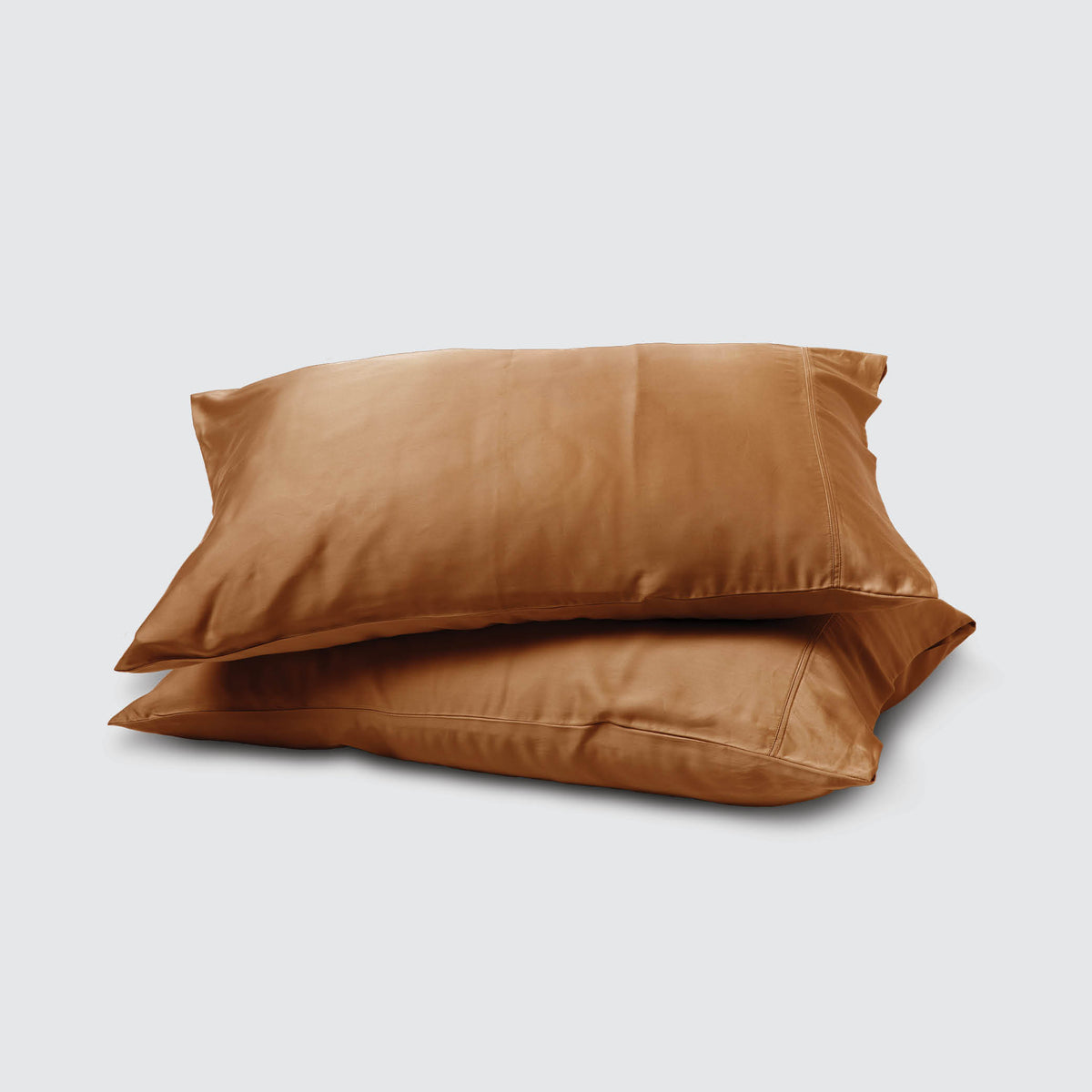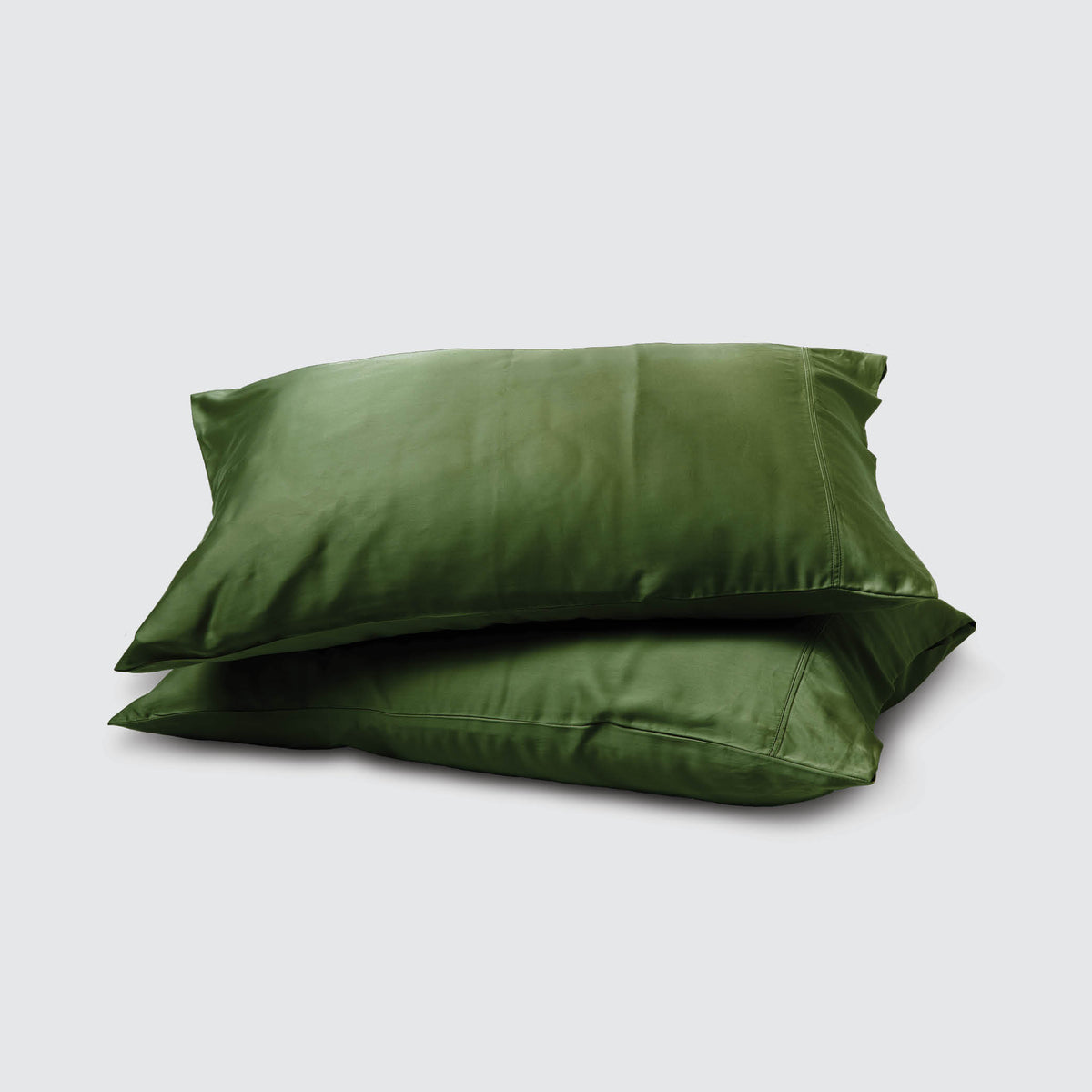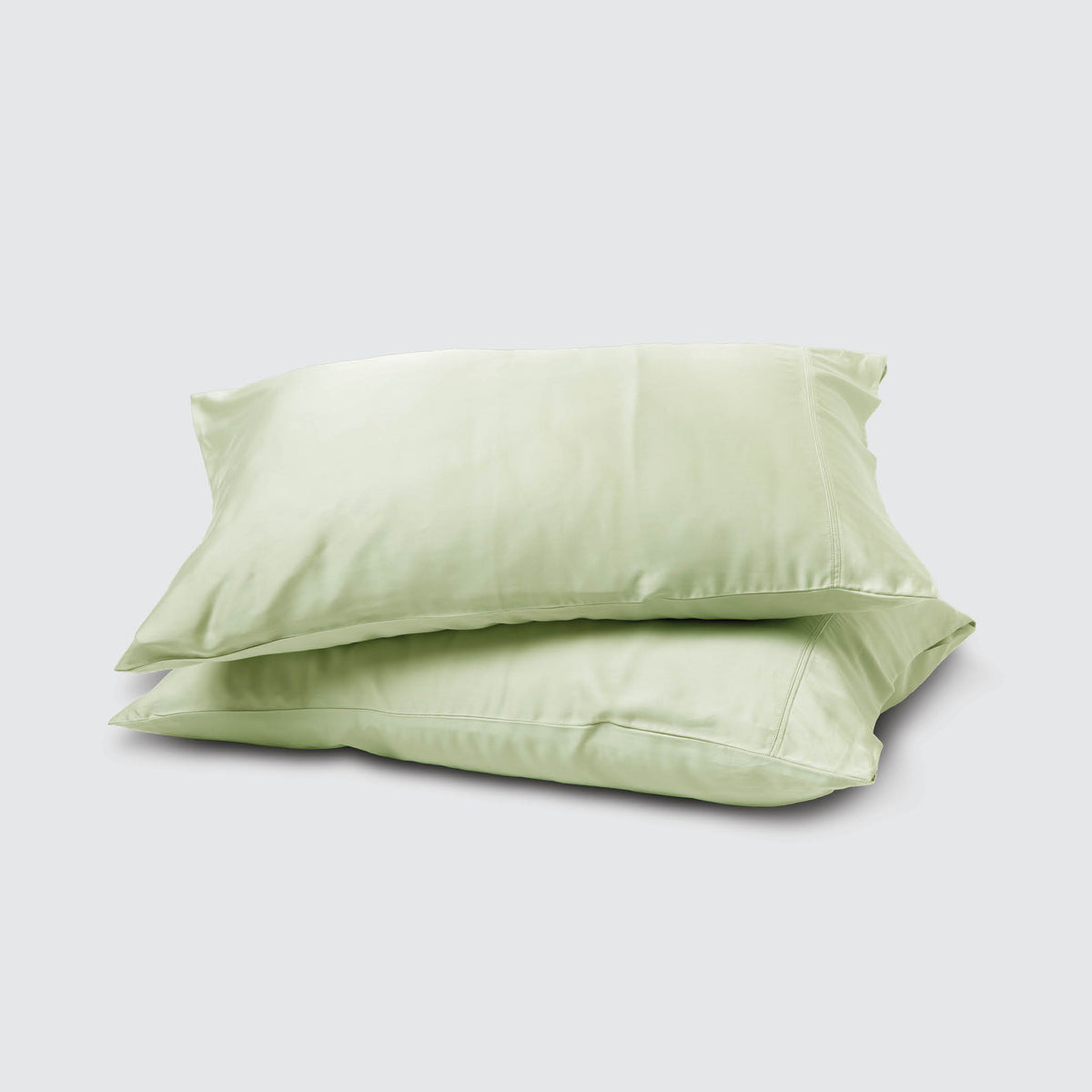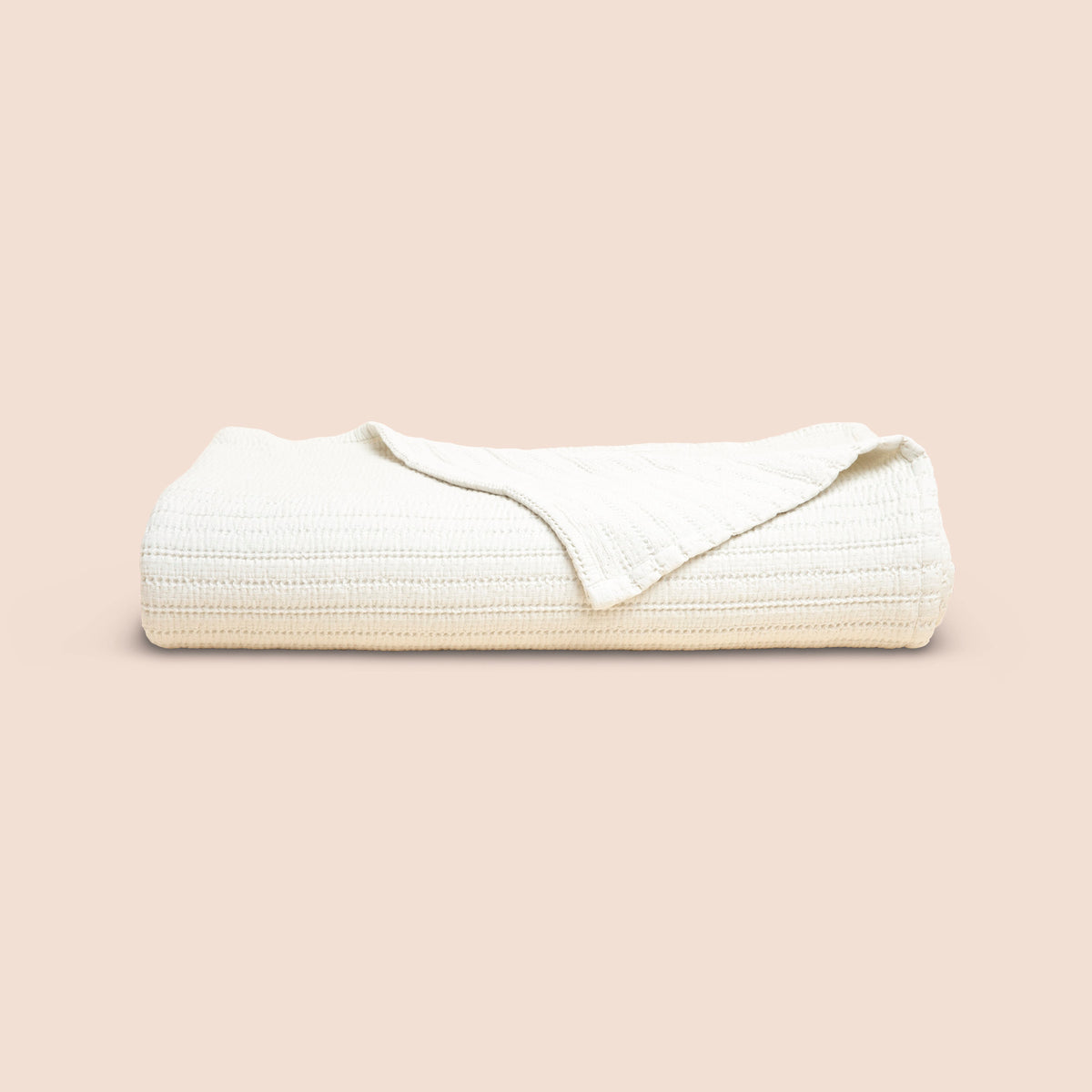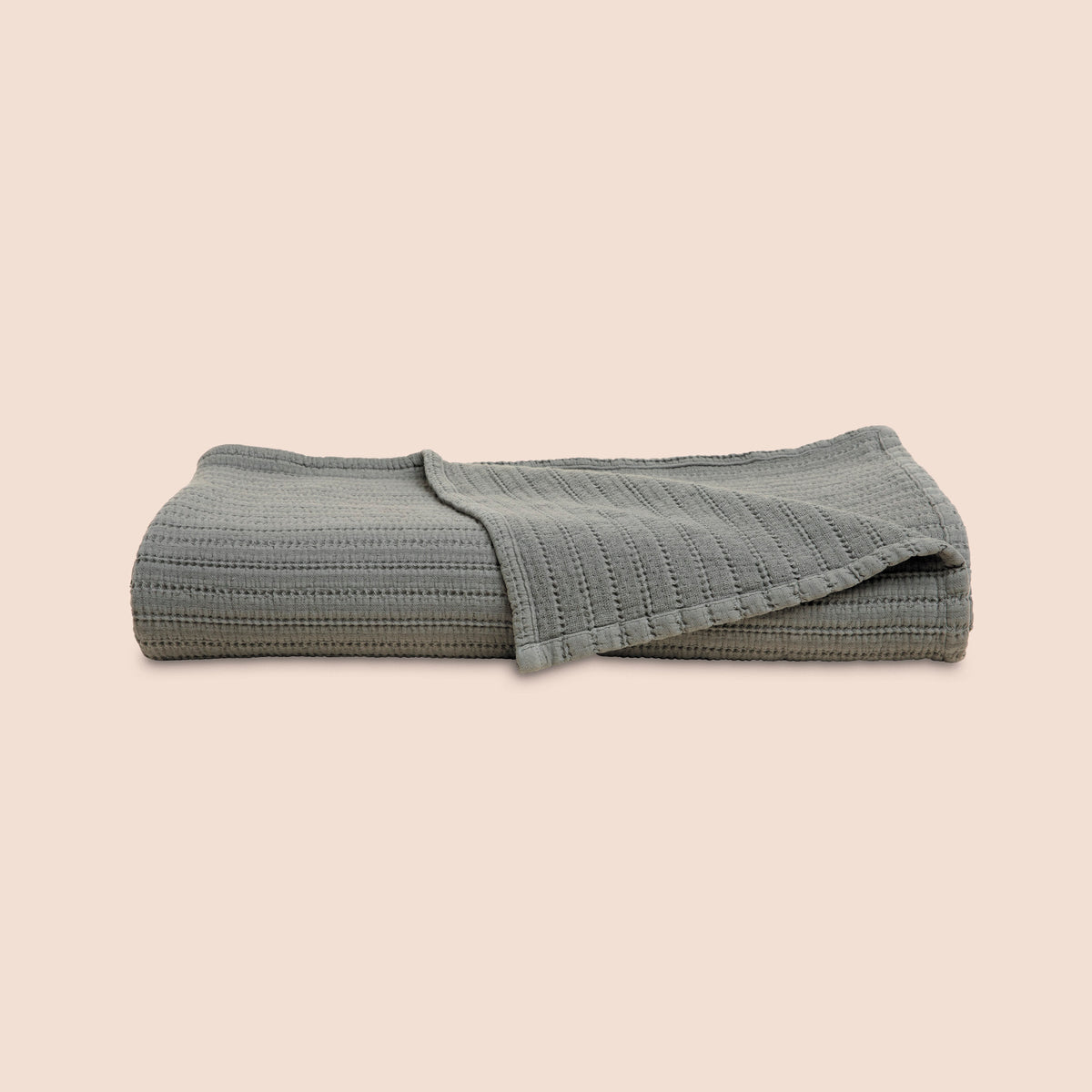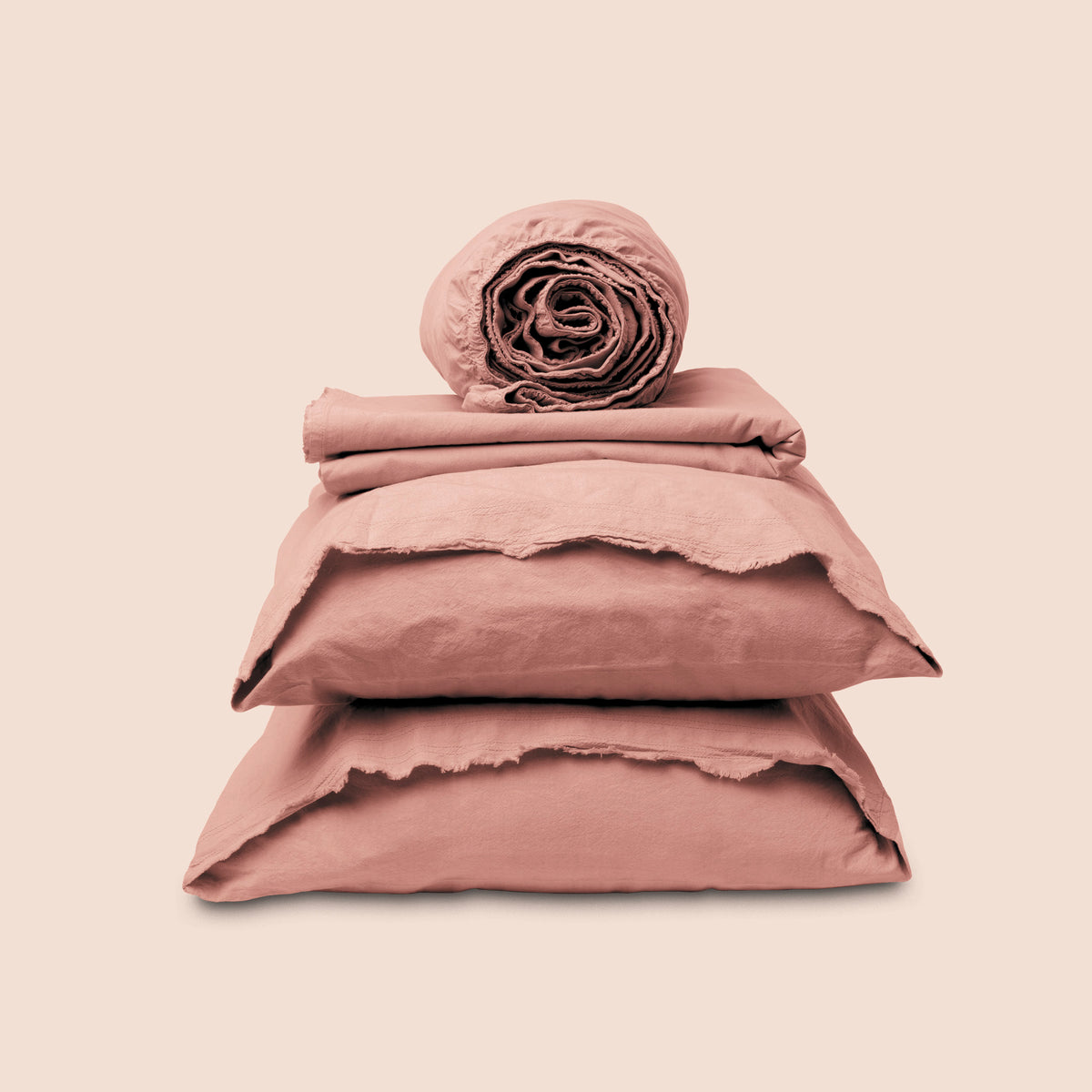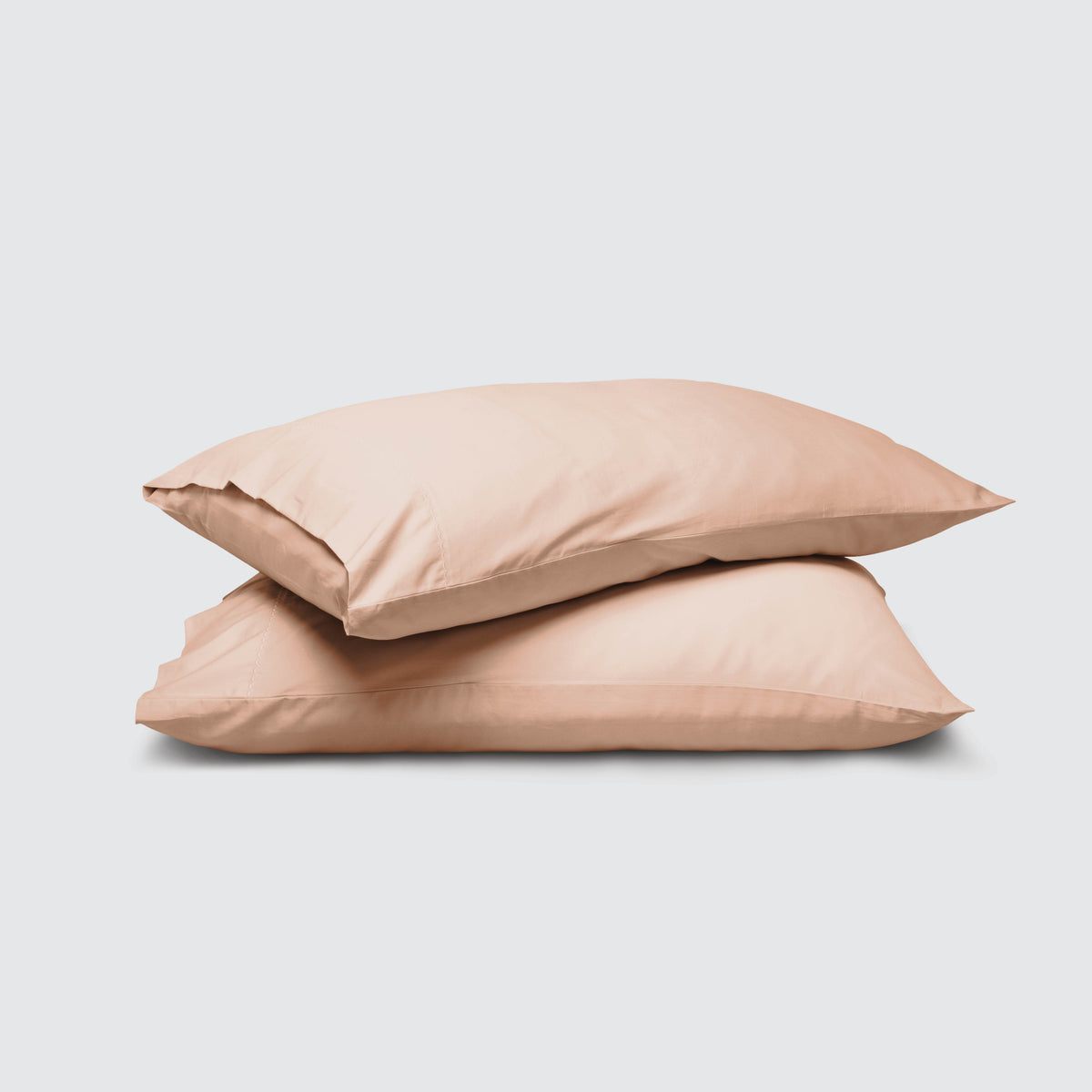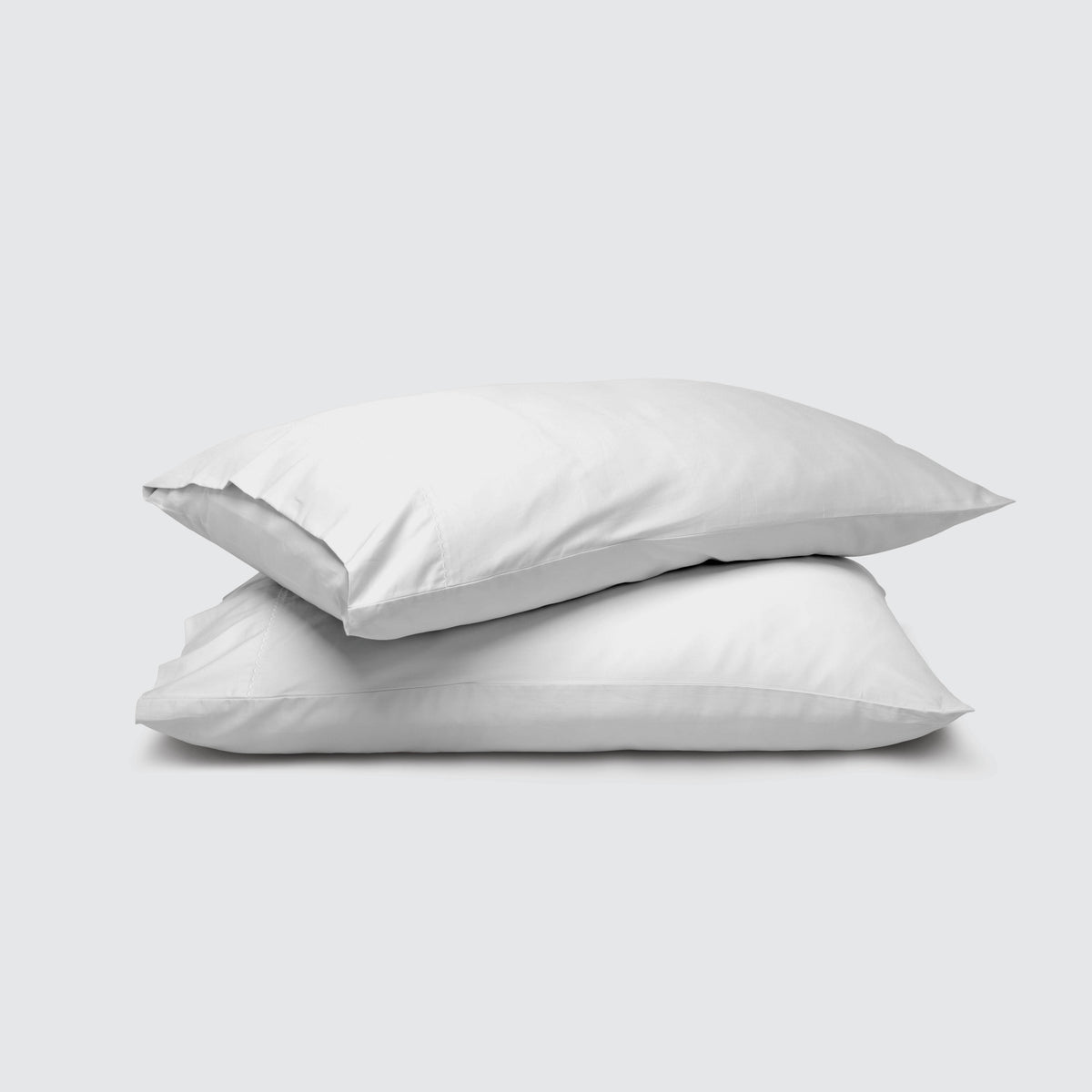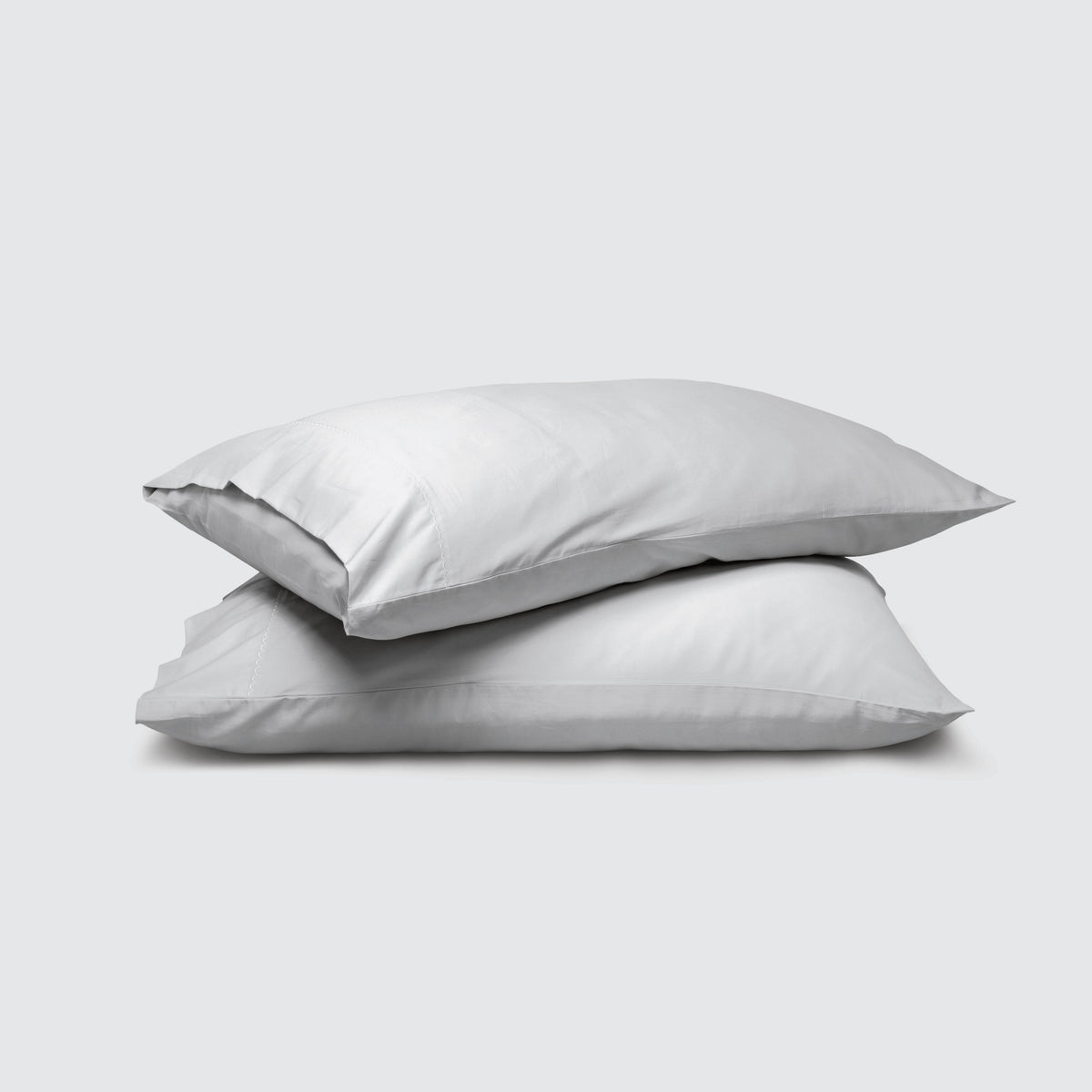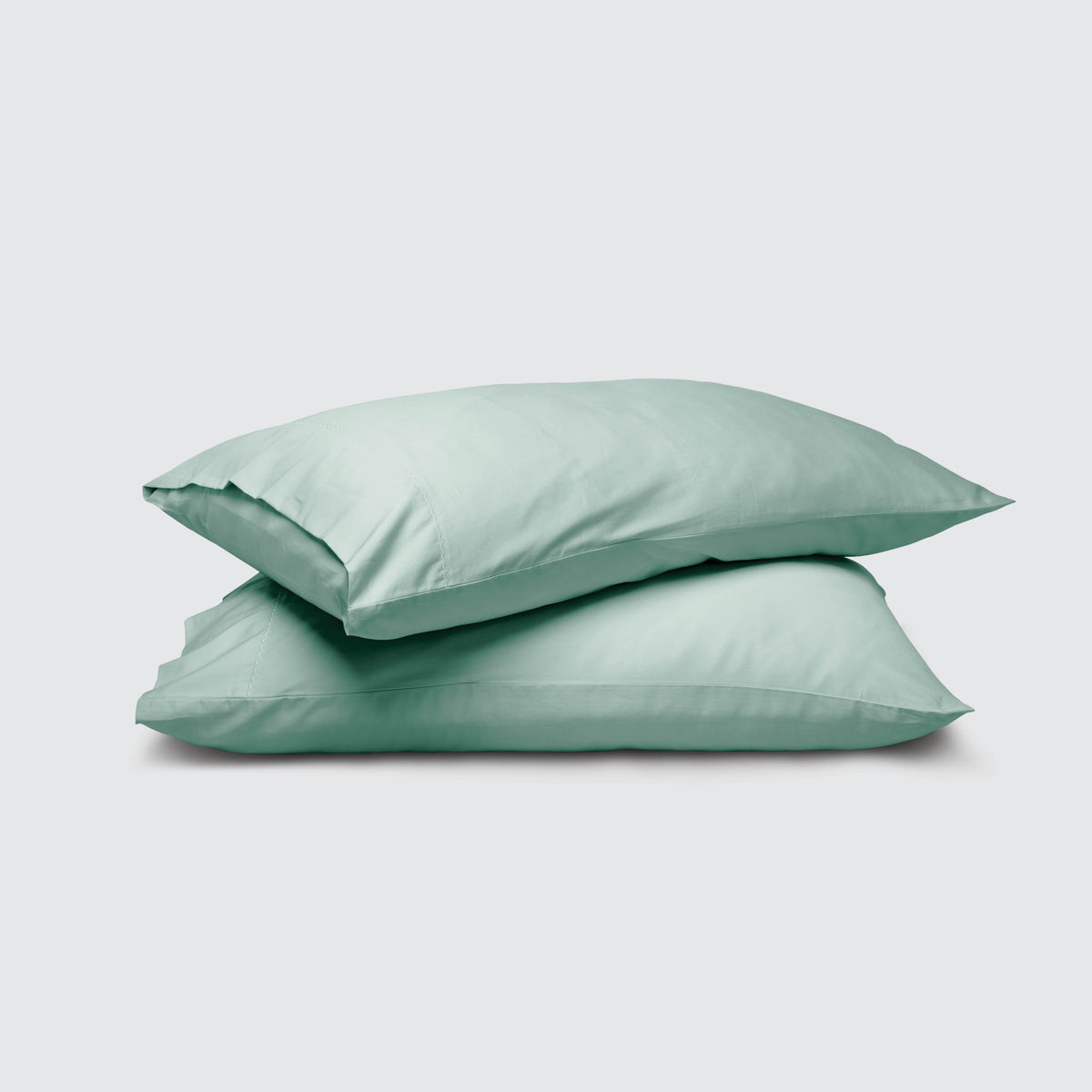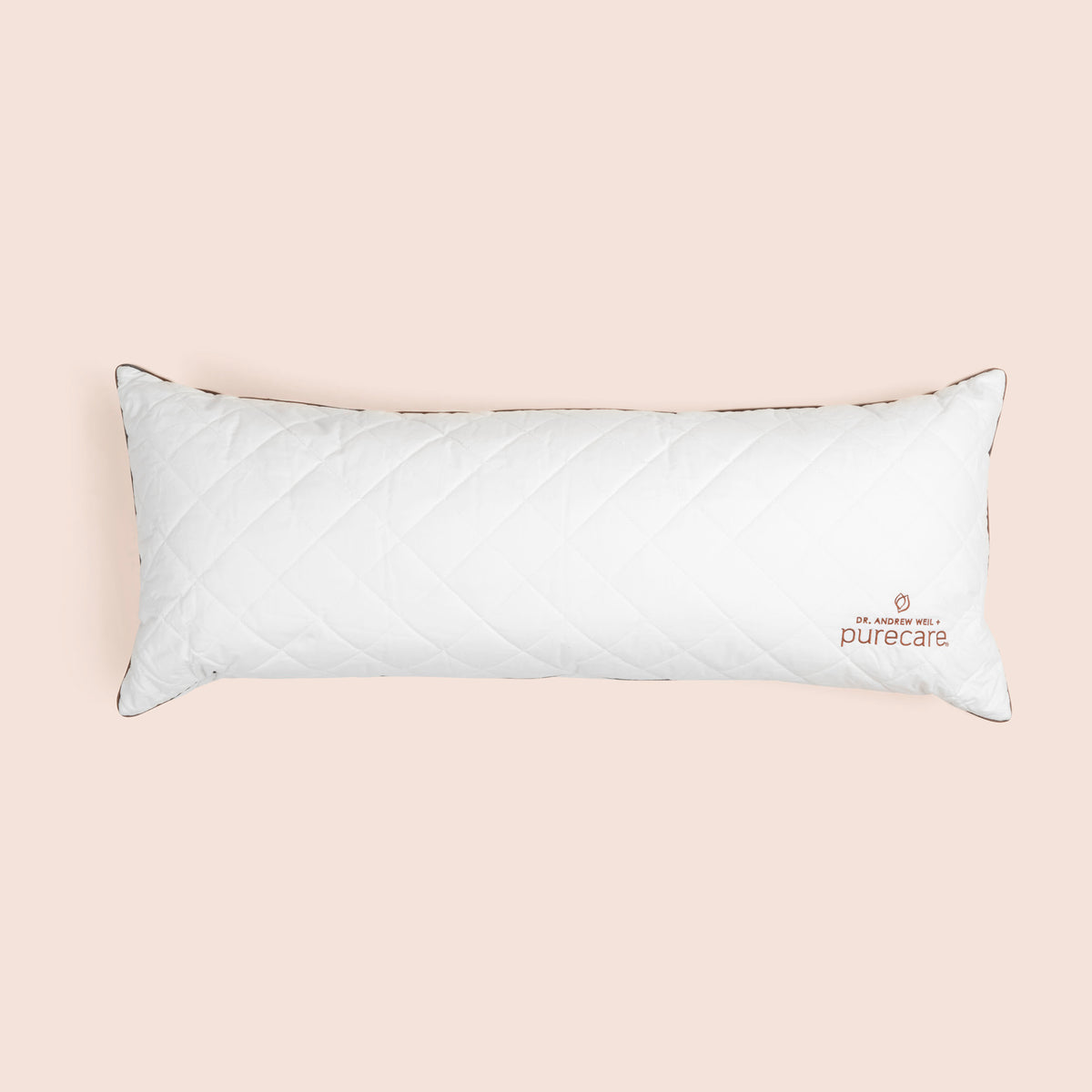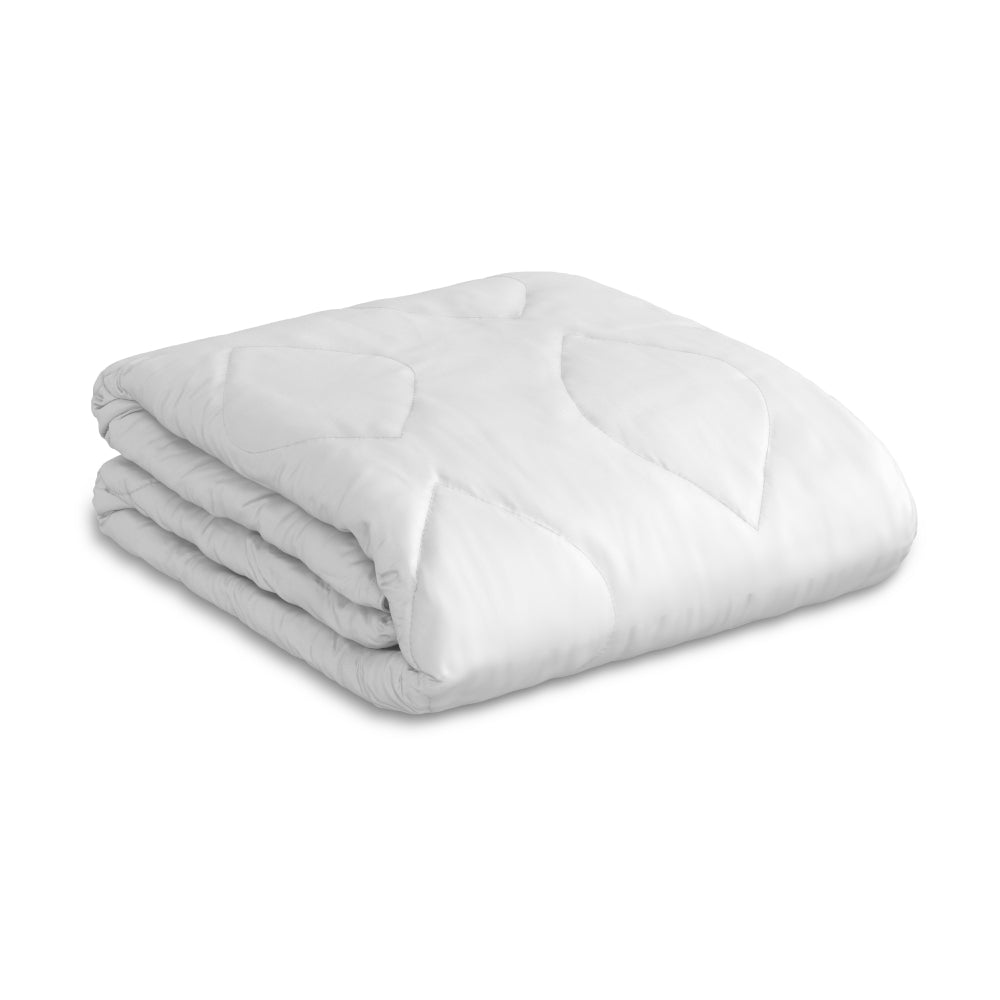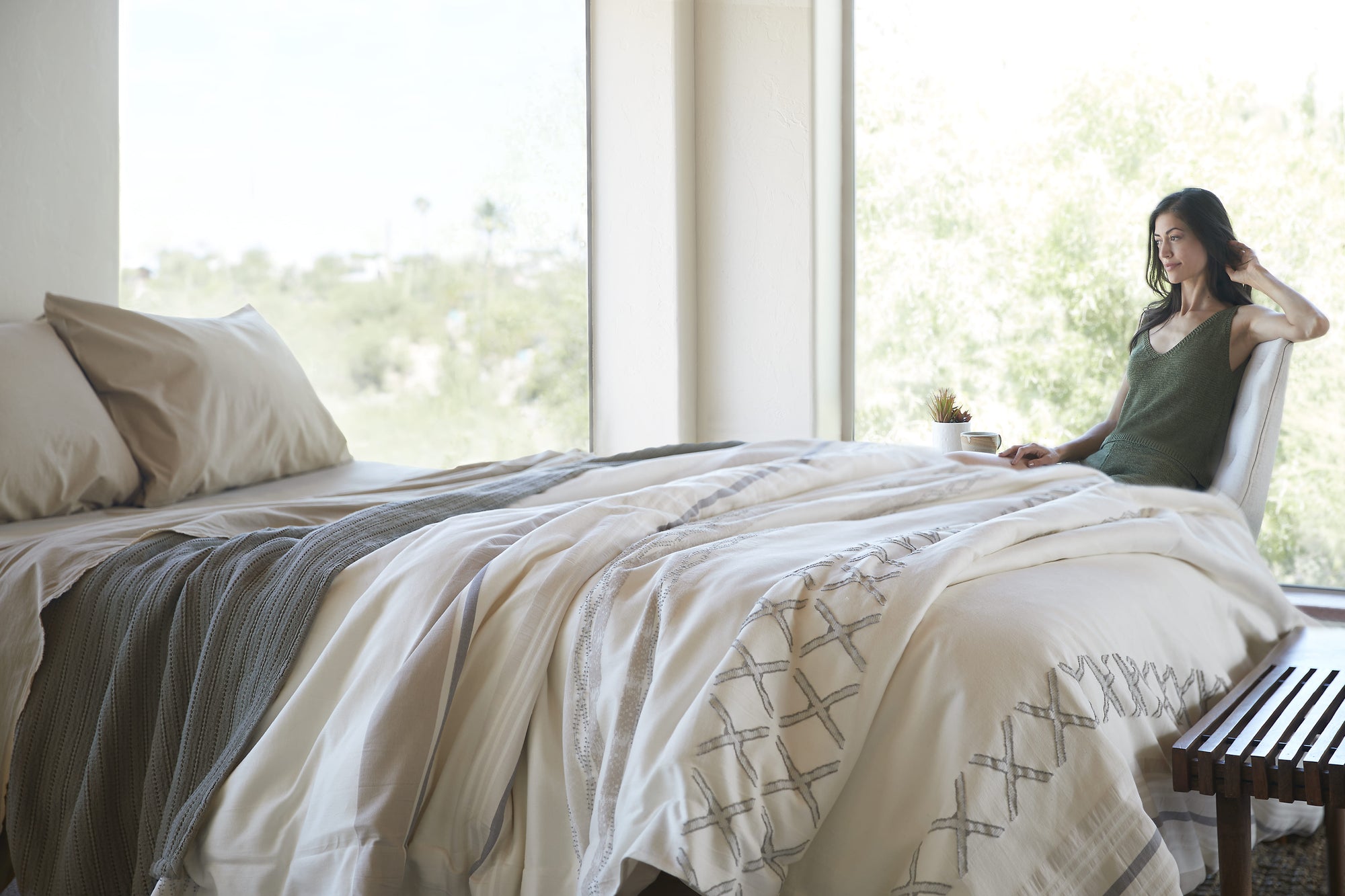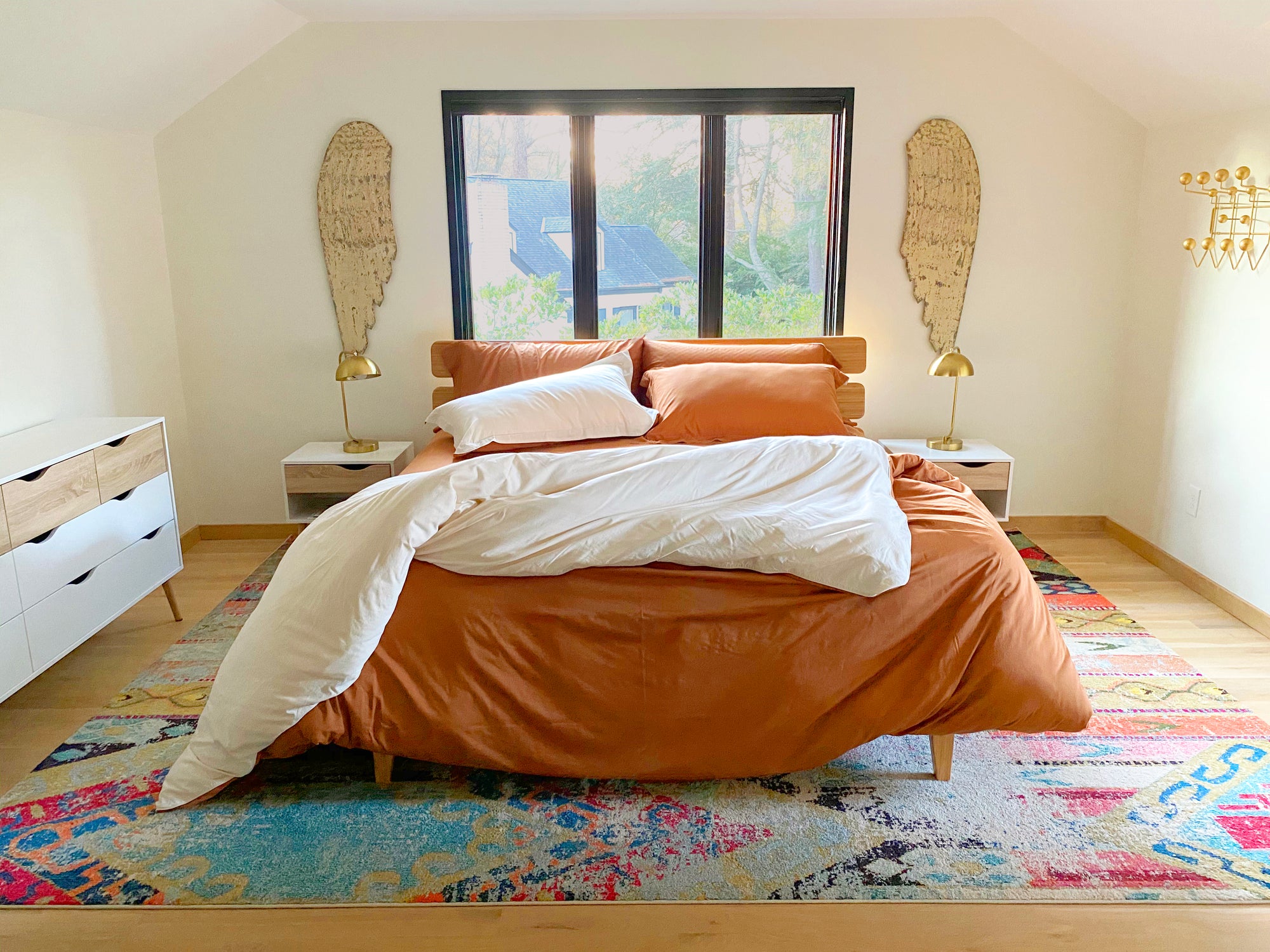We spend more time touching our bedding fabrics than other objects or materials. If we sleep 8 hours every night, we'll luxuriate against our bedding for more than 26 years of our lives—if we're lucky. Ideally, we'd spend all that time truly renewing our bodies and souls. Our bedding can help.
But which bedding is best?
We're breaking down what linen sheets are good for: sustainability, supreme durability, softness that grows over time, incomparable beauty, and superior cooling. At PureCare, our linen sheets are blended with cotton to harness the benefits of both fabrics. Here's what you need to know about these materials.
Linen Basics
Linen is a breezy, eco-friendly staple that hails from the humble flax plant, a botanical overachiever that's been moonlighting as a textile source long before it was used as luxury fabric by the Egyptian Pharaohs.
Linen's ancient pedigree goes back 30,000 years when hunter-gatherers spun and dyed linen, making baskets, cords, and clothing from the versatile flax that grew predictably even through climate fluctuations. Later, Egyptians associated this indispensable fabric with light and wealth, even using it as currency. So lofty was linen's reputation that the Bible notes that angels wear clothes woven from linen fibers.
This ancient fabric remains a standout in the bedding world today. It's strong yet becomes luxuriously soft, improving with age like a fine wine or a good friendship.
Linen's environmental resumé is similarly impressive. Naturally aligned with global organic standards, flax is grown with minimal water and little need for pesticides or fertilizers. It can often thrive on a diet of simple rainwater.
Because it's fast-growing, linen is also a highly renewable resource that farmers can produce without harming the environment. Linen's growing cycle takes just 100 days, and in that time, the flax requires just 20% of the water it will consume over the lifetime of the bedding. In other words, producing flax is some of the most eco-friendly fabric production today, and therefore one of the best fabrics to choose for sustainability.
Flax's low water consumption is so phenomenal that if all French people purchased a linen shirt instead of a cotton one, they'd conserve the equivalent of a year's worth of Paris' drinking water.
In short, linen is the poster child for sustainable chic.
The Difference Between Linen and Cotton Sheets

Purecare’s Supima cotton fabric sheets offer extra-long cotton fibers, sourced from the Southwest USA, for added strength.
Environmental Impact of Linen Vs. Cotton
Linen bed sheets use far less water in construction than their cotton counterparts.
Cotton is known for being thirsty. It takes about 10,000 liters (about 2,641 gallons) of water to produce just one kilogram (about 2.2 pounds) of cotton. Given that a standard cotton bedsheet weighs roughly half a kilogram, producing a single cotton bedsheet can consume approximately 5,000 liters (or around 1,320 gallons) of water.
Linen is much more water-efficient. On average, the water consumption for linen production is about a quarter to a third of that for cotton.
Taking Care of Linen vs. Cotton Sheets
Linen is known for its exceptional durability. With care, linen sheets are heirloom pieces that stand the test of time. Linen is stronger than cotton, and those who choose linen sheets may find that with the same number of washings, linen sheets can last three times as long. Cotton sheets, on the other hand, lose their sheen, and fibers begin to break down after 2 to 3 years.
Take note: you can machine wash both linen and cotton fabrics, albeit with different heat settings based on the weave you choose.
Egyptian and Pima cotton, which are particularly soft, can have an even shorter lifespan. In general, cotton fibers are shorter than those of linen, which makes them less durable and prone to breakage during use or washing. While plenty of consumers love super soft Egyptian cotton sheets, linen sheets are durable because their softness emerges over time.
Cotton fibers are also more elastic than those of linen. That gives cotton more stretch, but it also means fibers experience more stress over time as they repeatedly bend and shift out of position on the molecular level, leading to faster deterioration.
Overall, linen lasts longer than cotton bedding because its fibers are longer, stronger, and more rigid.
Let's Talk Percale and Sateen
Percale and sateen are different weaves, not distinct fabrics. They're typically associated with cotton, but can be constructed of various fabrics, blends, and thread counts. Both were created to solve some of the common challenges of other weaves, creating slight differences in look and feel.
For example, Egyptian cotton can be woven into percale, making a lightweight sheet fabric that feels luxuriously soft and retains less heat. A Percale is a tight weave with greater durability, offering a strong matte finish that feels crisp.
Sateen uses a satin weave, offering a smoother finish to cotton sheets. The looser weave makes sateen less durable than percale, and their softer, warmer feel makes them a better choice in cool climates or during the winter season.
Linen Vs. Other Fabrics: Why Choose Linen for Better Sleep?

Consumers prize linen for its natural color gradations and weave.
Benefits of Linen Sheets
Linen sheets offer many benefits that can make them better than cotton for many sleepers. Here are a few of the benefits of linen fabric:
- Breathability: Ancient Egyptians understood that sultry desert nights couldn't compare to the moisture-wicking powers of linen. Consider linen if you're a hot sleeper. Linen is more breathable than cotton, making it less likely you'll wake up sweaty or stick to your sheets.
- Natural comfort: While linen starts its life stiffer than cotton, it softens over time. The natural process makes linen more comfortable over time without degrading or thinning with wear.
- Hypoallergenic: Linen is naturally hypoallergenic, so it's a good choice for people with allergies or sensitive skin. Its ability to wick moisture away from skin also reduces the likelihood of bacteria or dust mites, two common allergens that can thrive on bedding, especially in humid environments.
- Durability: Linen is one of the strongest natural fibers so linen sheets can last years or even decades with proper care. The fabric maintains its quality over time, too, which results in consistent sleep comfort throughout its life.
- Sustainability: Not only does linen use less water and fewer pesticides in its construction, it's biodegradable and recyclable, too.
- Year-round use: Versatile linen is a champ in thermal regulation. It's insulating in the winter and cooling (as well as moisture-wicking) in warmer weather, making it a natural choice for year-round comfort and couples with differing thermal needs.
- Aesthetics: Like perfect "effortless" hair, linen bedding looks fabulous no matter what. Its texture, drape, and natural variations add a sense of luxury, all the better for lulling you to sleep with a smile on your face.
Drawbacks of Linen Sheets
- Initial texture: Linen sheets start their life with a stiffer, rougher feel than their cotton counterparts. Although they soften over time, that process may not be quick enough for some sleepers, especially those with sensitive skin. PureCare linen sheets are garment-washed for a soft touch from the very beginning.
- Wrinkling: Naturally relaxed and prone to creasing, many consumers may prefer something more crisp than the wrinkled look of linen or the prospect of occasional ironing.
- Cost: High-quality linen sheets are valuable because they are extra durable. They require a lengthy, manual production process that adds to their cost. Both of these traits make linen sheets more expensive than other fabrics.
- Care and maintenance: To preserve linen best, wash it gently and air-dry it to protect the integrity of fibers. Over-drying and high-temperature washing can both make linen more brittle and shorten its lifespan.
- Weight and feel: Linen sheets are typically heavier than cotton, which come with more variety in weights and textures.
- Seasonality: While linen naturally insulates in winter, it's also highly breathable and may not provide the warmth that cold sleepers need, especially in cold climates. You may need to add blankets or duvets and layer up for the perfect winter bed.
- Limited designs: Cotton's popularity comes with a universe of brands, colors, and patterns. While it's a snap to find linen sheets in natural colors, you will find more options among cotton sheets.
Other Linen Bedding: Duvets and More
Shopping for the perfect bedding can feel like choosing a dance partner for the nightly waltz of sleep – it's all about finding the ideal match. While you don't need to pair linen sheets with linen bedding, the two can make a fine couple.
A linen comforter or linen duvet cover can complement linen sheets, offering layers of added breathability and letting your bedding transition gracefully through the seasons from summer (when linen truly shines as it's naturally cooling) to winter, when its layers trap extra air for greater insulation.
And while you're using linen duvets through the seasons, you may notice that they last for years, making them a good investment in quality.
Finally, linen bedding is easy to care for. It can be machine-washed, and it dries faster than cotton. While linen wrinkles more quickly than cotton, many people find the natural, crinkled look of linen to be part of its charm.
Sleep Wellness, Hygiene, and Linen Bedding
Sleep wellness extends beyond health to the habits and environment we cultivate for good sleep. From a dark room to our bedtime routines, sleep wellness can include setting goals, exercising regularly, steeping herbal tea, reading a good book, and layering your bed so you can sink into softness and relaxation.
While linen sheets can significantly contribute to a comfortable sleeping environment through excellent thermal regulation, they are also part of a broader set of factors influencing sleep wellness and hygiene. Here are some ways:
- Linen is soft and cozy: Linen softens over time, adding to sleep comfort. Our comfort impacts how quickly and easily we fall asleep and whether we stay asleep throughout the night.
- Linen sheets have a distinct look: Our moods are often buoyed by our surroundings. The unique look of multi-tonal, natural linen can help us feel grounded and cared for, creating an environment that allows us to unwind before sleep.
- Linen is hypo-allergenic: If you have allergies, you know how they can exacerbate sleep disorders. Linen minimizes allergens, which can help you get a good night's sleep.
- Bedding impacts your sleep environment: Linen is cool to the touch, and cool bedding is recommended for ideal sleep health.
Linen or Cotton Sheets? Feel your Way to the Right Decision
At PureCare, you’ll find fabrics ranging from bamboo to hemp, percale, and cotton because every sleeper is an individual. You might even choose a blend, like PureCare's linen sheets from the Dr. Weil Collection.
Our garment-washed linen line can make your bed more inviting, perfectly styled for the rich texture that can almost beckon you to jump in and stay for days (we wouldn't blame you). They combine the elasticity and softness of cotton while maintaining the cooling breathability and durability of linen.
But which option is right for you is a matter of personal taste. All materials have benefits and drawbacks, and your unique sleep habits and preferences can help guide you to the one and only material for you.
And don’t forget—Mix, Match, and Save up to 40% off all season long when you refresh your favorite sleep wellness essentials with us at purecare.com!

